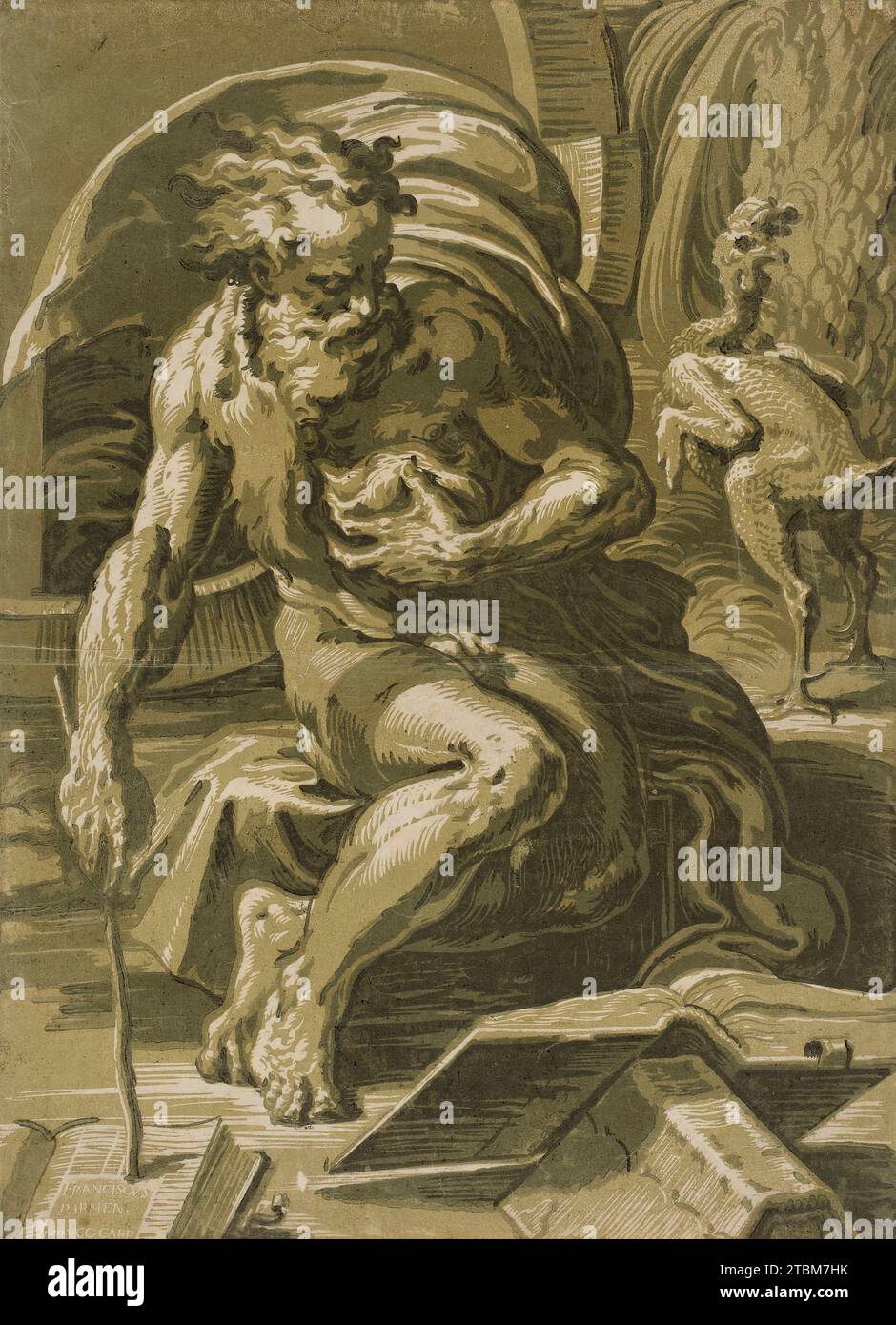Quick filters:
Diogenes the cynic Stock Photos and Images
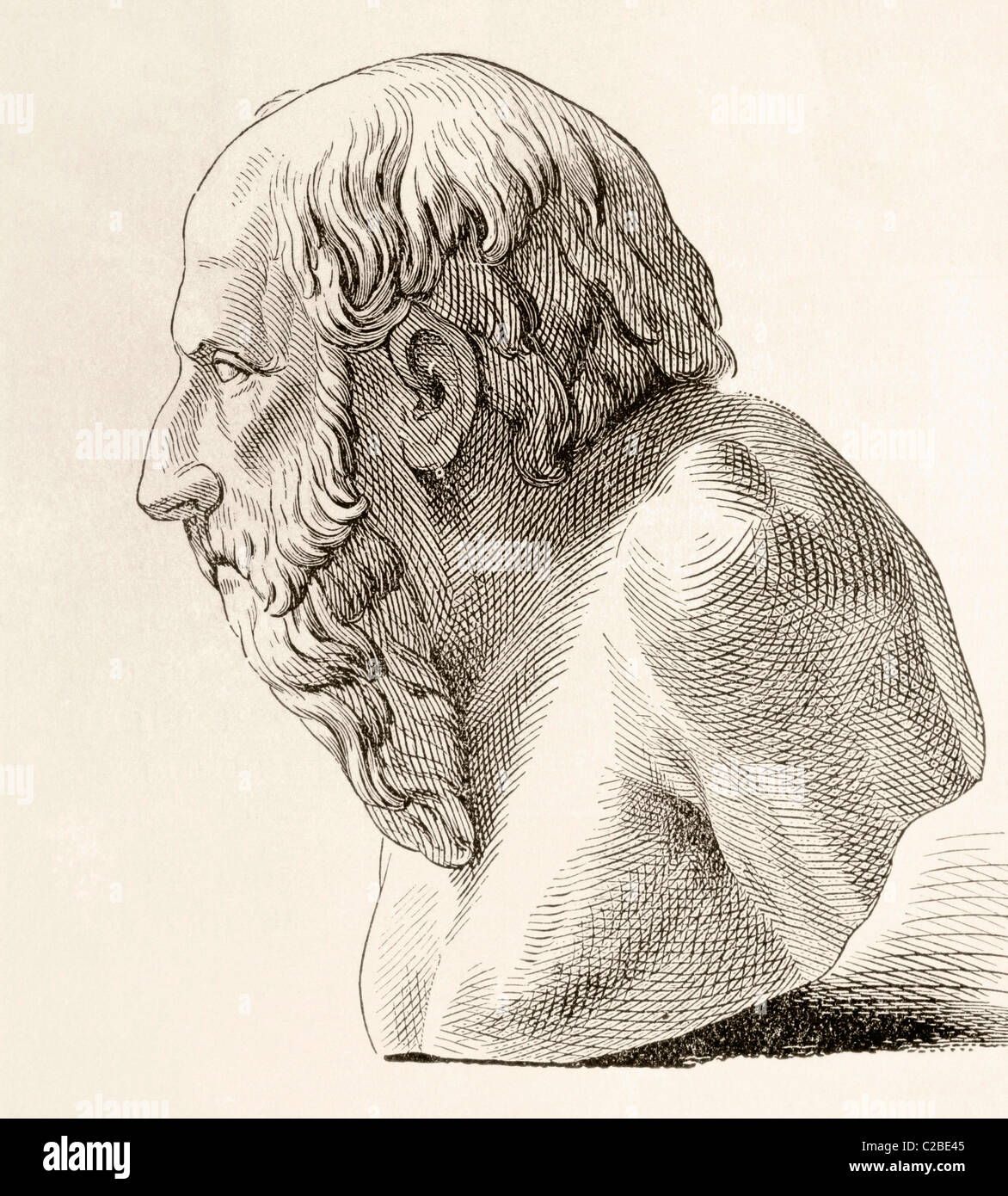 Diogenes of Sinope, aka Diogenes the Cynic, born circa 412 BC died 323 BC. Greek philosopher. Stock Photohttps://www.alamy.com/image-license-details/?v=1https://www.alamy.com/stock-photo-diogenes-of-sinope-aka-diogenes-the-cynic-born-circa-412-bc-died-323-35902613.html
Diogenes of Sinope, aka Diogenes the Cynic, born circa 412 BC died 323 BC. Greek philosopher. Stock Photohttps://www.alamy.com/image-license-details/?v=1https://www.alamy.com/stock-photo-diogenes-of-sinope-aka-diogenes-the-cynic-born-circa-412-bc-died-323-35902613.htmlRMC2BE45–Diogenes of Sinope, aka Diogenes the Cynic, born circa 412 BC died 323 BC. Greek philosopher.
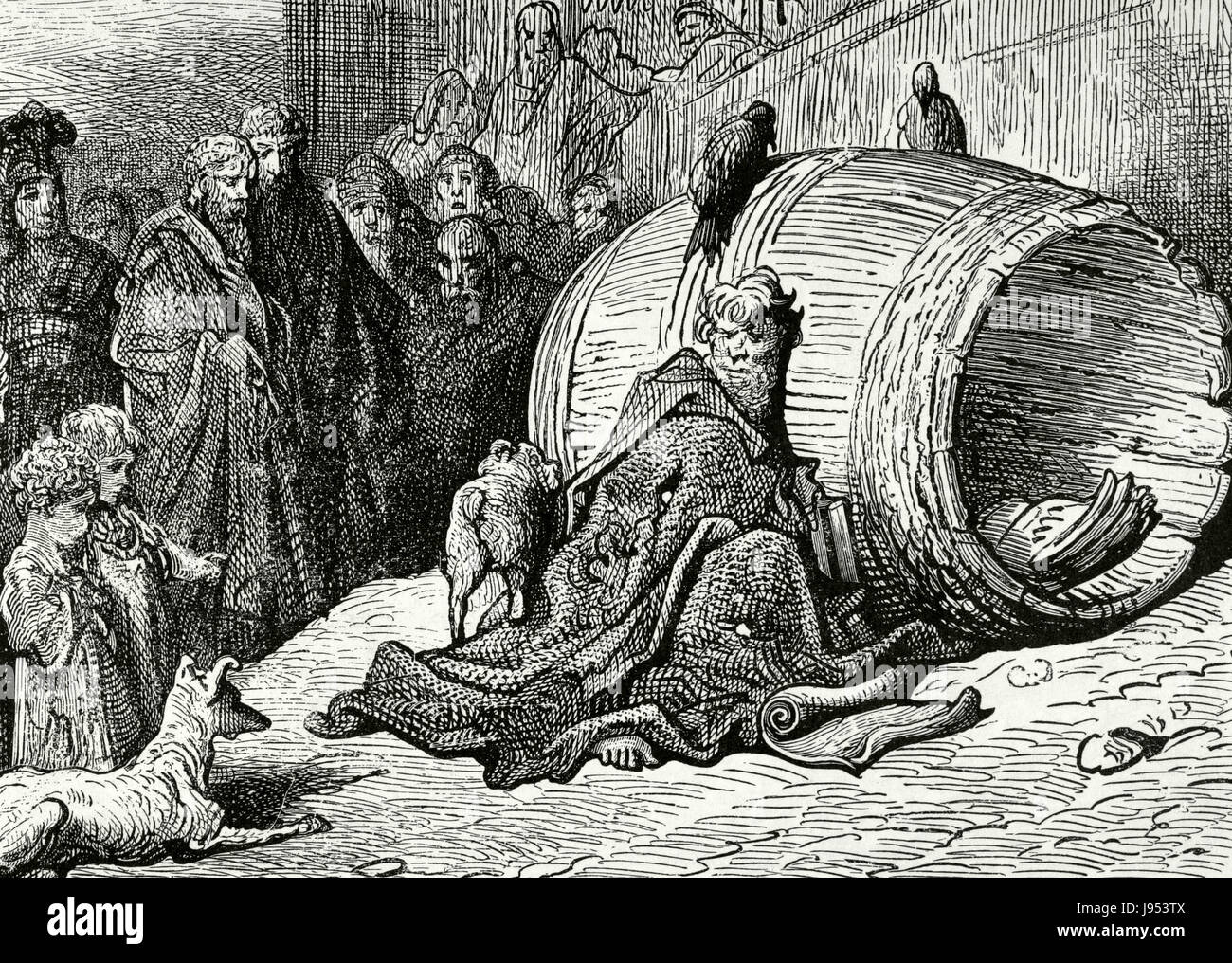 Diogenes (412-323 B.C.). Greek philosopher. One of the founders of Cynic philosophy. Also known as Diogenes the Cynic. Diogenes shelters in his barrel. Engraving by Gustave Dore. Stock Photohttps://www.alamy.com/image-license-details/?v=1https://www.alamy.com/stock-photo-diogenes-412-323-bc-greek-philosopher-one-of-the-founders-of-cynic-143327658.html
Diogenes (412-323 B.C.). Greek philosopher. One of the founders of Cynic philosophy. Also known as Diogenes the Cynic. Diogenes shelters in his barrel. Engraving by Gustave Dore. Stock Photohttps://www.alamy.com/image-license-details/?v=1https://www.alamy.com/stock-photo-diogenes-412-323-bc-greek-philosopher-one-of-the-founders-of-cynic-143327658.htmlRMJ953TX–Diogenes (412-323 B.C.). Greek philosopher. One of the founders of Cynic philosophy. Also known as Diogenes the Cynic. Diogenes shelters in his barrel. Engraving by Gustave Dore.
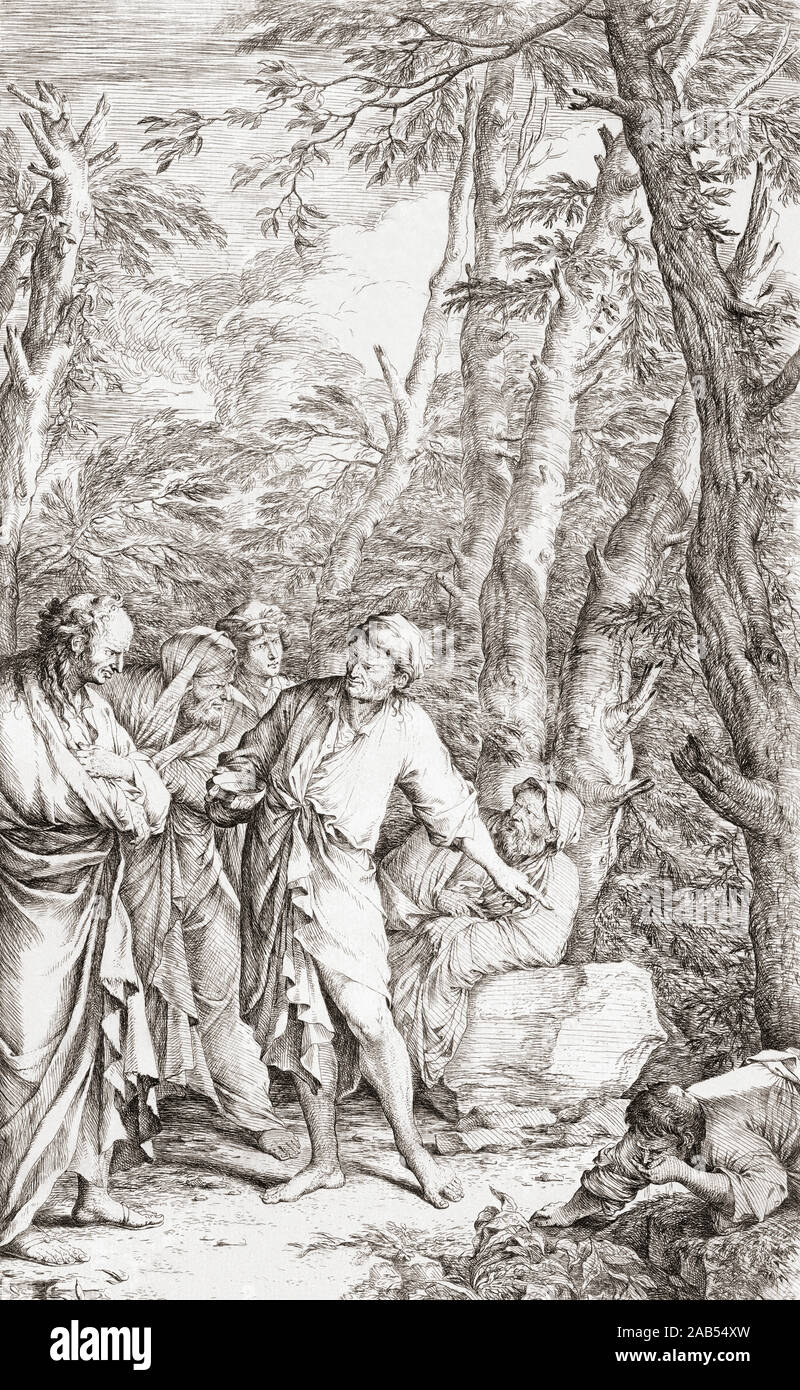 Greek philosopher Diogenes the Cynic c.400 BC -323 BC, about to throw away his cup which he considered merely an encumbrance after seeing a boy drinking from a stream using just his cupped hands. After an engraving by Salvator Rosa. Stock Photohttps://www.alamy.com/image-license-details/?v=1https://www.alamy.com/greek-philosopher-diogenes-the-cynic-c400-bc-323-bc-about-to-throw-away-his-cup-which-he-considered-merely-an-encumbrance-after-seeing-a-boy-drinking-from-a-stream-using-just-his-cupped-hands-after-an-engraving-by-salvator-rosa-image333871857.html
Greek philosopher Diogenes the Cynic c.400 BC -323 BC, about to throw away his cup which he considered merely an encumbrance after seeing a boy drinking from a stream using just his cupped hands. After an engraving by Salvator Rosa. Stock Photohttps://www.alamy.com/image-license-details/?v=1https://www.alamy.com/greek-philosopher-diogenes-the-cynic-c400-bc-323-bc-about-to-throw-away-his-cup-which-he-considered-merely-an-encumbrance-after-seeing-a-boy-drinking-from-a-stream-using-just-his-cupped-hands-after-an-engraving-by-salvator-rosa-image333871857.htmlRM2AB54XW–Greek philosopher Diogenes the Cynic c.400 BC -323 BC, about to throw away his cup which he considered merely an encumbrance after seeing a boy drinking from a stream using just his cupped hands. After an engraving by Salvator Rosa.
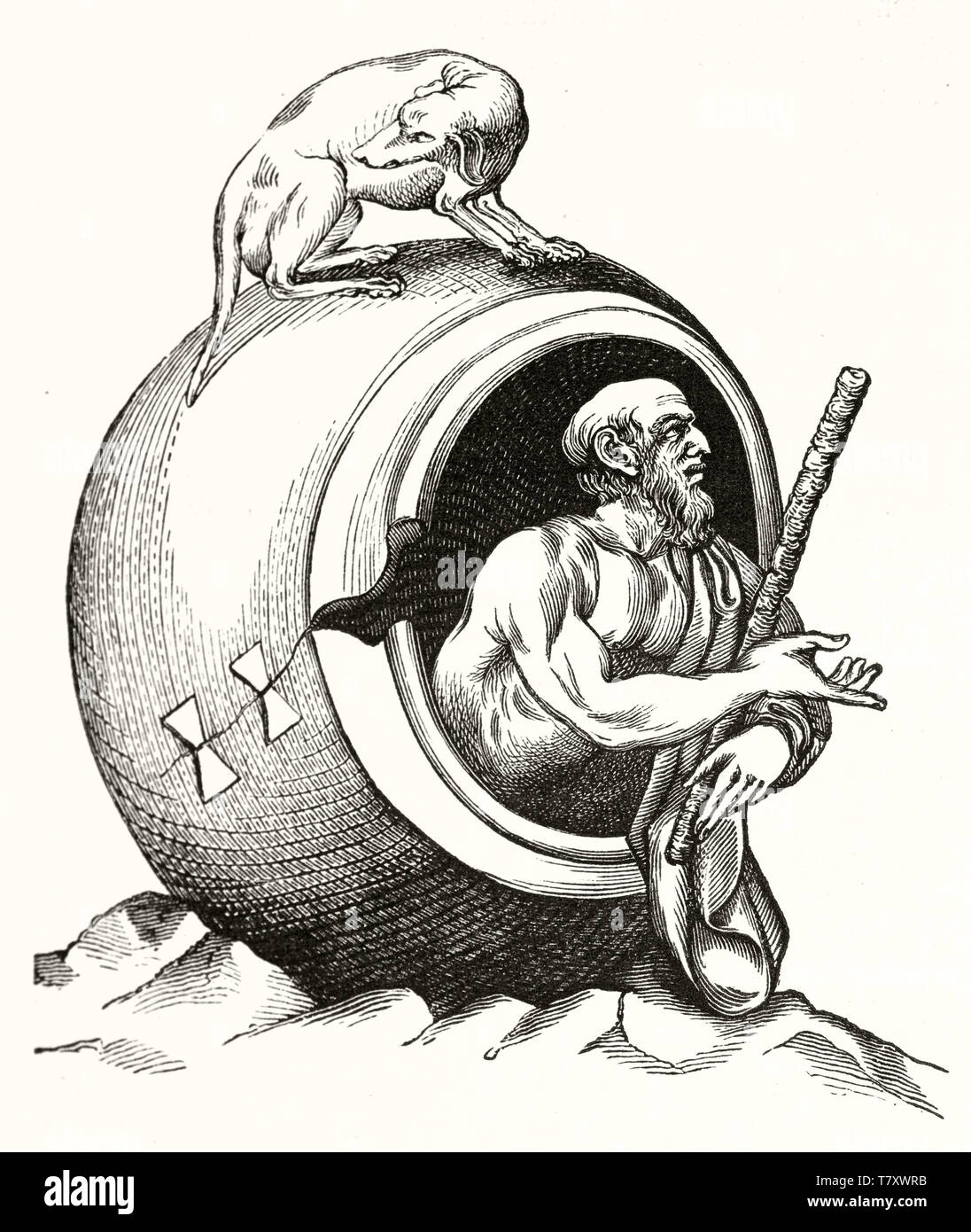 Old illustration depicting Diogenes, famous cinyc greek philosopher who lived in a ceramic jar. In this etching ther is a dog on top of the jar. Magasin Pittoresque Paris 1848 Diogenes Stock Photohttps://www.alamy.com/image-license-details/?v=1https://www.alamy.com/old-illustration-depicting-diogenes-famous-cinyc-greek-philosopher-who-lived-in-a-ceramic-jar-in-this-etching-ther-is-a-dog-on-top-of-the-jar-magasin-pittoresque-paris-1848-diogenes-image245838751.html
Old illustration depicting Diogenes, famous cinyc greek philosopher who lived in a ceramic jar. In this etching ther is a dog on top of the jar. Magasin Pittoresque Paris 1848 Diogenes Stock Photohttps://www.alamy.com/image-license-details/?v=1https://www.alamy.com/old-illustration-depicting-diogenes-famous-cinyc-greek-philosopher-who-lived-in-a-ceramic-jar-in-this-etching-ther-is-a-dog-on-top-of-the-jar-magasin-pittoresque-paris-1848-diogenes-image245838751.htmlRFT7XWRB–Old illustration depicting Diogenes, famous cinyc greek philosopher who lived in a ceramic jar. In this etching ther is a dog on top of the jar. Magasin Pittoresque Paris 1848 Diogenes
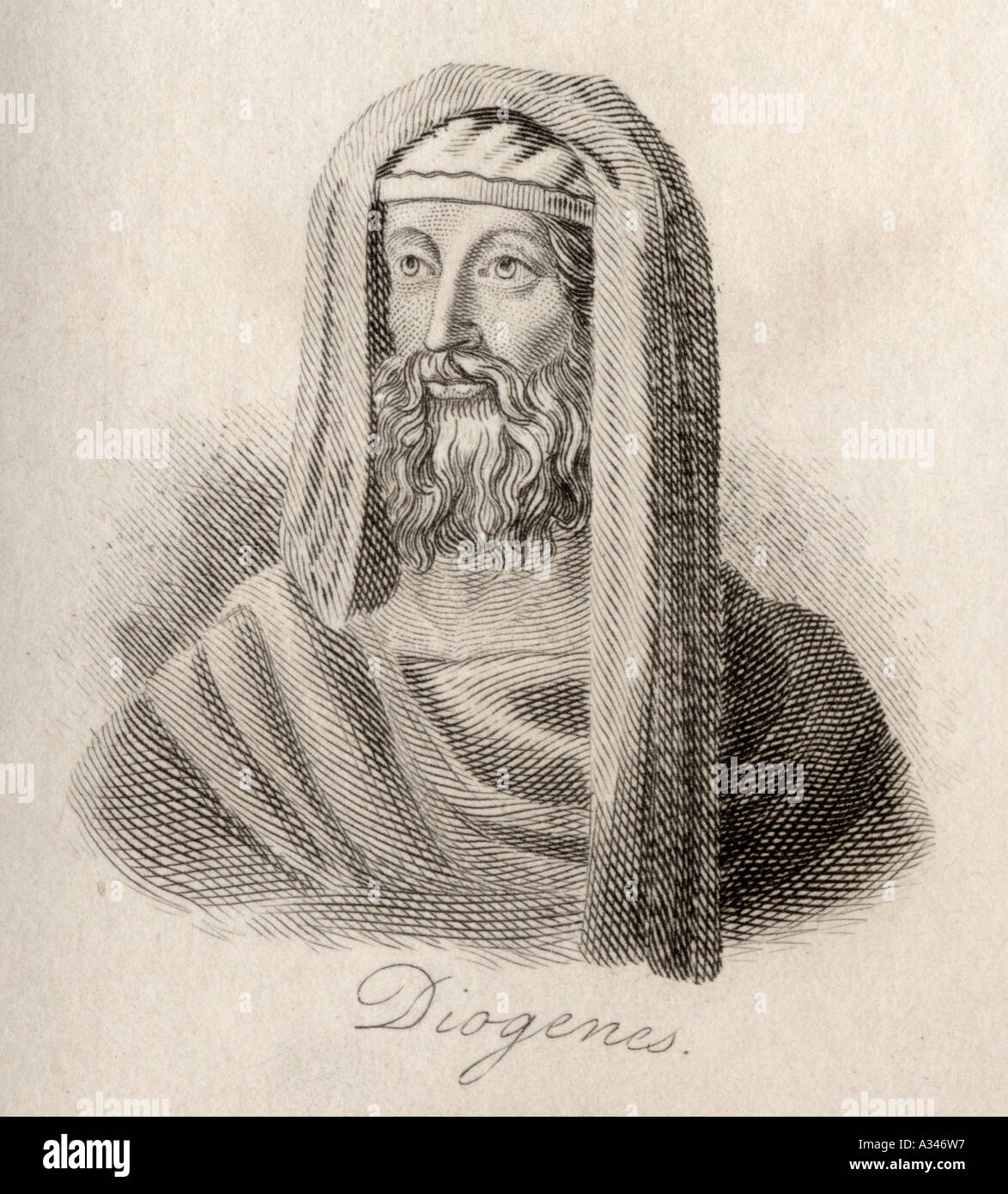 Diogenes of Sinope, aka Diogenes the Cynic, c.412 or 404 - 323 BC. Greek philosopher Stock Photohttps://www.alamy.com/image-license-details/?v=1https://www.alamy.com/diogenes-of-sinope-aka-diogenes-the-cynic-c412-or-404-323-bc-greek-image6094102.html
Diogenes of Sinope, aka Diogenes the Cynic, c.412 or 404 - 323 BC. Greek philosopher Stock Photohttps://www.alamy.com/image-license-details/?v=1https://www.alamy.com/diogenes-of-sinope-aka-diogenes-the-cynic-c412-or-404-323-bc-greek-image6094102.htmlRMA346W7–Diogenes of Sinope, aka Diogenes the Cynic, c.412 or 404 - 323 BC. Greek philosopher
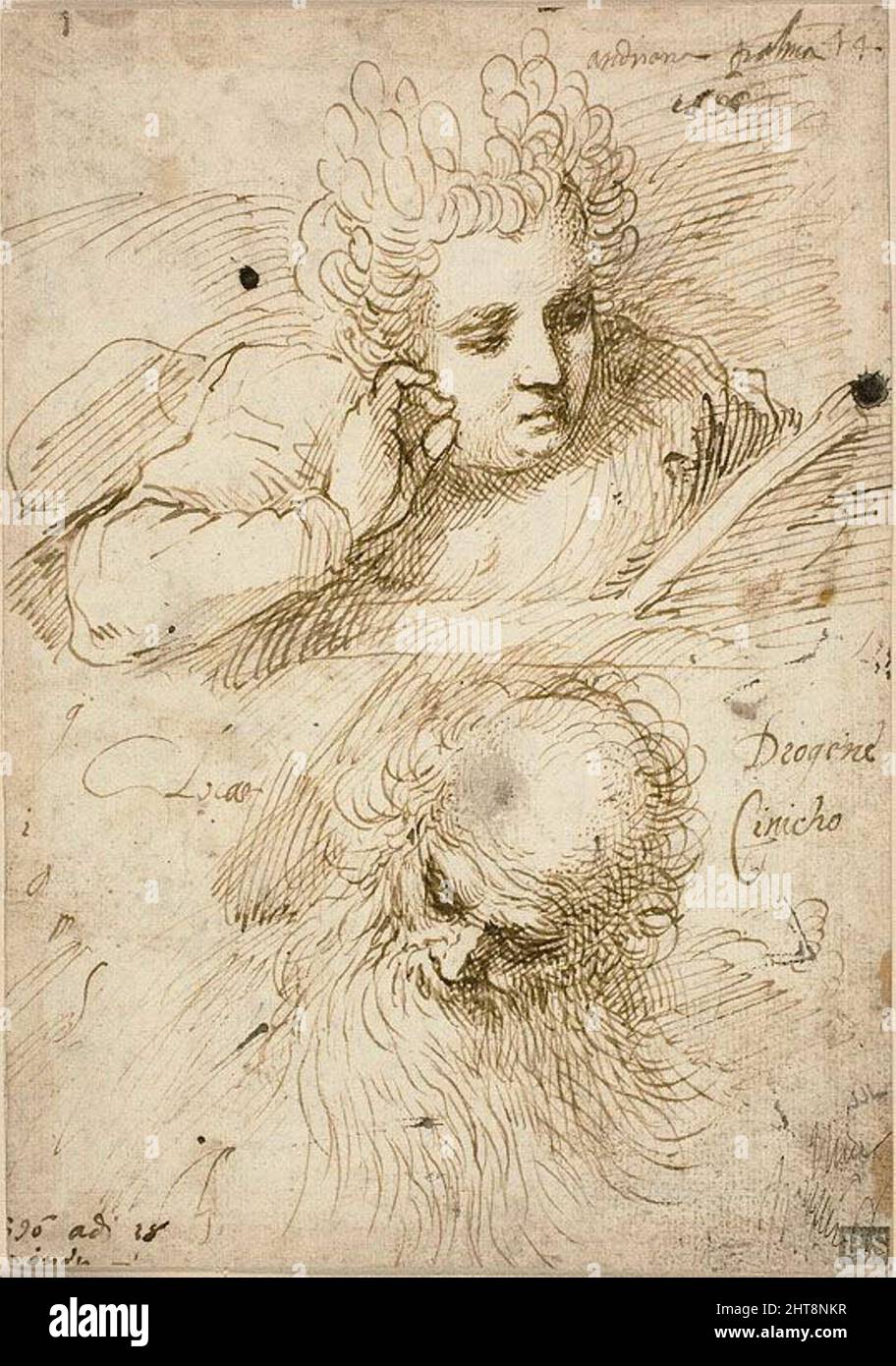 Andriana Palma and Diogenes the Cynic, 1596. Stock Photohttps://www.alamy.com/image-license-details/?v=1https://www.alamy.com/andriana-palma-and-diogenes-the-cynic-1596-image462413947.html
Andriana Palma and Diogenes the Cynic, 1596. Stock Photohttps://www.alamy.com/image-license-details/?v=1https://www.alamy.com/andriana-palma-and-diogenes-the-cynic-1596-image462413947.htmlRM2HT8NKR–Andriana Palma and Diogenes the Cynic, 1596.
 Diogenes (412-323 B.C.). Greek philosopher. One of the founders of Cynic philosophy. Also known as Diogenes the Cynic. Diogenes shelters in his barrel. Engraving by Gustave Dore. Stock Photohttps://www.alamy.com/image-license-details/?v=1https://www.alamy.com/diogenes-412-323-bc-greek-philosopher-one-of-the-founders-of-cynic-philosophy-also-known-as-diogenes-the-cynic-diogenes-shelters-in-his-barrel-engraving-by-gustave-dore-image220437425.html
Diogenes (412-323 B.C.). Greek philosopher. One of the founders of Cynic philosophy. Also known as Diogenes the Cynic. Diogenes shelters in his barrel. Engraving by Gustave Dore. Stock Photohttps://www.alamy.com/image-license-details/?v=1https://www.alamy.com/diogenes-412-323-bc-greek-philosopher-one-of-the-founders-of-cynic-philosophy-also-known-as-diogenes-the-cynic-diogenes-shelters-in-his-barrel-engraving-by-gustave-dore-image220437425.htmlRMPPHP55–Diogenes (412-323 B.C.). Greek philosopher. One of the founders of Cynic philosophy. Also known as Diogenes the Cynic. Diogenes shelters in his barrel. Engraving by Gustave Dore.
 Diogenes, Greek philosopher and one of the founders of Cynicism, c.404-323 BC. Diogenes the Cynic or Diogenes of Sinope. Copperplate engraving after an illustration by Joachim von Sandrart from his L’Academia Todesca, della Architectura, Scultura & Pittura, oder Teutsche Academie, der Edlen Bau- Bild- und Mahlerey-Kunste, German Academy of Architecture, Sculpture and Painting, Jacob von Sandrart, Nuremberg, 1675. Stock Photohttps://www.alamy.com/image-license-details/?v=1https://www.alamy.com/diogenes-greek-philosopher-and-one-of-the-founders-of-cynicism-c404-323-bc-diogenes-the-cynic-or-diogenes-of-sinope-copperplate-engraving-after-an-illustration-by-joachim-von-sandrart-from-his-lacademia-todesca-della-architectura-scultura-pittura-oder-teutsche-academie-der-edlen-bau-bild-und-mahlerey-kunste-german-academy-of-architecture-sculpture-and-painting-jacob-von-sandrart-nuremberg-1675-image551464433.html
Diogenes, Greek philosopher and one of the founders of Cynicism, c.404-323 BC. Diogenes the Cynic or Diogenes of Sinope. Copperplate engraving after an illustration by Joachim von Sandrart from his L’Academia Todesca, della Architectura, Scultura & Pittura, oder Teutsche Academie, der Edlen Bau- Bild- und Mahlerey-Kunste, German Academy of Architecture, Sculpture and Painting, Jacob von Sandrart, Nuremberg, 1675. Stock Photohttps://www.alamy.com/image-license-details/?v=1https://www.alamy.com/diogenes-greek-philosopher-and-one-of-the-founders-of-cynicism-c404-323-bc-diogenes-the-cynic-or-diogenes-of-sinope-copperplate-engraving-after-an-illustration-by-joachim-von-sandrart-from-his-lacademia-todesca-della-architectura-scultura-pittura-oder-teutsche-academie-der-edlen-bau-bild-und-mahlerey-kunste-german-academy-of-architecture-sculpture-and-painting-jacob-von-sandrart-nuremberg-1675-image551464433.htmlRM2R15AE9–Diogenes, Greek philosopher and one of the founders of Cynicism, c.404-323 BC. Diogenes the Cynic or Diogenes of Sinope. Copperplate engraving after an illustration by Joachim von Sandrart from his L’Academia Todesca, della Architectura, Scultura & Pittura, oder Teutsche Academie, der Edlen Bau- Bild- und Mahlerey-Kunste, German Academy of Architecture, Sculpture and Painting, Jacob von Sandrart, Nuremberg, 1675.
 Marble bust of Diogenes - ancient Greek philosopher. Photography from the mid-20th century. Stock Photohttps://www.alamy.com/image-license-details/?v=1https://www.alamy.com/marble-bust-of-diogenes-ancient-greek-philosopher-photography-from-the-mid-20th-century-image608546434.html
Marble bust of Diogenes - ancient Greek philosopher. Photography from the mid-20th century. Stock Photohttps://www.alamy.com/image-license-details/?v=1https://www.alamy.com/marble-bust-of-diogenes-ancient-greek-philosopher-photography-from-the-mid-20th-century-image608546434.htmlRM2XA1K56–Marble bust of Diogenes - ancient Greek philosopher. Photography from the mid-20th century.
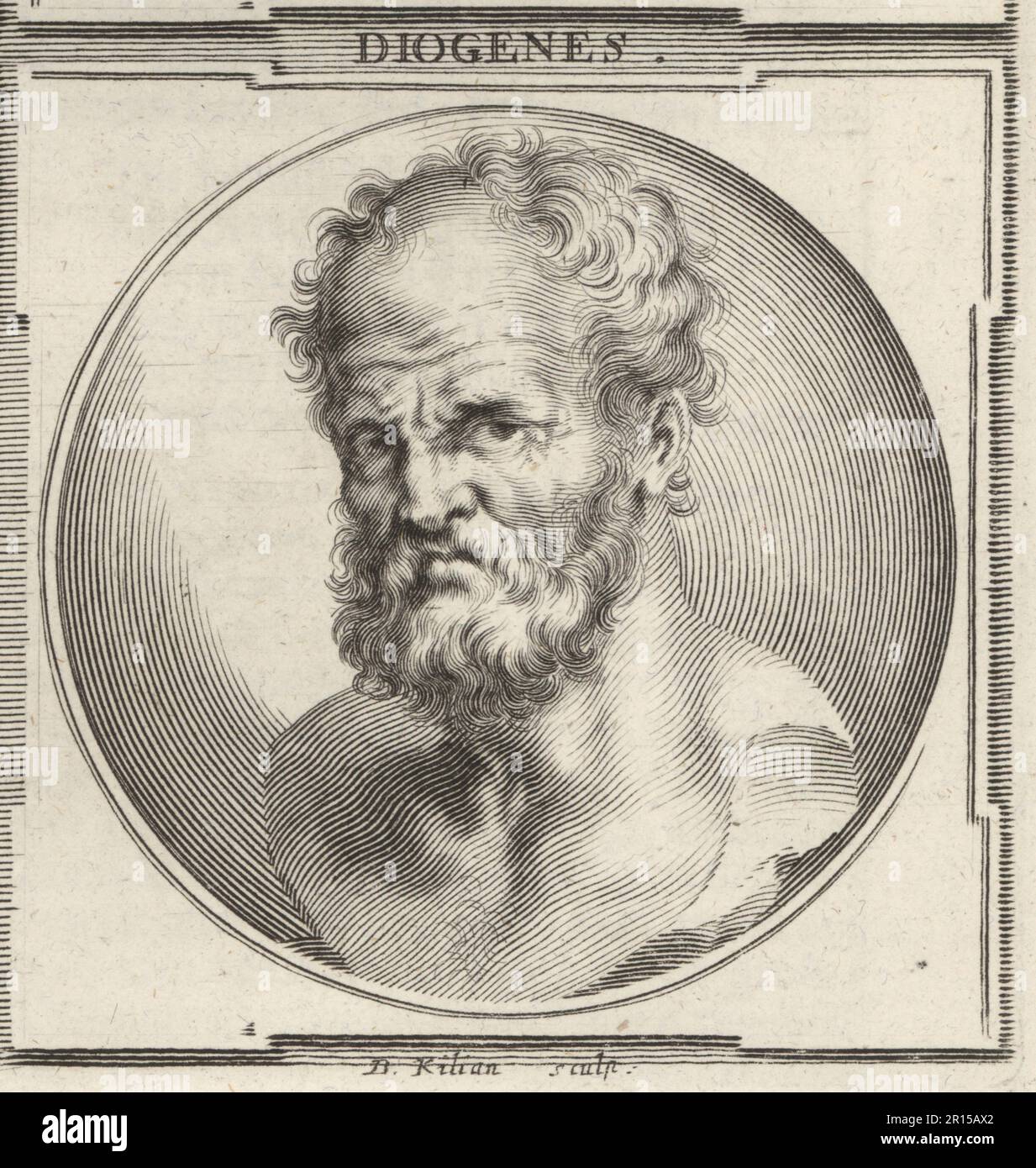 Diogenes, also known as Diogenes the Cynic or Diogenes of Sinope, Greek philosopher, one of the founders of Cynicism, c.412-323 BC. Diogenes. Copperplate engraving by Bartholomaus Kilian after an illustration by Joachim von Sandrart from his L’Academia Todesca, della Architectura, Scultura & Pittura, oder Teutsche Academie, der Edlen Bau- Bild- und Mahlerey-Kunste, German Academy of Architecture, Sculpture and Painting, Jacob von Sandrart, Nuremberg, 1675. Stock Photohttps://www.alamy.com/image-license-details/?v=1https://www.alamy.com/diogenes-also-known-as-diogenes-the-cynic-or-diogenes-of-sinope-greek-philosopher-one-of-the-founders-of-cynicism-c412-323-bc-diogenes-copperplate-engraving-by-bartholomaus-kilian-after-an-illustration-by-joachim-von-sandrart-from-his-lacademia-todesca-della-architectura-scultura-pittura-oder-teutsche-academie-der-edlen-bau-bild-und-mahlerey-kunste-german-academy-of-architecture-sculpture-and-painting-jacob-von-sandrart-nuremberg-1675-image551464762.html
Diogenes, also known as Diogenes the Cynic or Diogenes of Sinope, Greek philosopher, one of the founders of Cynicism, c.412-323 BC. Diogenes. Copperplate engraving by Bartholomaus Kilian after an illustration by Joachim von Sandrart from his L’Academia Todesca, della Architectura, Scultura & Pittura, oder Teutsche Academie, der Edlen Bau- Bild- und Mahlerey-Kunste, German Academy of Architecture, Sculpture and Painting, Jacob von Sandrart, Nuremberg, 1675. Stock Photohttps://www.alamy.com/image-license-details/?v=1https://www.alamy.com/diogenes-also-known-as-diogenes-the-cynic-or-diogenes-of-sinope-greek-philosopher-one-of-the-founders-of-cynicism-c412-323-bc-diogenes-copperplate-engraving-by-bartholomaus-kilian-after-an-illustration-by-joachim-von-sandrart-from-his-lacademia-todesca-della-architectura-scultura-pittura-oder-teutsche-academie-der-edlen-bau-bild-und-mahlerey-kunste-german-academy-of-architecture-sculpture-and-painting-jacob-von-sandrart-nuremberg-1675-image551464762.htmlRM2R15AX2–Diogenes, also known as Diogenes the Cynic or Diogenes of Sinope, Greek philosopher, one of the founders of Cynicism, c.412-323 BC. Diogenes. Copperplate engraving by Bartholomaus Kilian after an illustration by Joachim von Sandrart from his L’Academia Todesca, della Architectura, Scultura & Pittura, oder Teutsche Academie, der Edlen Bau- Bild- und Mahlerey-Kunste, German Academy of Architecture, Sculpture and Painting, Jacob von Sandrart, Nuremberg, 1675.
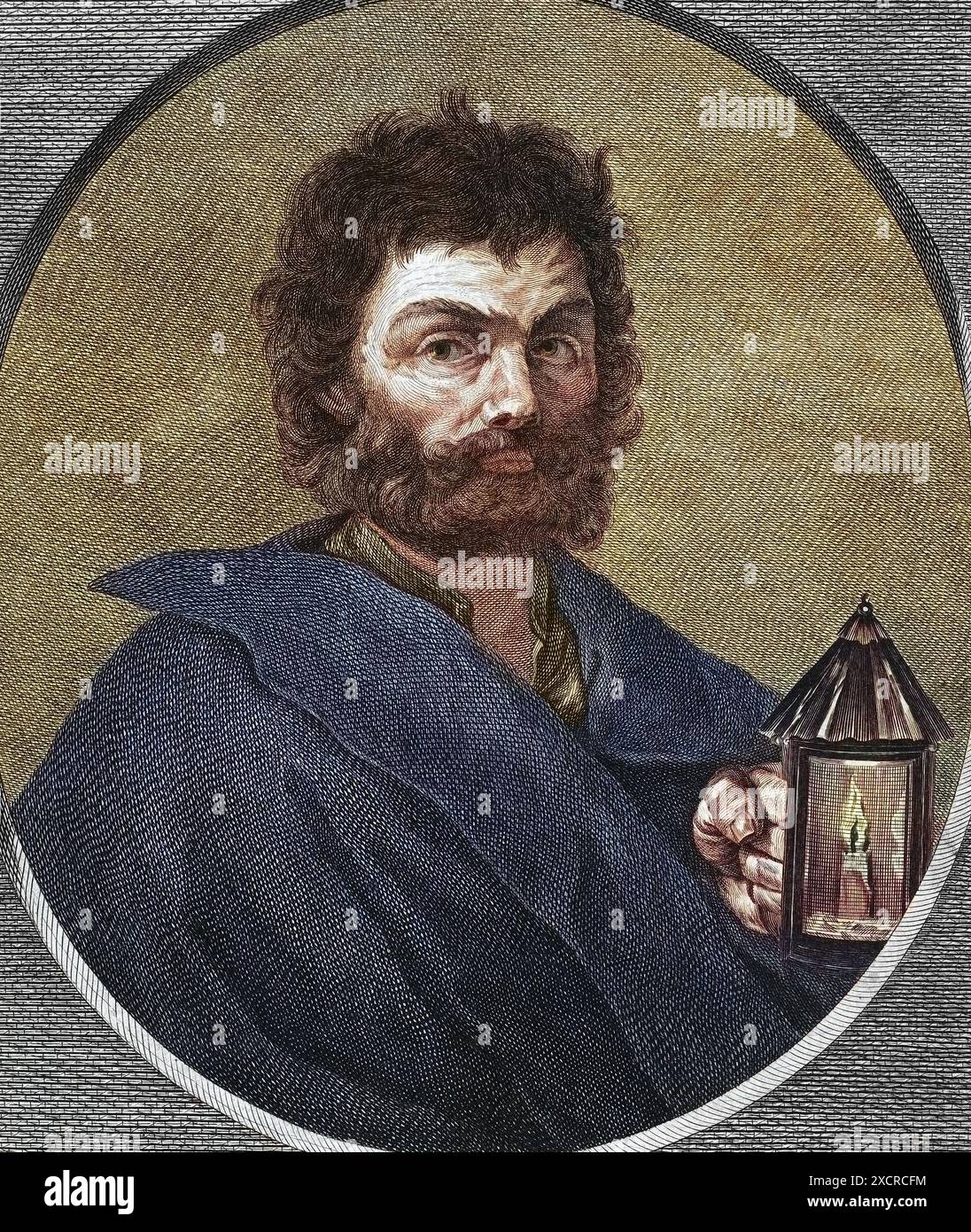 Diogenes, Greek Cynic Philosopher Stock Photohttps://www.alamy.com/image-license-details/?v=1https://www.alamy.com/diogenes-greek-cynic-philosopher-image610253496.html
Diogenes, Greek Cynic Philosopher Stock Photohttps://www.alamy.com/image-license-details/?v=1https://www.alamy.com/diogenes-greek-cynic-philosopher-image610253496.htmlRM2XCRCFM–Diogenes, Greek Cynic Philosopher
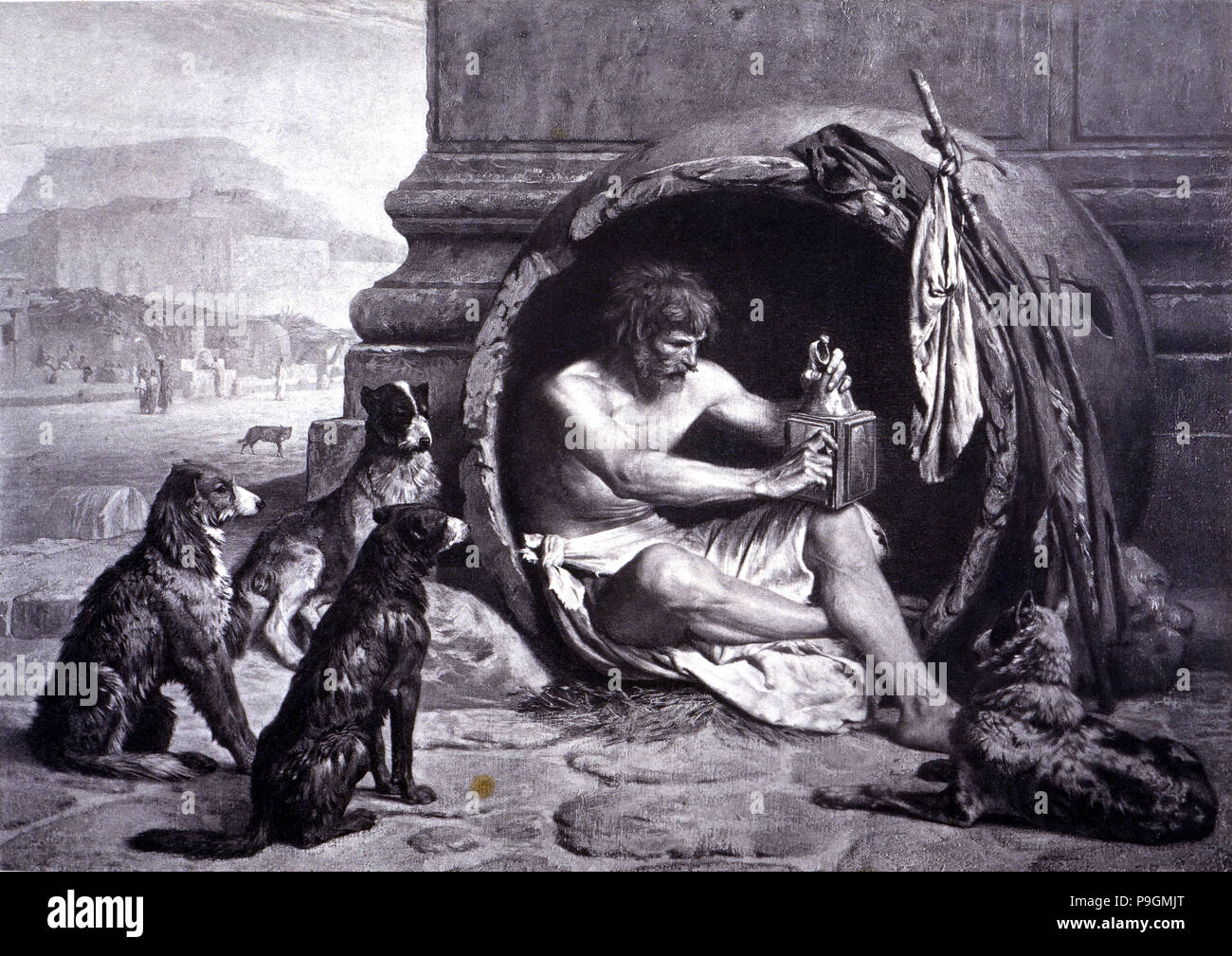 Diogenes 'the Cynic' (413-327 a.BC), Greek philosopher, engraving of 1880. Stock Photohttps://www.alamy.com/image-license-details/?v=1https://www.alamy.com/diogenes-the-cynic-413-327-abc-greek-philosopher-engraving-of-1880-image212423760.html
Diogenes 'the Cynic' (413-327 a.BC), Greek philosopher, engraving of 1880. Stock Photohttps://www.alamy.com/image-license-details/?v=1https://www.alamy.com/diogenes-the-cynic-413-327-abc-greek-philosopher-engraving-of-1880-image212423760.htmlRMP9GMJT–Diogenes 'the Cynic' (413-327 a.BC), Greek philosopher, engraving of 1880.
 Ancient Greek cynic philosopher Diogenes, holding a lantern. Engraving after Jusepe de Ribera (called Lo Spagnoletto), circa 1750-69. Stock Photohttps://www.alamy.com/image-license-details/?v=1https://www.alamy.com/ancient-greek-cynic-philosopher-diogenes-holding-a-lantern-engraving-after-jusepe-de-ribera-called-lo-spagnoletto-circa-1750-69-image560416764.html
Ancient Greek cynic philosopher Diogenes, holding a lantern. Engraving after Jusepe de Ribera (called Lo Spagnoletto), circa 1750-69. Stock Photohttps://www.alamy.com/image-license-details/?v=1https://www.alamy.com/ancient-greek-cynic-philosopher-diogenes-holding-a-lantern-engraving-after-jusepe-de-ribera-called-lo-spagnoletto-circa-1750-69-image560416764.htmlRM2RFN58C–Ancient Greek cynic philosopher Diogenes, holding a lantern. Engraving after Jusepe de Ribera (called Lo Spagnoletto), circa 1750-69.
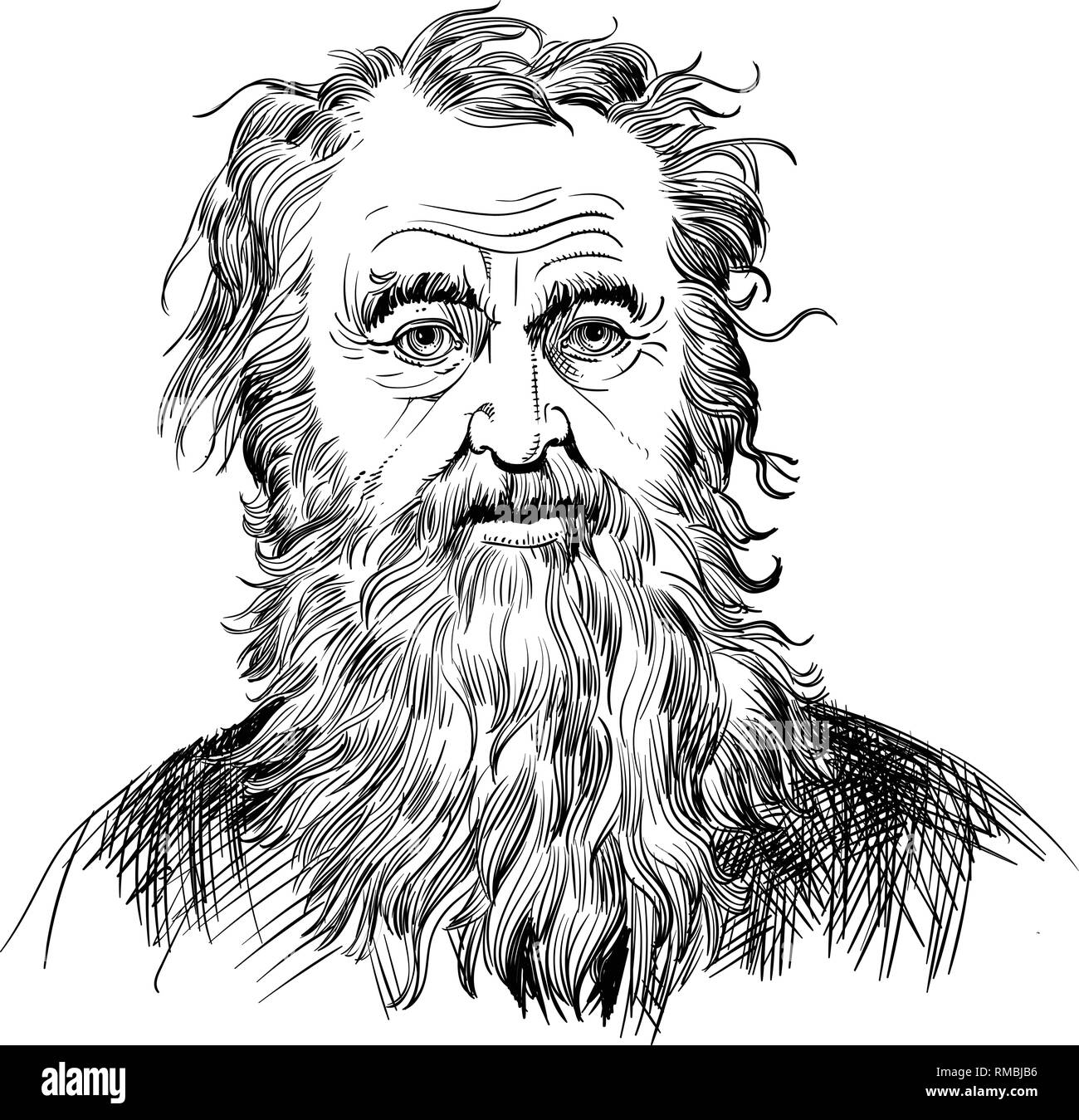 Diogenes the Cynic portrait in line art illustration. He was ancient Greek philosopher, one of the founders of the Cynic philosophy. Stock Vectorhttps://www.alamy.com/image-license-details/?v=1https://www.alamy.com/diogenes-the-cynic-portrait-in-line-art-illustration-he-was-ancient-greek-philosopher-one-of-the-founders-of-the-cynic-philosophy-image236283802.html
Diogenes the Cynic portrait in line art illustration. He was ancient Greek philosopher, one of the founders of the Cynic philosophy. Stock Vectorhttps://www.alamy.com/image-license-details/?v=1https://www.alamy.com/diogenes-the-cynic-portrait-in-line-art-illustration-he-was-ancient-greek-philosopher-one-of-the-founders-of-the-cynic-philosophy-image236283802.htmlRFRMBJB6–Diogenes the Cynic portrait in line art illustration. He was ancient Greek philosopher, one of the founders of the Cynic philosophy.
 Ancient Greek cynic philosopher Diogenes, holding a lantern. Engraving after Jusepe de Ribera (called Lo Spagnoletto), circa 1750-69. Colorized. Stock Photohttps://www.alamy.com/image-license-details/?v=1https://www.alamy.com/ancient-greek-cynic-philosopher-diogenes-holding-a-lantern-engraving-after-jusepe-de-ribera-called-lo-spagnoletto-circa-1750-69-colorized-image560417340.html
Ancient Greek cynic philosopher Diogenes, holding a lantern. Engraving after Jusepe de Ribera (called Lo Spagnoletto), circa 1750-69. Colorized. Stock Photohttps://www.alamy.com/image-license-details/?v=1https://www.alamy.com/ancient-greek-cynic-philosopher-diogenes-holding-a-lantern-engraving-after-jusepe-de-ribera-called-lo-spagnoletto-circa-1750-69-colorized-image560417340.htmlRF2RFN610–Ancient Greek cynic philosopher Diogenes, holding a lantern. Engraving after Jusepe de Ribera (called Lo Spagnoletto), circa 1750-69. Colorized.
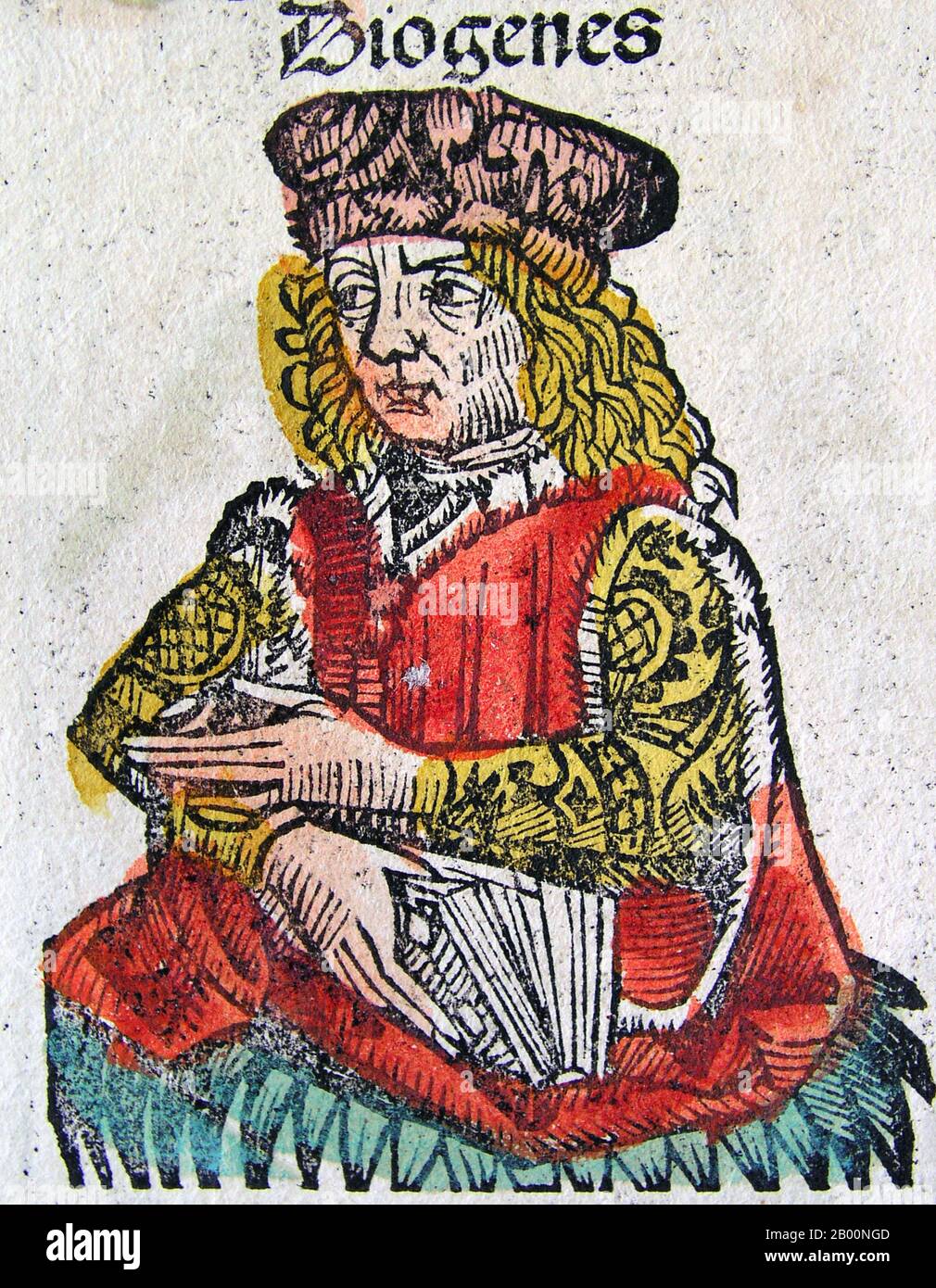 Germany: 'Diogenes'. The Nuremberg Chronicle, by Hartmann Schedel (1440-1514), 1493. The Nuremberg Chronicle is an illustrated world history. Its structure follows the story of human history as related in the Bible, including the histories of a number of important Western cities. Written in Latin by Hartmann Schedel, with a version in German translation by Georg Alt, it appeared in 1493. It is one of the best-documented early printed books. It is classified as an incunabulum, a book, pamphlet, or broadside that was printed (not handwritten) before the year 1501 in Europe. Stock Photohttps://www.alamy.com/image-license-details/?v=1https://www.alamy.com/germany-diogenes-the-nuremberg-chronicle-by-hartmann-schedel-1440-1514-1493-the-nuremberg-chronicle-is-an-illustrated-world-history-its-structure-follows-the-story-of-human-history-as-related-in-the-bible-including-the-histories-of-a-number-of-important-western-cities-written-in-latin-by-hartmann-schedel-with-a-version-in-german-translation-by-georg-alt-it-appeared-in-1493-it-is-one-of-the-best-documented-early-printed-books-it-is-classified-as-an-incunabulum-a-book-pamphlet-or-broadside-that-was-printed-not-handwritten-before-the-year-1501-in-europe-image344224285.html
Germany: 'Diogenes'. The Nuremberg Chronicle, by Hartmann Schedel (1440-1514), 1493. The Nuremberg Chronicle is an illustrated world history. Its structure follows the story of human history as related in the Bible, including the histories of a number of important Western cities. Written in Latin by Hartmann Schedel, with a version in German translation by Georg Alt, it appeared in 1493. It is one of the best-documented early printed books. It is classified as an incunabulum, a book, pamphlet, or broadside that was printed (not handwritten) before the year 1501 in Europe. Stock Photohttps://www.alamy.com/image-license-details/?v=1https://www.alamy.com/germany-diogenes-the-nuremberg-chronicle-by-hartmann-schedel-1440-1514-1493-the-nuremberg-chronicle-is-an-illustrated-world-history-its-structure-follows-the-story-of-human-history-as-related-in-the-bible-including-the-histories-of-a-number-of-important-western-cities-written-in-latin-by-hartmann-schedel-with-a-version-in-german-translation-by-georg-alt-it-appeared-in-1493-it-is-one-of-the-best-documented-early-printed-books-it-is-classified-as-an-incunabulum-a-book-pamphlet-or-broadside-that-was-printed-not-handwritten-before-the-year-1501-in-europe-image344224285.htmlRM2B00NGD–Germany: 'Diogenes'. The Nuremberg Chronicle, by Hartmann Schedel (1440-1514), 1493. The Nuremberg Chronicle is an illustrated world history. Its structure follows the story of human history as related in the Bible, including the histories of a number of important Western cities. Written in Latin by Hartmann Schedel, with a version in German translation by Georg Alt, it appeared in 1493. It is one of the best-documented early printed books. It is classified as an incunabulum, a book, pamphlet, or broadside that was printed (not handwritten) before the year 1501 in Europe.
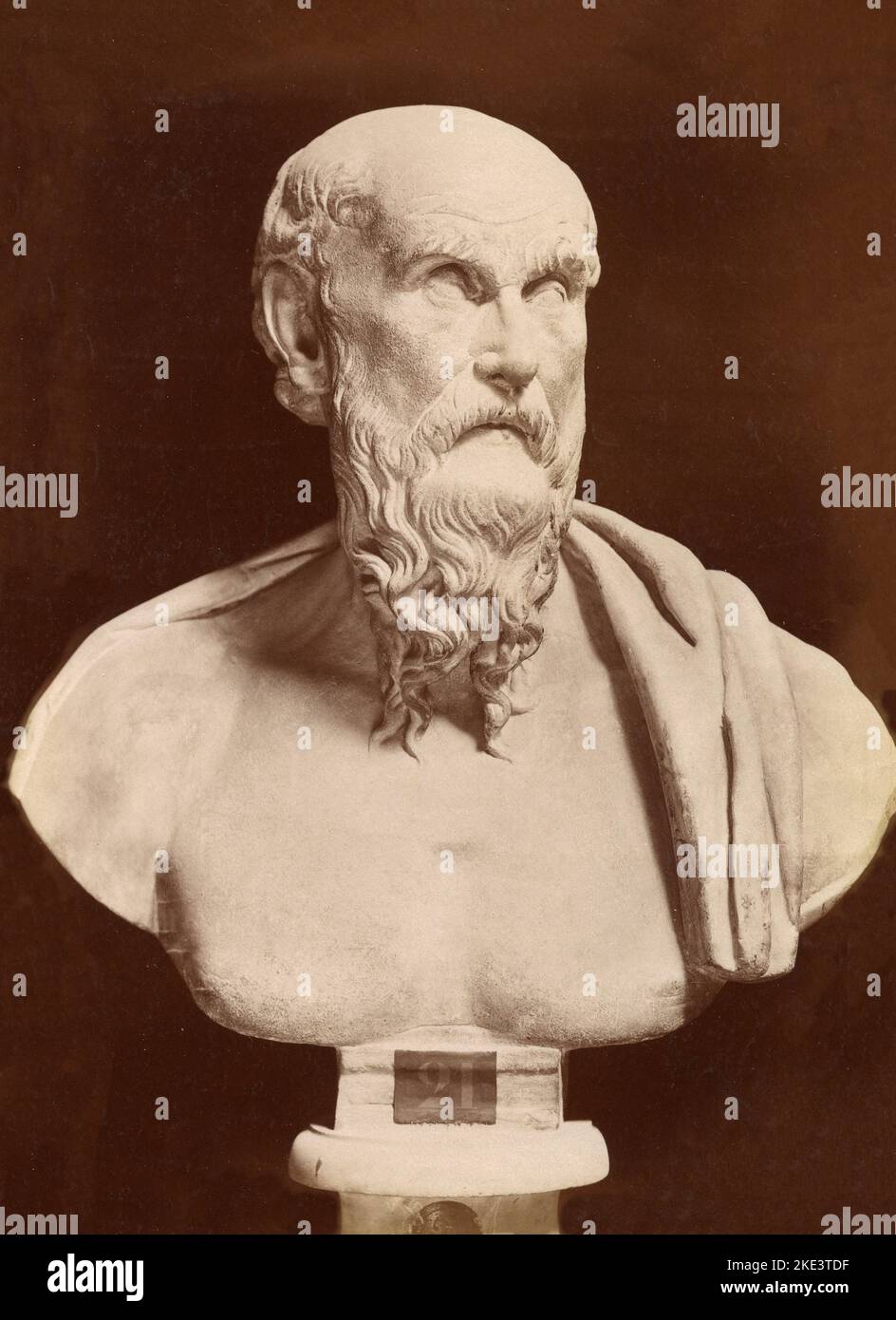 Head statue of Greek philosopher Diogenes the Cynic, 1890s Stock Photohttps://www.alamy.com/image-license-details/?v=1https://www.alamy.com/head-statue-of-greek-philosopher-diogenes-the-cynic-1890s-image490580539.html
Head statue of Greek philosopher Diogenes the Cynic, 1890s Stock Photohttps://www.alamy.com/image-license-details/?v=1https://www.alamy.com/head-statue-of-greek-philosopher-diogenes-the-cynic-1890s-image490580539.htmlRM2KE3TDF–Head statue of Greek philosopher Diogenes the Cynic, 1890s
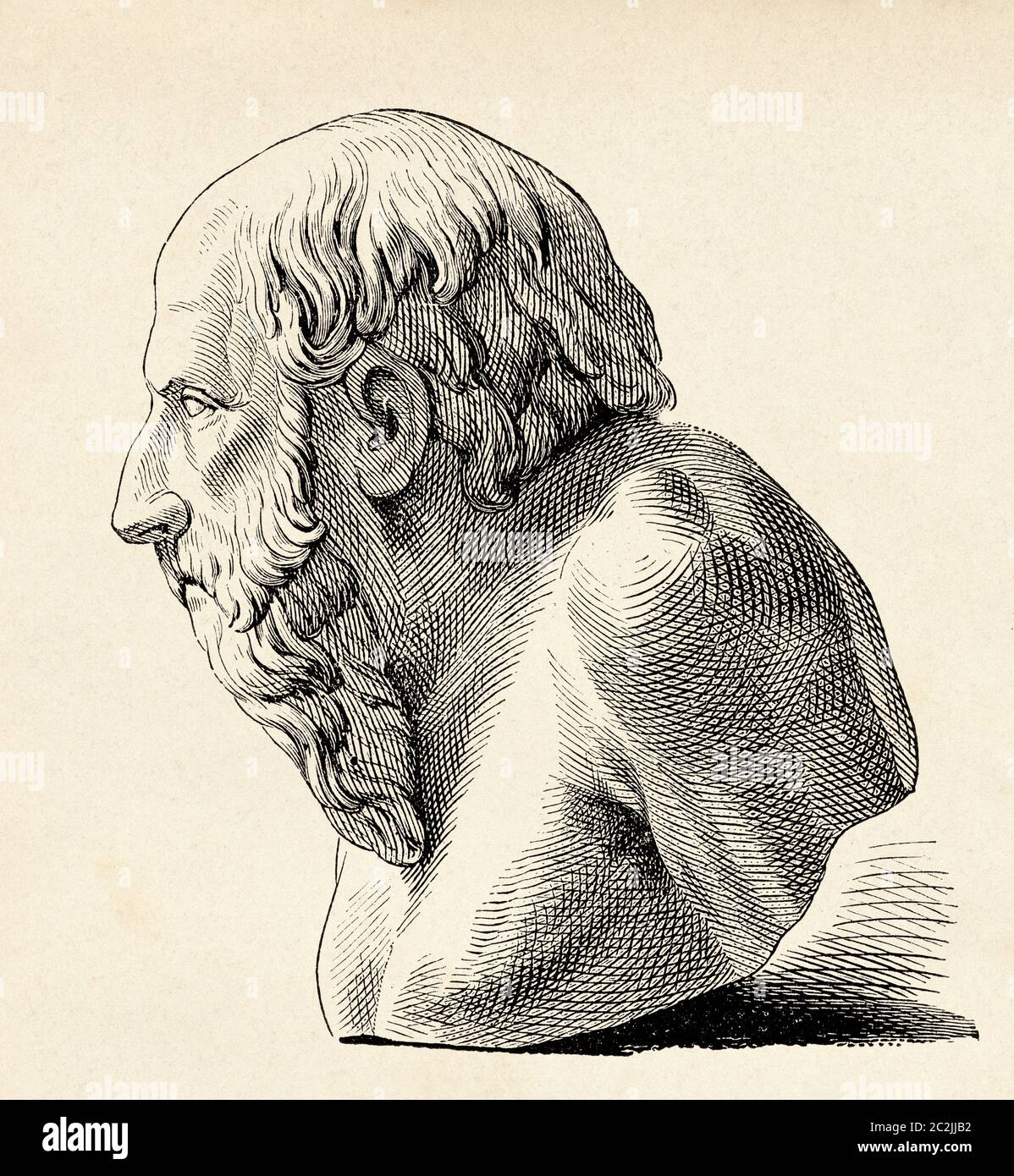 Diogenes of Sinope, aka Diogenes the Cynic, born circa 412 BC died 323 BC Greek philosopher belonging to the Cynic school. Ancient Greece. Old 19th century engraved illustration, El Mundo Ilustrado 1880 Stock Photohttps://www.alamy.com/image-license-details/?v=1https://www.alamy.com/diogenes-of-sinope-aka-diogenes-the-cynic-born-circa-412-bc-died-323-bc-greek-philosopher-belonging-to-the-cynic-school-ancient-greece-old-19th-century-engraved-illustration-el-mundo-ilustrado-1880-image363056598.html
Diogenes of Sinope, aka Diogenes the Cynic, born circa 412 BC died 323 BC Greek philosopher belonging to the Cynic school. Ancient Greece. Old 19th century engraved illustration, El Mundo Ilustrado 1880 Stock Photohttps://www.alamy.com/image-license-details/?v=1https://www.alamy.com/diogenes-of-sinope-aka-diogenes-the-cynic-born-circa-412-bc-died-323-bc-greek-philosopher-belonging-to-the-cynic-school-ancient-greece-old-19th-century-engraved-illustration-el-mundo-ilustrado-1880-image363056598.htmlRM2C2JJB2–Diogenes of Sinope, aka Diogenes the Cynic, born circa 412 BC died 323 BC Greek philosopher belonging to the Cynic school. Ancient Greece. Old 19th century engraved illustration, El Mundo Ilustrado 1880
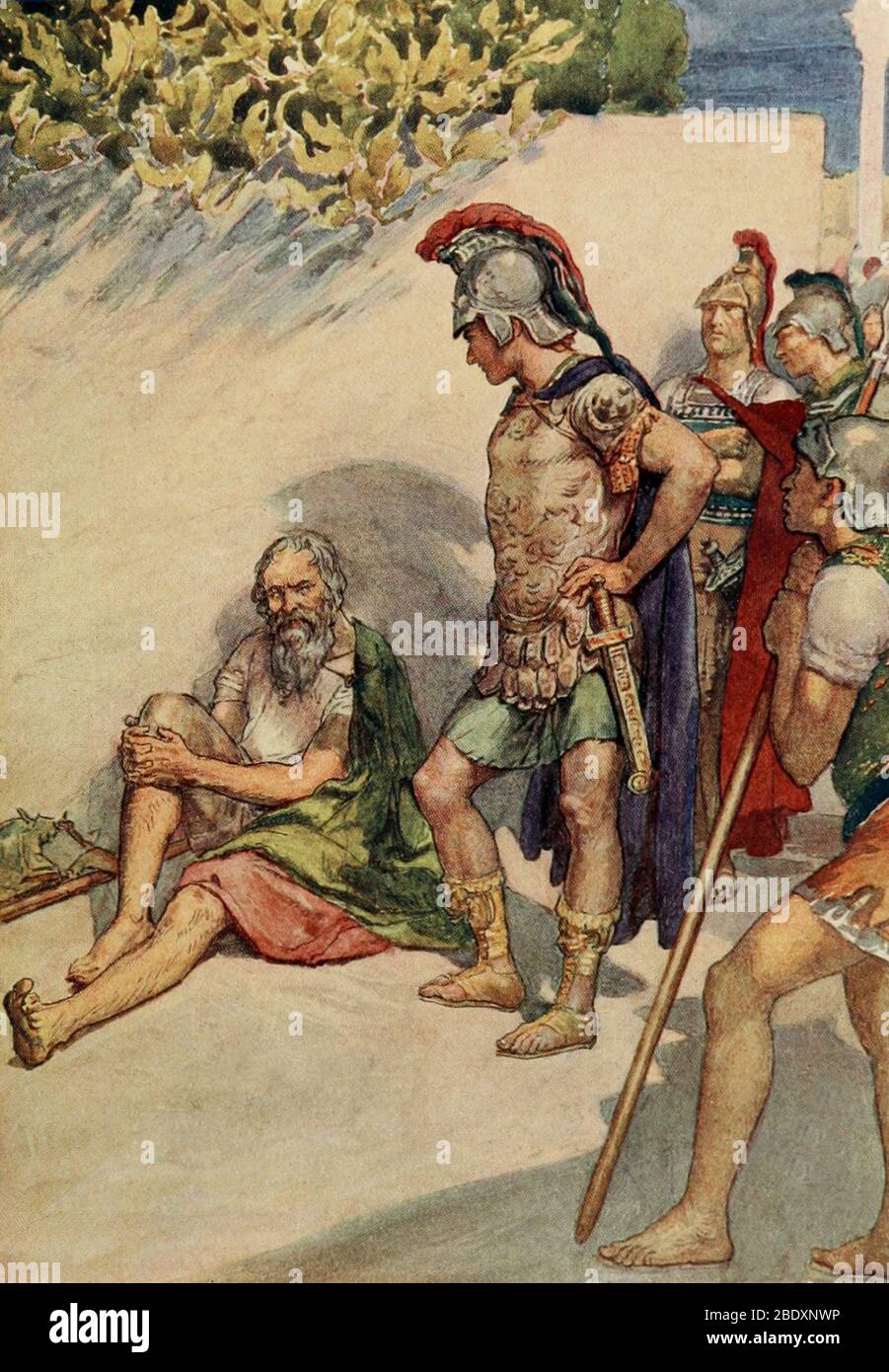 Diogenes and Alexander the Great, 4th Century BC Stock Photohttps://www.alamy.com/image-license-details/?v=1https://www.alamy.com/diogenes-and-alexander-the-great-4th-century-bc-image352785826.html
Diogenes and Alexander the Great, 4th Century BC Stock Photohttps://www.alamy.com/image-license-details/?v=1https://www.alamy.com/diogenes-and-alexander-the-great-4th-century-bc-image352785826.htmlRF2BDXNWP–Diogenes and Alexander the Great, 4th Century BC
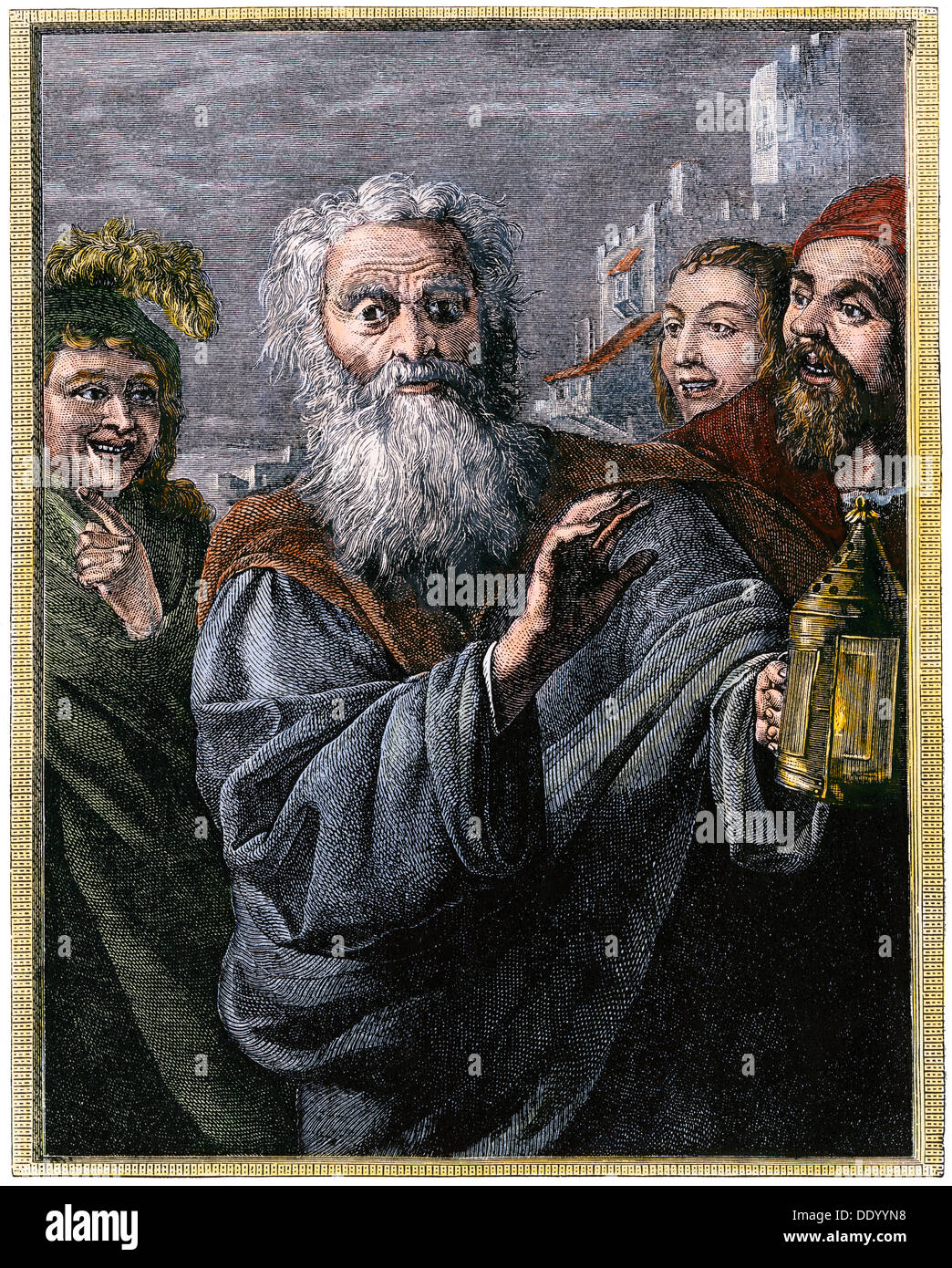 Diogenes in search of an honest man, ancient Greece. Hand-colored woodcut Stock Photohttps://www.alamy.com/image-license-details/?v=1https://www.alamy.com/diogenes-in-search-of-an-honest-man-ancient-greece-hand-colored-woodcut-image60236100.html
Diogenes in search of an honest man, ancient Greece. Hand-colored woodcut Stock Photohttps://www.alamy.com/image-license-details/?v=1https://www.alamy.com/diogenes-in-search-of-an-honest-man-ancient-greece-hand-colored-woodcut-image60236100.htmlRMDDYYN8–Diogenes in search of an honest man, ancient Greece. Hand-colored woodcut
 Diogenes (412-323 B.C.). Greek philosopher. One of the founders of Cynic philosophy. Also known as Diogenes the Cynic. Diogenes shelters in his barrel. Engraving by Gustave Dore. Colored. Stock Photohttps://www.alamy.com/image-license-details/?v=1https://www.alamy.com/diogenes-412-323-bc-greek-philosopher-one-of-the-founders-of-cynic-image157742766.html
Diogenes (412-323 B.C.). Greek philosopher. One of the founders of Cynic philosophy. Also known as Diogenes the Cynic. Diogenes shelters in his barrel. Engraving by Gustave Dore. Colored. Stock Photohttps://www.alamy.com/image-license-details/?v=1https://www.alamy.com/diogenes-412-323-bc-greek-philosopher-one-of-the-founders-of-cynic-image157742766.htmlRMK4HPE6–Diogenes (412-323 B.C.). Greek philosopher. One of the founders of Cynic philosophy. Also known as Diogenes the Cynic. Diogenes shelters in his barrel. Engraving by Gustave Dore. Colored.
 Head of Bearded man (probably Greek philosopher Diogenes the Cynic). Rome Stock Photohttps://www.alamy.com/image-license-details/?v=1https://www.alamy.com/head-of-bearded-man-probably-greek-philosopher-diogenes-the-cynic-rome-image612011929.html
Head of Bearded man (probably Greek philosopher Diogenes the Cynic). Rome Stock Photohttps://www.alamy.com/image-license-details/?v=1https://www.alamy.com/head-of-bearded-man-probably-greek-philosopher-diogenes-the-cynic-rome-image612011929.htmlRF2XFKFCW–Head of Bearded man (probably Greek philosopher Diogenes the Cynic). Rome
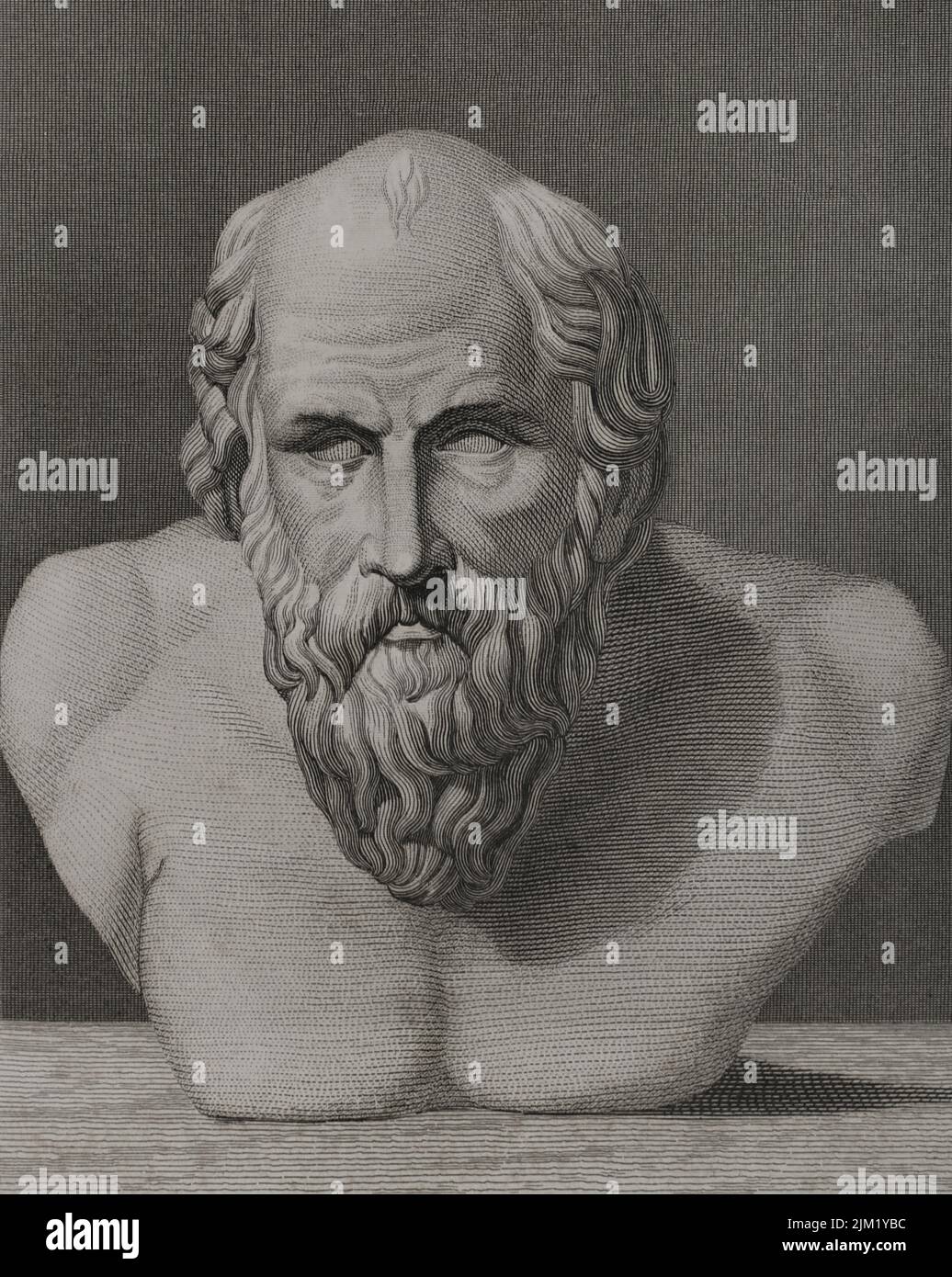 Diogenes of Sinope (ca. 412 BC - 323 BC). Greek philosopher belonging to the Cynic School. Engraving by A. Roca. 'Historia Universal', by César Cantú. Volume I, 1854. Stock Photohttps://www.alamy.com/image-license-details/?v=1https://www.alamy.com/diogenes-of-sinope-ca-412-bc-323-bc-greek-philosopher-belonging-to-the-cynic-school-engraving-by-a-roca-historia-universal-by-csar-cant-volume-i-1854-image477016496.html
Diogenes of Sinope (ca. 412 BC - 323 BC). Greek philosopher belonging to the Cynic School. Engraving by A. Roca. 'Historia Universal', by César Cantú. Volume I, 1854. Stock Photohttps://www.alamy.com/image-license-details/?v=1https://www.alamy.com/diogenes-of-sinope-ca-412-bc-323-bc-greek-philosopher-belonging-to-the-cynic-school-engraving-by-a-roca-historia-universal-by-csar-cant-volume-i-1854-image477016496.htmlRM2JM1YBC–Diogenes of Sinope (ca. 412 BC - 323 BC). Greek philosopher belonging to the Cynic School. Engraving by A. Roca. 'Historia Universal', by César Cantú. Volume I, 1854.
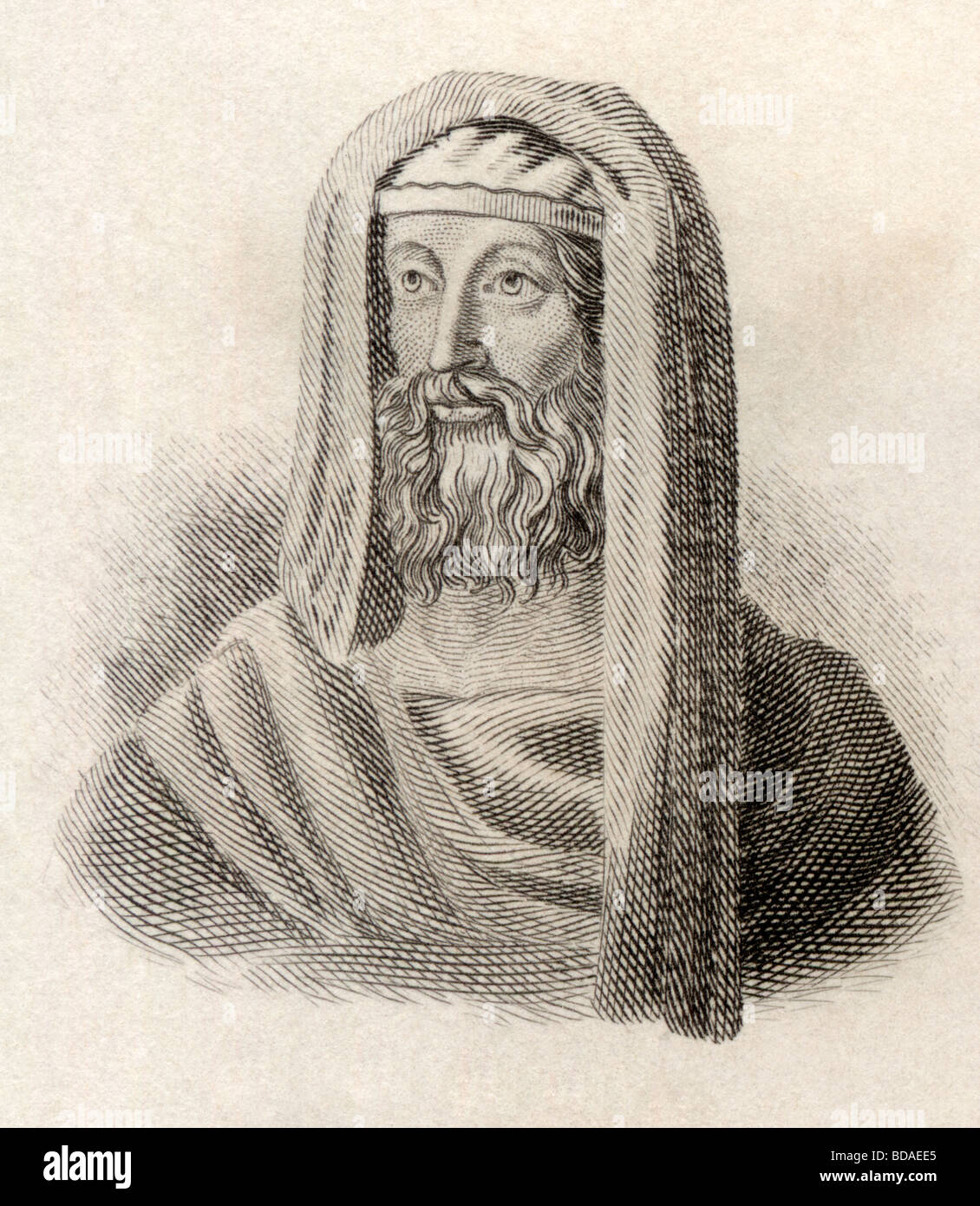 Diogenes of Sinope aka Diogenes the Cynic born circa 412 BC died 323 BC. Greek philosopher. Stock Photohttps://www.alamy.com/image-license-details/?v=1https://www.alamy.com/stock-photo-diogenes-of-sinope-aka-diogenes-the-cynic-born-circa-412-bc-died-323-25431789.html
Diogenes of Sinope aka Diogenes the Cynic born circa 412 BC died 323 BC. Greek philosopher. Stock Photohttps://www.alamy.com/image-license-details/?v=1https://www.alamy.com/stock-photo-diogenes-of-sinope-aka-diogenes-the-cynic-born-circa-412-bc-died-323-25431789.htmlRMBDAEE5–Diogenes of Sinope aka Diogenes the Cynic born circa 412 BC died 323 BC. Greek philosopher.
 Diogenes of Sinope the greek philosopher Stock Photohttps://www.alamy.com/image-license-details/?v=1https://www.alamy.com/diogenes-of-sinope-the-greek-philosopher-image483536360.html
Diogenes of Sinope the greek philosopher Stock Photohttps://www.alamy.com/image-license-details/?v=1https://www.alamy.com/diogenes-of-sinope-the-greek-philosopher-image483536360.htmlRM2K2JYFM–Diogenes of Sinope the greek philosopher
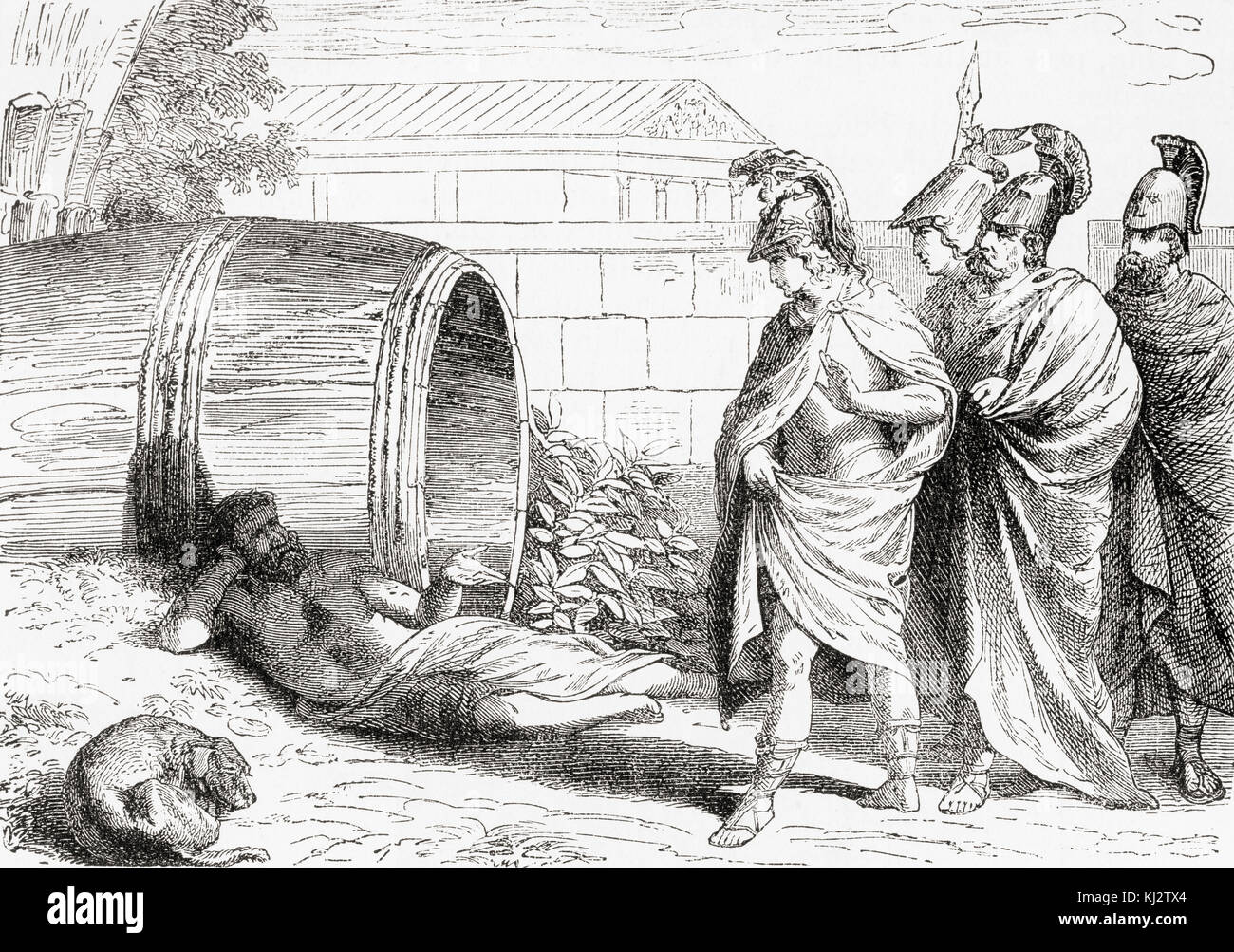 The alleged meeting between Diogenes, who was relaxing in the morning sunlight, and Alexander the Great. Alexander, thrilled to meet the famous philosopher, asked if there was any favour he might do for him. Diogenes replied, 'Yes, stand out of my sunlight.' Alexander then declared, 'If I were not Alexander, then I should wish to be Diogenes.' 'If I were not Diogenes, I would still wish to be Diogenes.', Diogenes replied. Diogenes aka Diogenes the Cynic, Greek philosopher and one of the founders of Cynic philosophy. Alexander III of Macedon aka Alexander the Great, 356 BC – 323 BC. King (ba Stock Photohttps://www.alamy.com/image-license-details/?v=1https://www.alamy.com/stock-image-the-alleged-meeting-between-diogenes-who-was-relaxing-in-the-morning-166020572.html
The alleged meeting between Diogenes, who was relaxing in the morning sunlight, and Alexander the Great. Alexander, thrilled to meet the famous philosopher, asked if there was any favour he might do for him. Diogenes replied, 'Yes, stand out of my sunlight.' Alexander then declared, 'If I were not Alexander, then I should wish to be Diogenes.' 'If I were not Diogenes, I would still wish to be Diogenes.', Diogenes replied. Diogenes aka Diogenes the Cynic, Greek philosopher and one of the founders of Cynic philosophy. Alexander III of Macedon aka Alexander the Great, 356 BC – 323 BC. King (ba Stock Photohttps://www.alamy.com/image-license-details/?v=1https://www.alamy.com/stock-image-the-alleged-meeting-between-diogenes-who-was-relaxing-in-the-morning-166020572.htmlRMKJ2TX4–The alleged meeting between Diogenes, who was relaxing in the morning sunlight, and Alexander the Great. Alexander, thrilled to meet the famous philosopher, asked if there was any favour he might do for him. Diogenes replied, 'Yes, stand out of my sunlight.' Alexander then declared, 'If I were not Alexander, then I should wish to be Diogenes.' 'If I were not Diogenes, I would still wish to be Diogenes.', Diogenes replied. Diogenes aka Diogenes the Cynic, Greek philosopher and one of the founders of Cynic philosophy. Alexander III of Macedon aka Alexander the Great, 356 BC – 323 BC. King (ba
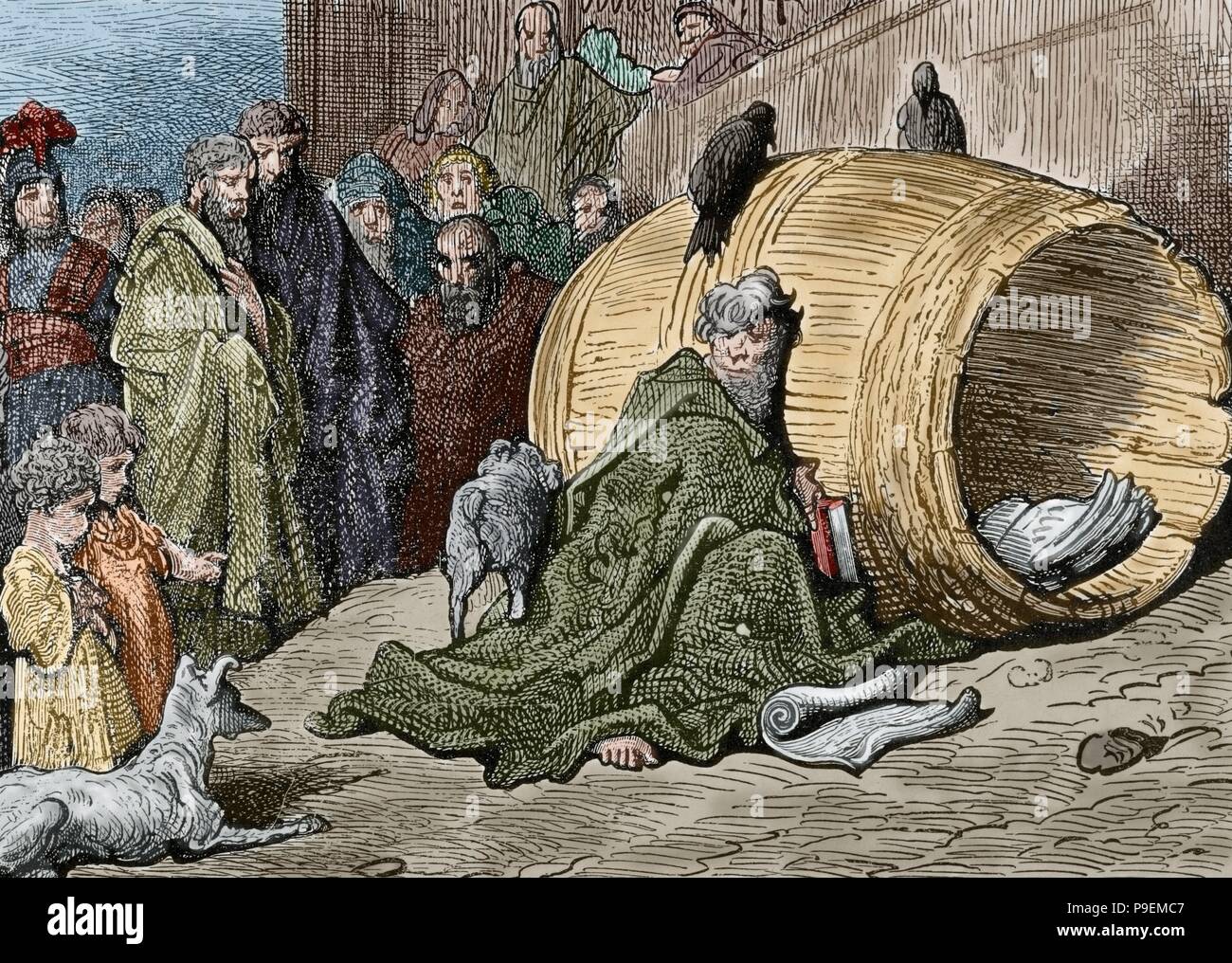 Diogenes (412-323 B.C.). Greek philosopher. One of the founders of Cynic philosophy. Also known as Diogenes the Cynic. Diogenes shelters in his barrel. Engraving by Gustave Dore. Colored. Stock Photohttps://www.alamy.com/image-license-details/?v=1https://www.alamy.com/diogenes-412-323-bc-greek-philosopher-one-of-the-founders-of-cynic-philosophy-also-known-as-diogenes-the-cynic-diogenes-shelters-in-his-barrel-engraving-by-gustave-dore-colored-image212379671.html
Diogenes (412-323 B.C.). Greek philosopher. One of the founders of Cynic philosophy. Also known as Diogenes the Cynic. Diogenes shelters in his barrel. Engraving by Gustave Dore. Colored. Stock Photohttps://www.alamy.com/image-license-details/?v=1https://www.alamy.com/diogenes-412-323-bc-greek-philosopher-one-of-the-founders-of-cynic-philosophy-also-known-as-diogenes-the-cynic-diogenes-shelters-in-his-barrel-engraving-by-gustave-dore-colored-image212379671.htmlRMP9EMC7–Diogenes (412-323 B.C.). Greek philosopher. One of the founders of Cynic philosophy. Also known as Diogenes the Cynic. Diogenes shelters in his barrel. Engraving by Gustave Dore. Colored.
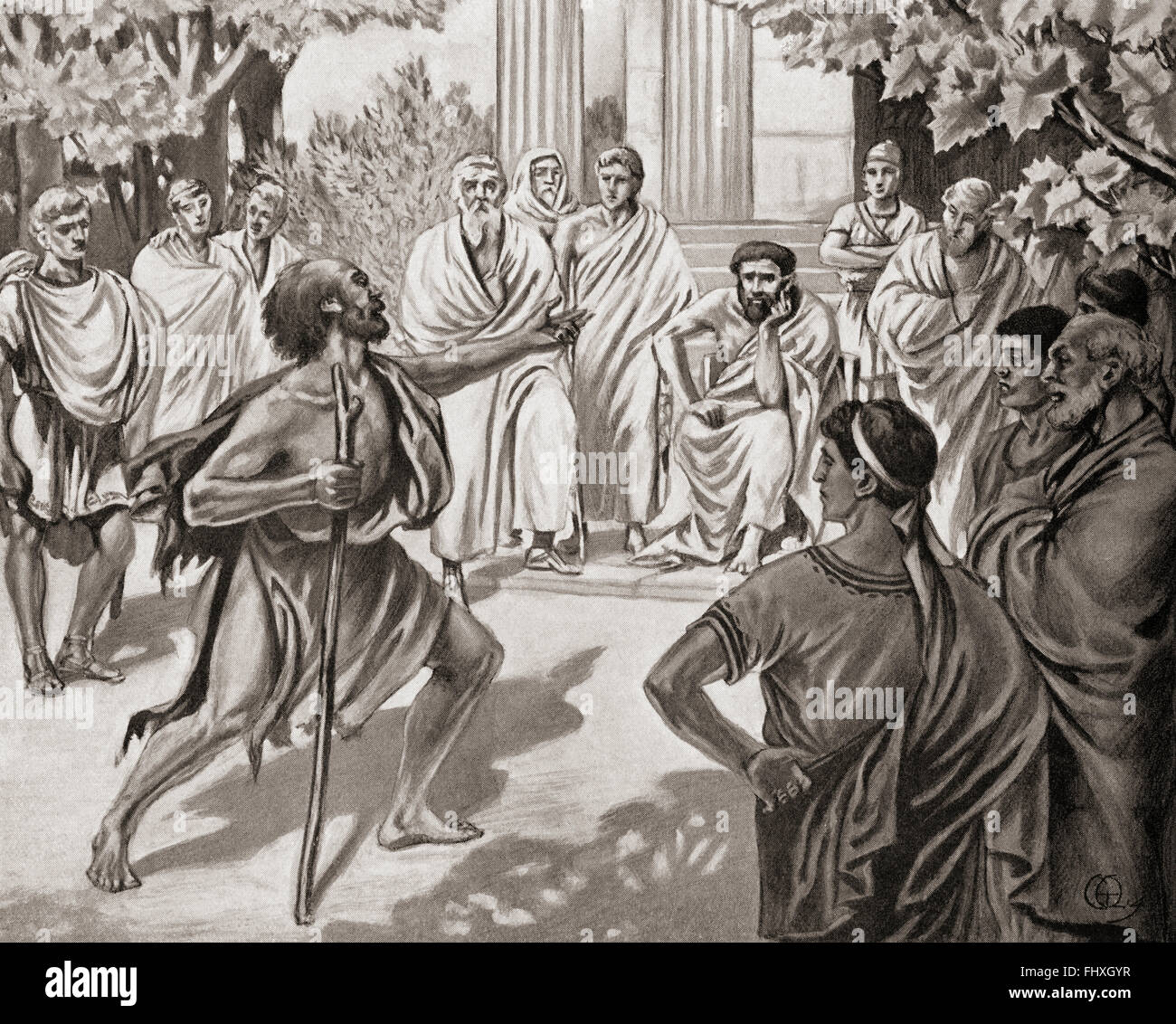 Diogenes challenging Plato in the Academy at Athens. Diogenes of Sinope, aka Diogenes the Cynic, c. 412 /404 BC - 323 BC. Greek philosopher. Plato, c. 428/427 – 348/347 BC. Philosopher in Classical Greece and founder of the Academy in Athens. Stock Photohttps://www.alamy.com/image-license-details/?v=1https://www.alamy.com/stock-photo-diogenes-challenging-plato-in-the-academy-at-athens-diogenes-of-sinope-97085067.html
Diogenes challenging Plato in the Academy at Athens. Diogenes of Sinope, aka Diogenes the Cynic, c. 412 /404 BC - 323 BC. Greek philosopher. Plato, c. 428/427 – 348/347 BC. Philosopher in Classical Greece and founder of the Academy in Athens. Stock Photohttps://www.alamy.com/image-license-details/?v=1https://www.alamy.com/stock-photo-diogenes-challenging-plato-in-the-academy-at-athens-diogenes-of-sinope-97085067.htmlRMFHXGYR–Diogenes challenging Plato in the Academy at Athens. Diogenes of Sinope, aka Diogenes the Cynic, c. 412 /404 BC - 323 BC. Greek philosopher. Plato, c. 428/427 – 348/347 BC. Philosopher in Classical Greece and founder of the Academy in Athens.
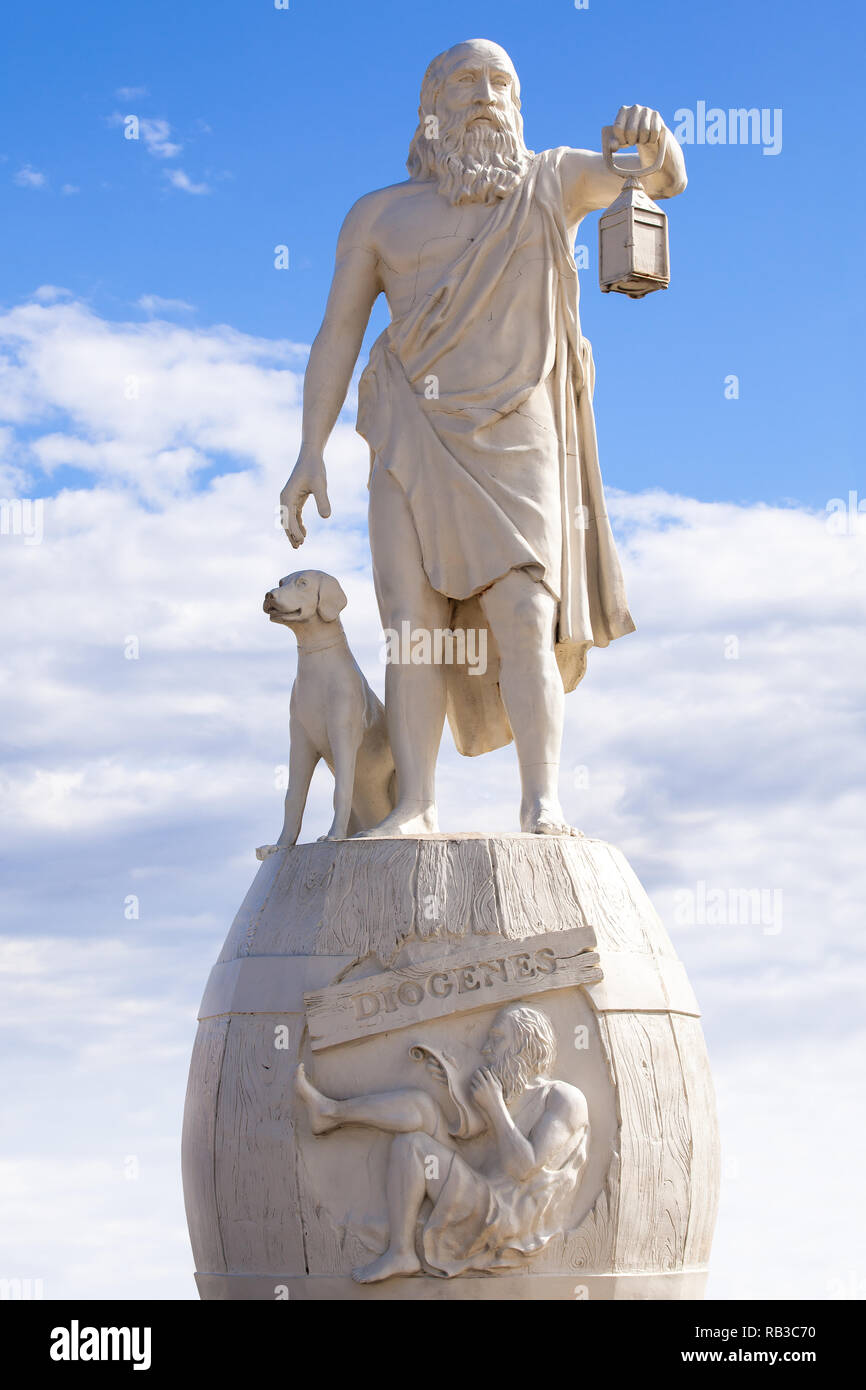 Philosopher Diogenes sculpture, holding light, Sinop - Turkey Also known as Diogenes the Cynic, he was born in Sinope (modern-day Sinop, Turkey), an I Stock Photohttps://www.alamy.com/image-license-details/?v=1https://www.alamy.com/philosopher-diogenes-sculpture-holding-light-sinop-turkey-also-known-as-diogenes-the-cynic-he-was-born-in-sinope-modern-day-sinop-turkey-an-i-image230571460.html
Philosopher Diogenes sculpture, holding light, Sinop - Turkey Also known as Diogenes the Cynic, he was born in Sinope (modern-day Sinop, Turkey), an I Stock Photohttps://www.alamy.com/image-license-details/?v=1https://www.alamy.com/philosopher-diogenes-sculpture-holding-light-sinop-turkey-also-known-as-diogenes-the-cynic-he-was-born-in-sinope-modern-day-sinop-turkey-an-i-image230571460.htmlRFRB3C70–Philosopher Diogenes sculpture, holding light, Sinop - Turkey Also known as Diogenes the Cynic, he was born in Sinope (modern-day Sinop, Turkey), an I
 Alexander the Great visits Diogenes. The story is that Diogenes was basking in the morning sun, and when Alexander asked if there was anything he could do for him, Diogenes asked him to stop blocking the sun. After an engraving by Salvator Rosa. Stock Photohttps://www.alamy.com/image-license-details/?v=1https://www.alamy.com/alexander-the-great-visits-diogenes-the-story-is-that-diogenes-was-basking-in-the-morning-sun-and-when-alexander-asked-if-there-was-anything-he-could-do-for-him-diogenes-asked-him-to-stop-blocking-the-sun-after-an-engraving-by-salvator-rosa-image333871860.html
Alexander the Great visits Diogenes. The story is that Diogenes was basking in the morning sun, and when Alexander asked if there was anything he could do for him, Diogenes asked him to stop blocking the sun. After an engraving by Salvator Rosa. Stock Photohttps://www.alamy.com/image-license-details/?v=1https://www.alamy.com/alexander-the-great-visits-diogenes-the-story-is-that-diogenes-was-basking-in-the-morning-sun-and-when-alexander-asked-if-there-was-anything-he-could-do-for-him-diogenes-asked-him-to-stop-blocking-the-sun-after-an-engraving-by-salvator-rosa-image333871860.htmlRM2AB54Y0–Alexander the Great visits Diogenes. The story is that Diogenes was basking in the morning sun, and when Alexander asked if there was anything he could do for him, Diogenes asked him to stop blocking the sun. After an engraving by Salvator Rosa.
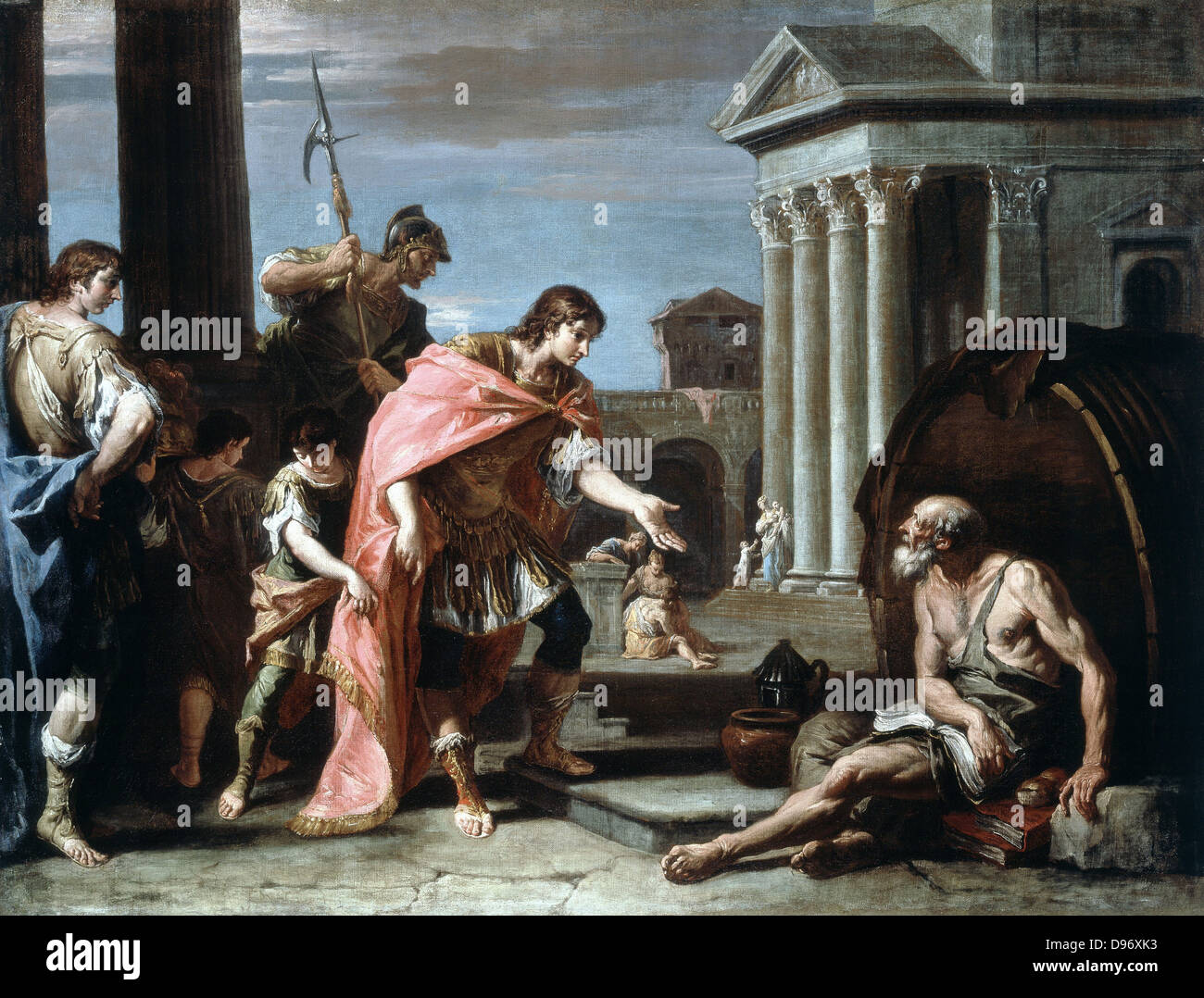 Alexander and Diogenes. Alexander The Great (Alexander III of Macedon 356-323 BC) visiting Diogenes of Sinope (c410 -c320 BC), Greek Cynic philosopher living in his tub in Athens. Sebastiano Ricci (or Rizzi, 1662-1734) Italian painter. Oil on canvas. Stock Photohttps://www.alamy.com/image-license-details/?v=1https://www.alamy.com/stock-photo-alexander-and-diogenes-alexander-the-great-alexander-iii-of-macedon-57315639.html
Alexander and Diogenes. Alexander The Great (Alexander III of Macedon 356-323 BC) visiting Diogenes of Sinope (c410 -c320 BC), Greek Cynic philosopher living in his tub in Athens. Sebastiano Ricci (or Rizzi, 1662-1734) Italian painter. Oil on canvas. Stock Photohttps://www.alamy.com/image-license-details/?v=1https://www.alamy.com/stock-photo-alexander-and-diogenes-alexander-the-great-alexander-iii-of-macedon-57315639.htmlRMD96XK3–Alexander and Diogenes. Alexander The Great (Alexander III of Macedon 356-323 BC) visiting Diogenes of Sinope (c410 -c320 BC), Greek Cynic philosopher living in his tub in Athens. Sebastiano Ricci (or Rizzi, 1662-1734) Italian painter. Oil on canvas.
 Diogenes, 3rd century BC Greek philosopher. Engraved after a 16th century work by Parmigianino, 1503–1540, proper name Girolamo Francesco Maria Mazzola and also known as Francesco Mazzola 1503–1540. Stock Photohttps://www.alamy.com/image-license-details/?v=1https://www.alamy.com/diogenes-3rd-century-bc-greek-philosopher-engraved-after-a-16th-century-work-by-parmigianino-15031540-proper-name-girolamo-francesco-maria-mazzola-and-also-known-as-francesco-mazzola-15031540-image211140122.html
Diogenes, 3rd century BC Greek philosopher. Engraved after a 16th century work by Parmigianino, 1503–1540, proper name Girolamo Francesco Maria Mazzola and also known as Francesco Mazzola 1503–1540. Stock Photohttps://www.alamy.com/image-license-details/?v=1https://www.alamy.com/diogenes-3rd-century-bc-greek-philosopher-engraved-after-a-16th-century-work-by-parmigianino-15031540-proper-name-girolamo-francesco-maria-mazzola-and-also-known-as-francesco-mazzola-15031540-image211140122.htmlRMP7E7AJ–Diogenes, 3rd century BC Greek philosopher. Engraved after a 16th century work by Parmigianino, 1503–1540, proper name Girolamo Francesco Maria Mazzola and also known as Francesco Mazzola 1503–1540.
 John William Waterhouse – Diogenes (1882). John William Waterhouse (born between January and April 1849; died 10 February 1917) was an English painter known for working in the Pre-Raphaelite style. Diogenes of Sinope was a Greek philosopher and one of the founders of Cynic philosophy. died at Corinth in 323 BCE. Stock Photohttps://www.alamy.com/image-license-details/?v=1https://www.alamy.com/john-william-waterhouse-diogenes-1882-john-william-waterhouse-born-image68557932.html
John William Waterhouse – Diogenes (1882). John William Waterhouse (born between January and April 1849; died 10 February 1917) was an English painter known for working in the Pre-Raphaelite style. Diogenes of Sinope was a Greek philosopher and one of the founders of Cynic philosophy. died at Corinth in 323 BCE. Stock Photohttps://www.alamy.com/image-license-details/?v=1https://www.alamy.com/john-william-waterhouse-diogenes-1882-john-william-waterhouse-born-image68557932.htmlRMDYF29G–John William Waterhouse – Diogenes (1882). John William Waterhouse (born between January and April 1849; died 10 February 1917) was an English painter known for working in the Pre-Raphaelite style. Diogenes of Sinope was a Greek philosopher and one of the founders of Cynic philosophy. died at Corinth in 323 BCE.
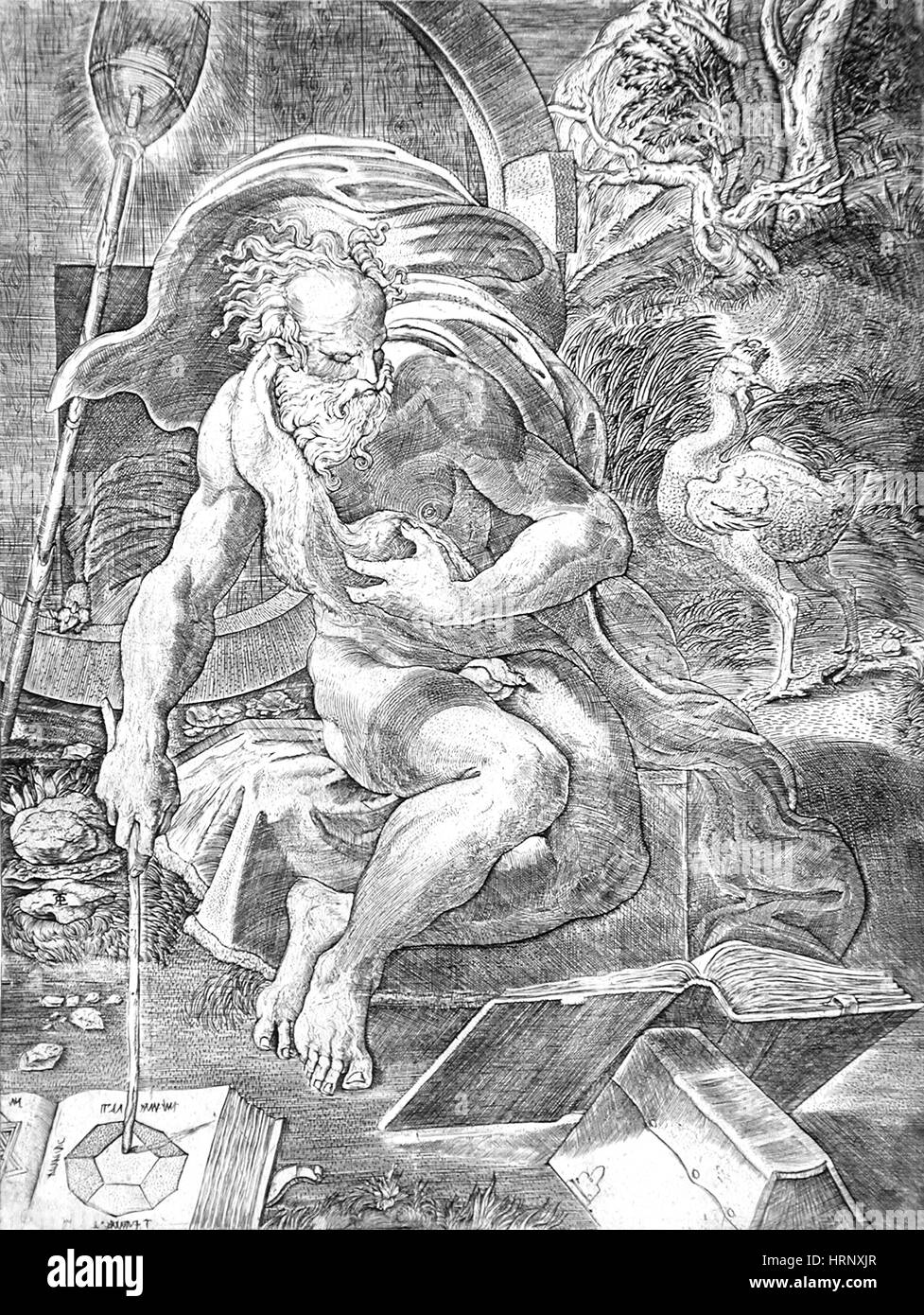 Diogenes of Sinope, Ancient Greek Philosopher Stock Photohttps://www.alamy.com/image-license-details/?v=1https://www.alamy.com/stock-photo-diogenes-of-sinope-ancient-greek-philosopher-135091567.html
Diogenes of Sinope, Ancient Greek Philosopher Stock Photohttps://www.alamy.com/image-license-details/?v=1https://www.alamy.com/stock-photo-diogenes-of-sinope-ancient-greek-philosopher-135091567.htmlRMHRNXJR–Diogenes of Sinope, Ancient Greek Philosopher
 Diogenes of Sinope, 412 - 323 BC, Greek philosopher, half length, sculpture, detail, Villa Albani, Rome, Italy, Stock Photohttps://www.alamy.com/image-license-details/?v=1https://www.alamy.com/stock-photo-diogenes-of-sinope-412-323-bc-greek-philosopher-half-length-sculpture-27956090.html
Diogenes of Sinope, 412 - 323 BC, Greek philosopher, half length, sculpture, detail, Villa Albani, Rome, Italy, Stock Photohttps://www.alamy.com/image-license-details/?v=1https://www.alamy.com/stock-photo-diogenes-of-sinope-412-323-bc-greek-philosopher-half-length-sculpture-27956090.htmlRMBHDE7P–Diogenes of Sinope, 412 - 323 BC, Greek philosopher, half length, sculpture, detail, Villa Albani, Rome, Italy,
 Jacopo Negretti, called Palma il Giovane. Andriana Palma and Diogenes the Cynic. 1596. Italy. Pen and brown ink, on ivory laid paper, laid down on ivory laid paper Stock Photohttps://www.alamy.com/image-license-details/?v=1https://www.alamy.com/jacopo-negretti-called-palma-il-giovane-andriana-palma-and-diogenes-the-cynic-1596-italy-pen-and-brown-ink-on-ivory-laid-paper-laid-down-on-ivory-laid-paper-image337958977.html
Jacopo Negretti, called Palma il Giovane. Andriana Palma and Diogenes the Cynic. 1596. Italy. Pen and brown ink, on ivory laid paper, laid down on ivory laid paper Stock Photohttps://www.alamy.com/image-license-details/?v=1https://www.alamy.com/jacopo-negretti-called-palma-il-giovane-andriana-palma-and-diogenes-the-cynic-1596-italy-pen-and-brown-ink-on-ivory-laid-paper-laid-down-on-ivory-laid-paper-image337958977.htmlRM2AHRA3D–Jacopo Negretti, called Palma il Giovane. Andriana Palma and Diogenes the Cynic. 1596. Italy. Pen and brown ink, on ivory laid paper, laid down on ivory laid paper
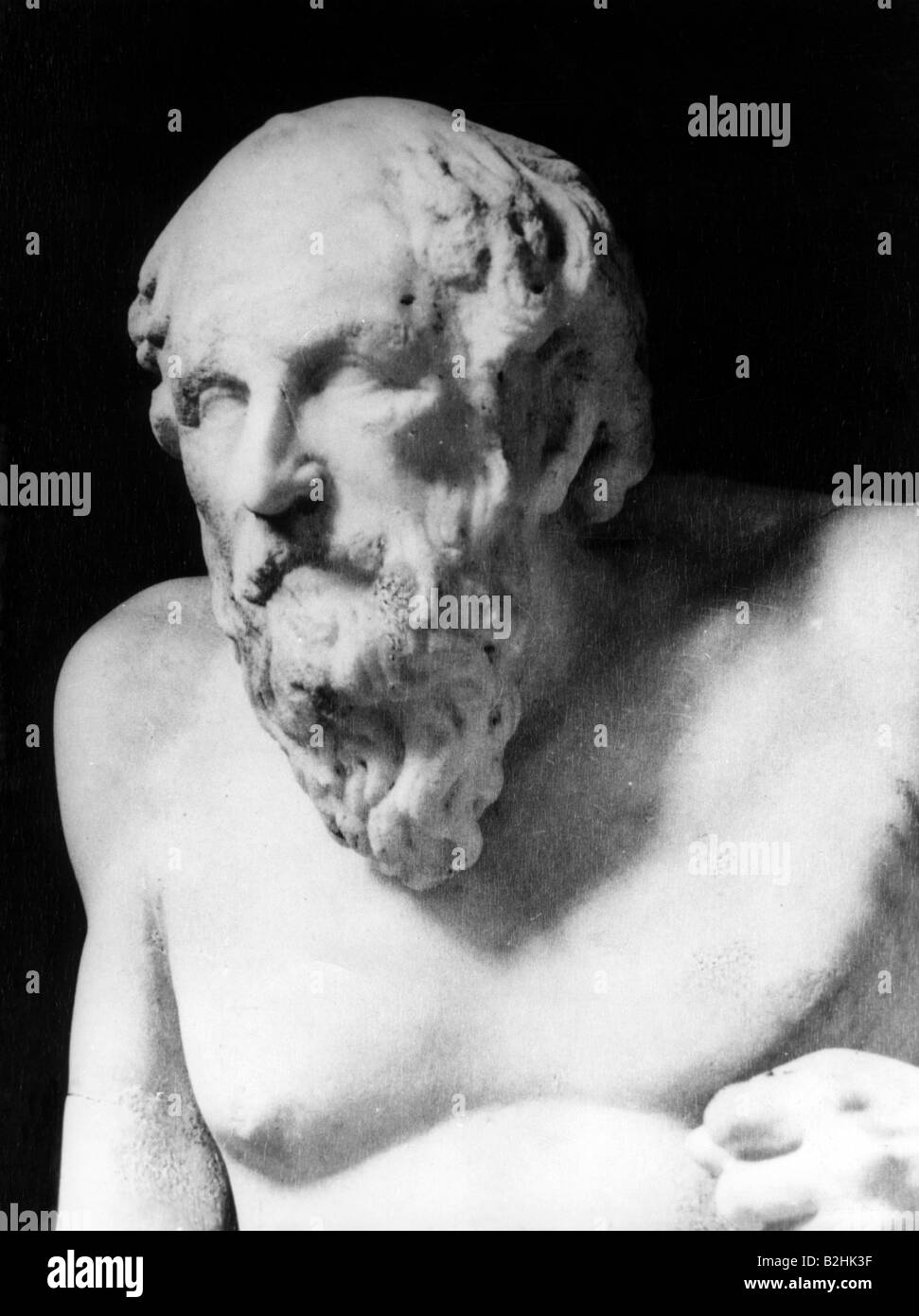 Diogenes of Sinope, 412 - 323 BC, Greek philosopher, portrait, sculpture, detail, Villa Albani, Rome, Italy, Stock Photohttps://www.alamy.com/image-license-details/?v=1https://www.alamy.com/stock-photo-diogenes-of-sinope-412-323-bc-greek-philosopher-portrait-sculpture-18827859.html
Diogenes of Sinope, 412 - 323 BC, Greek philosopher, portrait, sculpture, detail, Villa Albani, Rome, Italy, Stock Photohttps://www.alamy.com/image-license-details/?v=1https://www.alamy.com/stock-photo-diogenes-of-sinope-412-323-bc-greek-philosopher-portrait-sculpture-18827859.htmlRMB2HK3F–Diogenes of Sinope, 412 - 323 BC, Greek philosopher, portrait, sculpture, detail, Villa Albani, Rome, Italy,
 John William Waterhouse – Diogenes (1882). John William Waterhouse (born between January and April 1849; died 10 February 1917) was an English painter known for working in the Pre-Raphaelite style. Diogenes of Sinope was a Greek philosopher and one of the founders of Cynic philosophy. died at Corinth in 323 BCE. Stock Photohttps://www.alamy.com/image-license-details/?v=1https://www.alamy.com/john-william-waterhouse-diogenes-1882-john-william-waterhouse-born-between-january-and-april-1849-died-10-february-1917-was-an-english-painter-known-for-working-in-the-pre-raphaelite-style-diogenes-of-sinope-was-a-greek-philosopher-and-one-of-the-founders-of-cynic-philosophy-died-at-corinth-in-323-bce-image210363373.html
John William Waterhouse – Diogenes (1882). John William Waterhouse (born between January and April 1849; died 10 February 1917) was an English painter known for working in the Pre-Raphaelite style. Diogenes of Sinope was a Greek philosopher and one of the founders of Cynic philosophy. died at Corinth in 323 BCE. Stock Photohttps://www.alamy.com/image-license-details/?v=1https://www.alamy.com/john-william-waterhouse-diogenes-1882-john-william-waterhouse-born-between-january-and-april-1849-died-10-february-1917-was-an-english-painter-known-for-working-in-the-pre-raphaelite-style-diogenes-of-sinope-was-a-greek-philosopher-and-one-of-the-founders-of-cynic-philosophy-died-at-corinth-in-323-bce-image210363373.htmlRMP66THH–John William Waterhouse – Diogenes (1882). John William Waterhouse (born between January and April 1849; died 10 February 1917) was an English painter known for working in the Pre-Raphaelite style. Diogenes of Sinope was a Greek philosopher and one of the founders of Cynic philosophy. died at Corinth in 323 BCE.
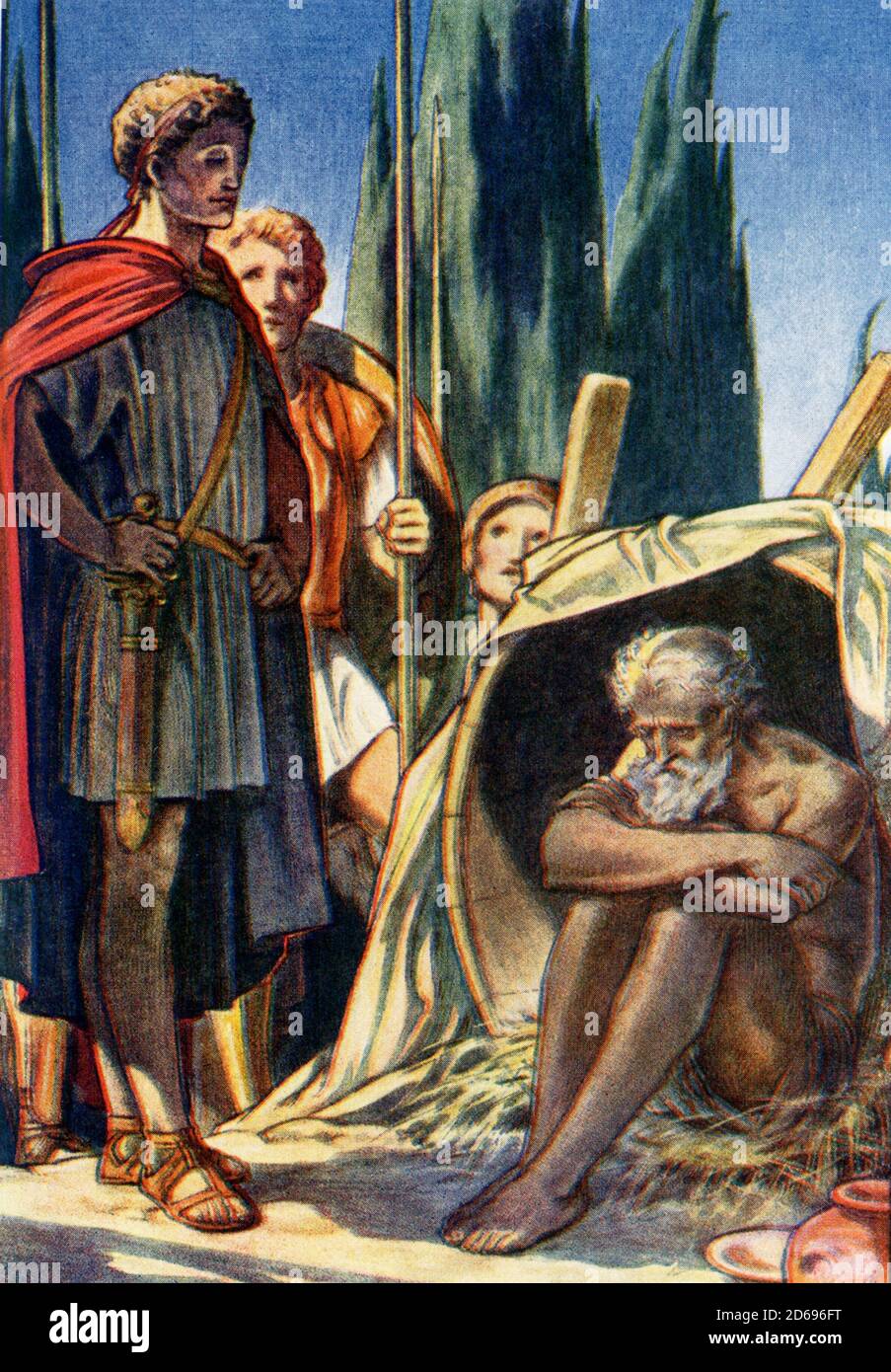 Diogenes, c. 412-323 B.C., was a Greek cynic philosopher who lived in Athens. He stressed the belief in the simple life by living in a tub. He is said to have gone about in daylight carrying a lantern, looking for someone showing proper human virtue. According to Plutarch, Alexander the Great met Diogenes in Corinth (see here in this early 1900s illustration) and when he asked the cynic what he might do for him, Diogenes is said to have replied, 'Move out of my sunlight.' Stock Photohttps://www.alamy.com/image-license-details/?v=1https://www.alamy.com/diogenes-c-412-323-bc-was-a-greek-cynic-philosopher-who-lived-in-athens-he-stressed-the-belief-in-the-simple-life-by-living-in-a-tub-he-is-said-to-have-gone-about-in-daylight-carrying-a-lantern-looking-for-someone-showing-proper-human-virtue-according-to-plutarch-alexander-the-great-met-diogenes-in-corinth-see-here-in-this-early-1900s-illustration-and-when-he-asked-the-cynic-what-he-might-do-for-him-diogenes-is-said-to-have-replied-move-out-of-my-sunlight-image382518748.html
Diogenes, c. 412-323 B.C., was a Greek cynic philosopher who lived in Athens. He stressed the belief in the simple life by living in a tub. He is said to have gone about in daylight carrying a lantern, looking for someone showing proper human virtue. According to Plutarch, Alexander the Great met Diogenes in Corinth (see here in this early 1900s illustration) and when he asked the cynic what he might do for him, Diogenes is said to have replied, 'Move out of my sunlight.' Stock Photohttps://www.alamy.com/image-license-details/?v=1https://www.alamy.com/diogenes-c-412-323-bc-was-a-greek-cynic-philosopher-who-lived-in-athens-he-stressed-the-belief-in-the-simple-life-by-living-in-a-tub-he-is-said-to-have-gone-about-in-daylight-carrying-a-lantern-looking-for-someone-showing-proper-human-virtue-according-to-plutarch-alexander-the-great-met-diogenes-in-corinth-see-here-in-this-early-1900s-illustration-and-when-he-asked-the-cynic-what-he-might-do-for-him-diogenes-is-said-to-have-replied-move-out-of-my-sunlight-image382518748.htmlRF2D696FT–Diogenes, c. 412-323 B.C., was a Greek cynic philosopher who lived in Athens. He stressed the belief in the simple life by living in a tub. He is said to have gone about in daylight carrying a lantern, looking for someone showing proper human virtue. According to Plutarch, Alexander the Great met Diogenes in Corinth (see here in this early 1900s illustration) and when he asked the cynic what he might do for him, Diogenes is said to have replied, 'Move out of my sunlight.'
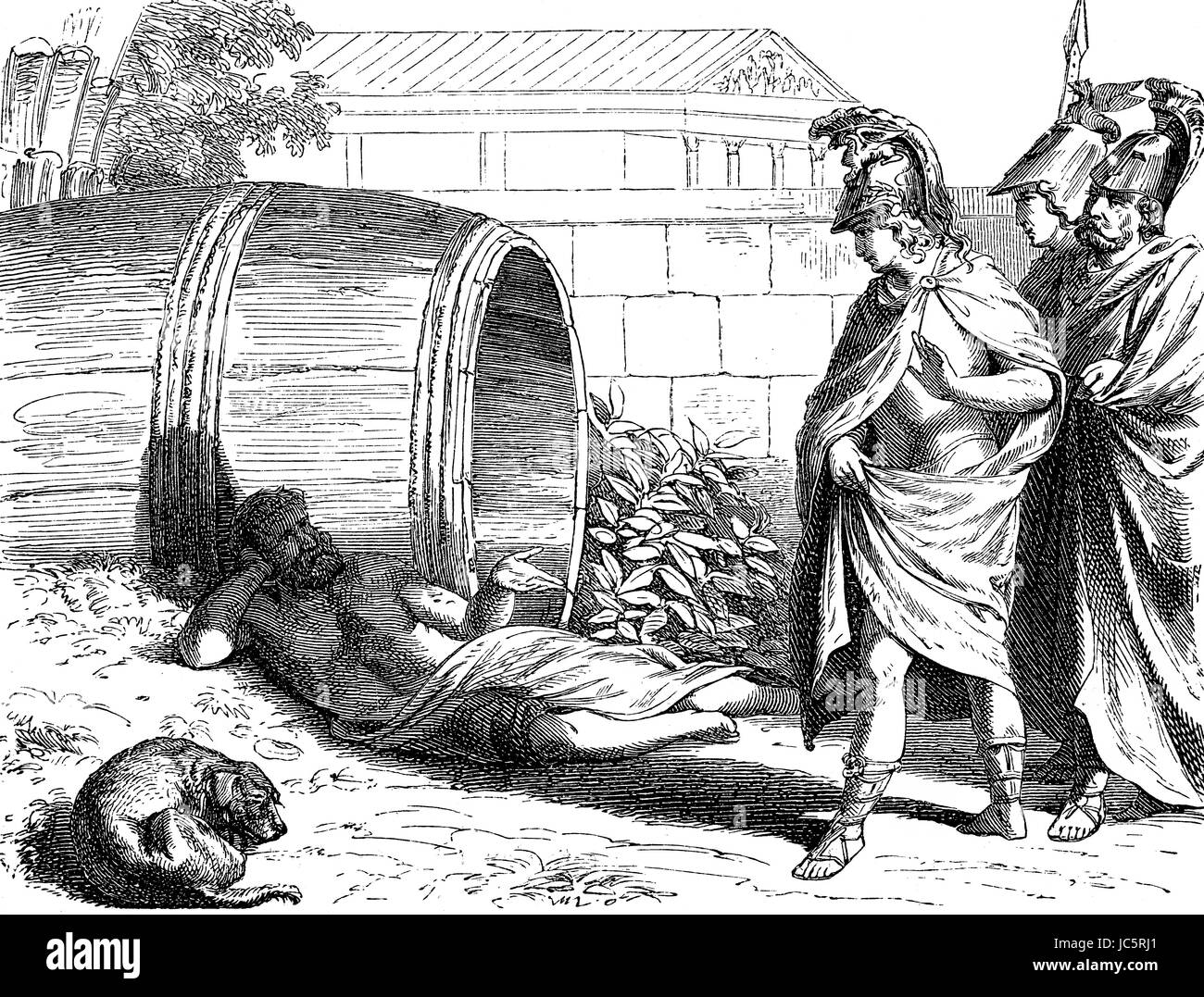 Alexander the Great visiting Diogenes, an ancient Greek philosopher, at Corinth Stock Photohttps://www.alamy.com/image-license-details/?v=1https://www.alamy.com/stock-photo-alexander-the-great-visiting-diogenes-an-ancient-greek-philosopher-145187113.html
Alexander the Great visiting Diogenes, an ancient Greek philosopher, at Corinth Stock Photohttps://www.alamy.com/image-license-details/?v=1https://www.alamy.com/stock-photo-alexander-the-great-visiting-diogenes-an-ancient-greek-philosopher-145187113.htmlRMJC5RJ1–Alexander the Great visiting Diogenes, an ancient Greek philosopher, at Corinth
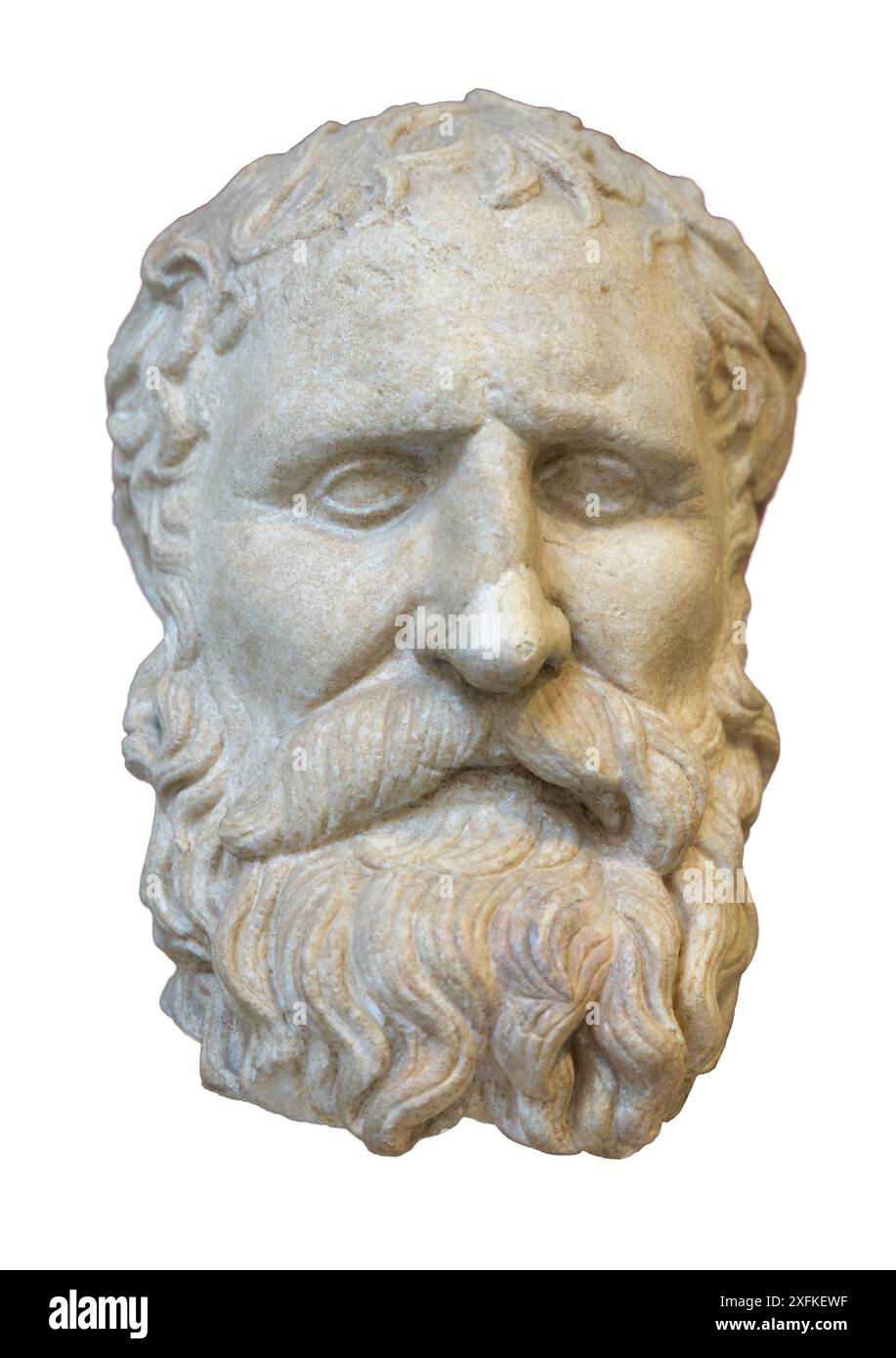 Head of Bearded man (probably Greek philosopher Diogenes the Cynic). Rome Stock Photohttps://www.alamy.com/image-license-details/?v=1https://www.alamy.com/head-of-bearded-man-probably-greek-philosopher-diogenes-the-cynic-rome-image612011499.html
Head of Bearded man (probably Greek philosopher Diogenes the Cynic). Rome Stock Photohttps://www.alamy.com/image-license-details/?v=1https://www.alamy.com/head-of-bearded-man-probably-greek-philosopher-diogenes-the-cynic-rome-image612011499.htmlRF2XFKEWF–Head of Bearded man (probably Greek philosopher Diogenes the Cynic). Rome
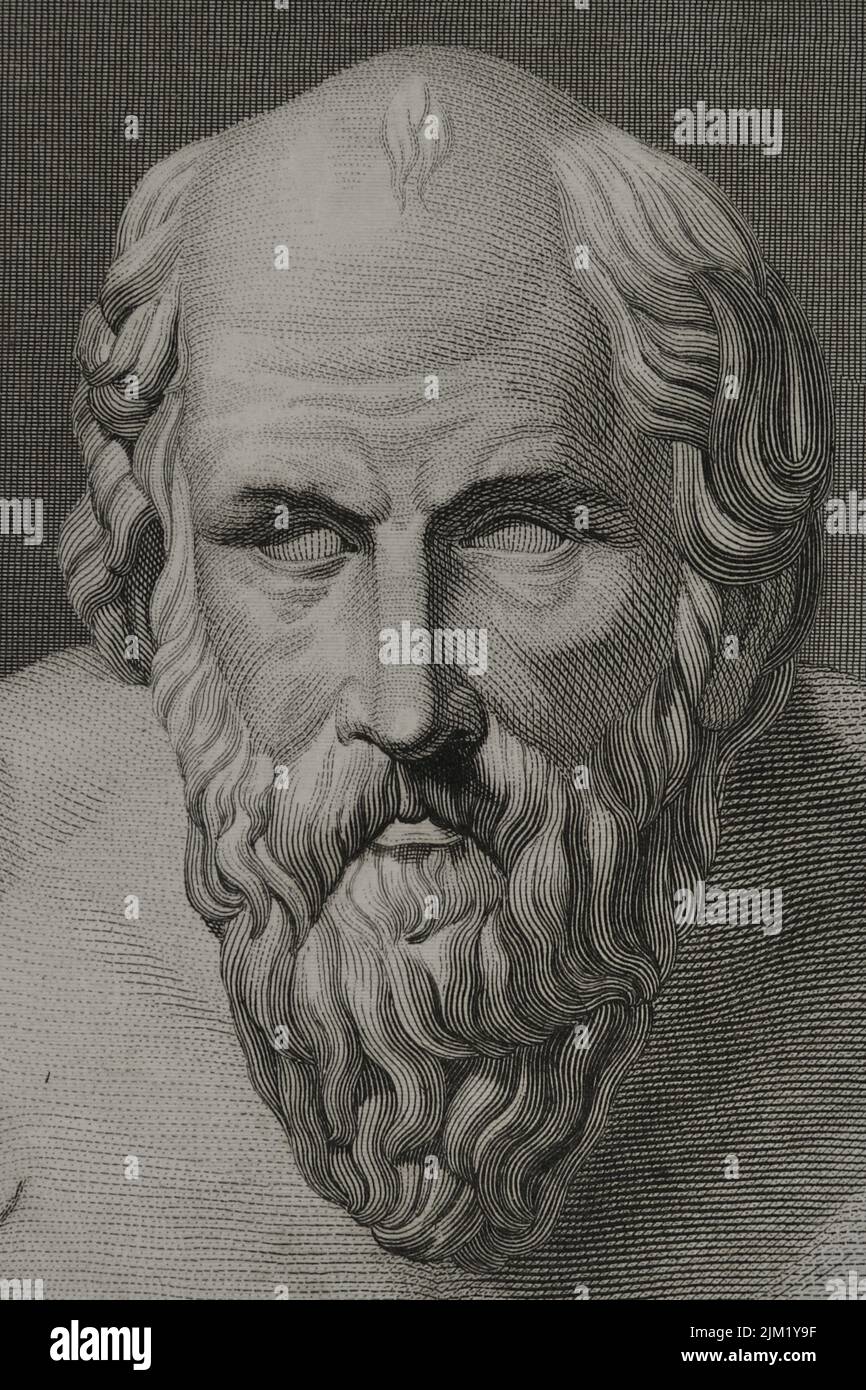 Diogenes of Sinope (ca. 412 BC - 323 BC). Greek philosopher belonging to the Cynic School. Engraving by A. Roca. Detail. 'Historia Universal', by César Cantú. Volume I, 1854. Stock Photohttps://www.alamy.com/image-license-details/?v=1https://www.alamy.com/diogenes-of-sinope-ca-412-bc-323-bc-greek-philosopher-belonging-to-the-cynic-school-engraving-by-a-roca-detail-historia-universal-by-csar-cant-volume-i-1854-image477016443.html
Diogenes of Sinope (ca. 412 BC - 323 BC). Greek philosopher belonging to the Cynic School. Engraving by A. Roca. Detail. 'Historia Universal', by César Cantú. Volume I, 1854. Stock Photohttps://www.alamy.com/image-license-details/?v=1https://www.alamy.com/diogenes-of-sinope-ca-412-bc-323-bc-greek-philosopher-belonging-to-the-cynic-school-engraving-by-a-roca-detail-historia-universal-by-csar-cant-volume-i-1854-image477016443.htmlRM2JM1Y9F–Diogenes of Sinope (ca. 412 BC - 323 BC). Greek philosopher belonging to the Cynic School. Engraving by A. Roca. Detail. 'Historia Universal', by César Cantú. Volume I, 1854.
 Diogenes with the Lamp Looking for an Honest Man by Johann Heinrich Wilhelm Tischbein, oil on panel, 1780s Stock Photohttps://www.alamy.com/image-license-details/?v=1https://www.alamy.com/diogenes-with-the-lamp-looking-for-an-honest-man-by-johann-heinrich-wilhelm-tischbein-oil-on-panel-1780s-image570812607.html
Diogenes with the Lamp Looking for an Honest Man by Johann Heinrich Wilhelm Tischbein, oil on panel, 1780s Stock Photohttps://www.alamy.com/image-license-details/?v=1https://www.alamy.com/diogenes-with-the-lamp-looking-for-an-honest-man-by-johann-heinrich-wilhelm-tischbein-oil-on-panel-1780s-image570812607.htmlRM2T4JN8F–Diogenes with the Lamp Looking for an Honest Man by Johann Heinrich Wilhelm Tischbein, oil on panel, 1780s
 Relief depicting a dog and a wild boar facing each other. It illustrates the citation of the Cynics, disciples of Diogenes. 'As a small dog hinders a boar, the weaker can dominate the stronger.' Stone. 2nd century. Found in Albertus street, Cologne, Germany. Roman-Germanic Museum. Cologne. Germany. Stock Photohttps://www.alamy.com/image-license-details/?v=1https://www.alamy.com/stock-photo-relief-depicting-a-dog-and-a-wild-boar-facing-each-other-it-illustrates-175730419.html
Relief depicting a dog and a wild boar facing each other. It illustrates the citation of the Cynics, disciples of Diogenes. 'As a small dog hinders a boar, the weaker can dominate the stronger.' Stone. 2nd century. Found in Albertus street, Cologne, Germany. Roman-Germanic Museum. Cologne. Germany. Stock Photohttps://www.alamy.com/image-license-details/?v=1https://www.alamy.com/stock-photo-relief-depicting-a-dog-and-a-wild-boar-facing-each-other-it-illustrates-175730419.htmlRMM5W5XB–Relief depicting a dog and a wild boar facing each other. It illustrates the citation of the Cynics, disciples of Diogenes. 'As a small dog hinders a boar, the weaker can dominate the stronger.' Stone. 2nd century. Found in Albertus street, Cologne, Germany. Roman-Germanic Museum. Cologne. Germany.
 Diogenes the Cynic (404-323 BC) portrait in line art. He was ancient Greek philosopher, one of the founders of the Cynic philosophy that emphasized St Stock Vectorhttps://www.alamy.com/image-license-details/?v=1https://www.alamy.com/diogenes-the-cynic-404-323-bc-portrait-in-line-art-he-was-ancient-greek-philosopher-one-of-the-founders-of-the-cynic-philosophy-that-emphasized-st-image487049492.html
Diogenes the Cynic (404-323 BC) portrait in line art. He was ancient Greek philosopher, one of the founders of the Cynic philosophy that emphasized St Stock Vectorhttps://www.alamy.com/image-license-details/?v=1https://www.alamy.com/diogenes-the-cynic-404-323-bc-portrait-in-line-art-he-was-ancient-greek-philosopher-one-of-the-founders-of-the-cynic-philosophy-that-emphasized-st-image487049492.htmlRF2K8B0GM–Diogenes the Cynic (404-323 BC) portrait in line art. He was ancient Greek philosopher, one of the founders of the Cynic philosophy that emphasized St
 Diogenes, Greek philosopher and one of the founders of Cynicism, c.404-323 BC. Diogenes the Cynic or Diogenes of Sinope. Copperplate engraving after an illustration by Joachim von Sandrart from his LAcademia Todesca, della Architectura, Scultura & Pittura, oder Teutsche Academie, der Edlen Bau- Bild- und Mahlerey-Kunste, German Academy of Architecture, Sculpture and Painting, Jacob von Sandrart, Nuremberg, 1675. Stock Photohttps://www.alamy.com/image-license-details/?v=1https://www.alamy.com/diogenes-greek-philosopher-and-one-of-the-founders-of-cynicism-c404-323-bc-diogenes-the-cynic-or-diogenes-of-sinope-copperplate-engraving-after-an-illustration-by-joachim-von-sandrart-from-his-lacademia-todesca-della-architectura-scultura-pittura-oder-teutsche-academie-der-edlen-bau-bild-und-mahlerey-kunste-german-academy-of-architecture-sculpture-and-painting-jacob-von-sandrart-nuremberg-1675-image571825014.html
Diogenes, Greek philosopher and one of the founders of Cynicism, c.404-323 BC. Diogenes the Cynic or Diogenes of Sinope. Copperplate engraving after an illustration by Joachim von Sandrart from his LAcademia Todesca, della Architectura, Scultura & Pittura, oder Teutsche Academie, der Edlen Bau- Bild- und Mahlerey-Kunste, German Academy of Architecture, Sculpture and Painting, Jacob von Sandrart, Nuremberg, 1675. Stock Photohttps://www.alamy.com/image-license-details/?v=1https://www.alamy.com/diogenes-greek-philosopher-and-one-of-the-founders-of-cynicism-c404-323-bc-diogenes-the-cynic-or-diogenes-of-sinope-copperplate-engraving-after-an-illustration-by-joachim-von-sandrart-from-his-lacademia-todesca-della-architectura-scultura-pittura-oder-teutsche-academie-der-edlen-bau-bild-und-mahlerey-kunste-german-academy-of-architecture-sculpture-and-painting-jacob-von-sandrart-nuremberg-1675-image571825014.htmlRM2T68THX–Diogenes, Greek philosopher and one of the founders of Cynicism, c.404-323 BC. Diogenes the Cynic or Diogenes of Sinope. Copperplate engraving after an illustration by Joachim von Sandrart from his LAcademia Todesca, della Architectura, Scultura & Pittura, oder Teutsche Academie, der Edlen Bau- Bild- und Mahlerey-Kunste, German Academy of Architecture, Sculpture and Painting, Jacob von Sandrart, Nuremberg, 1675.
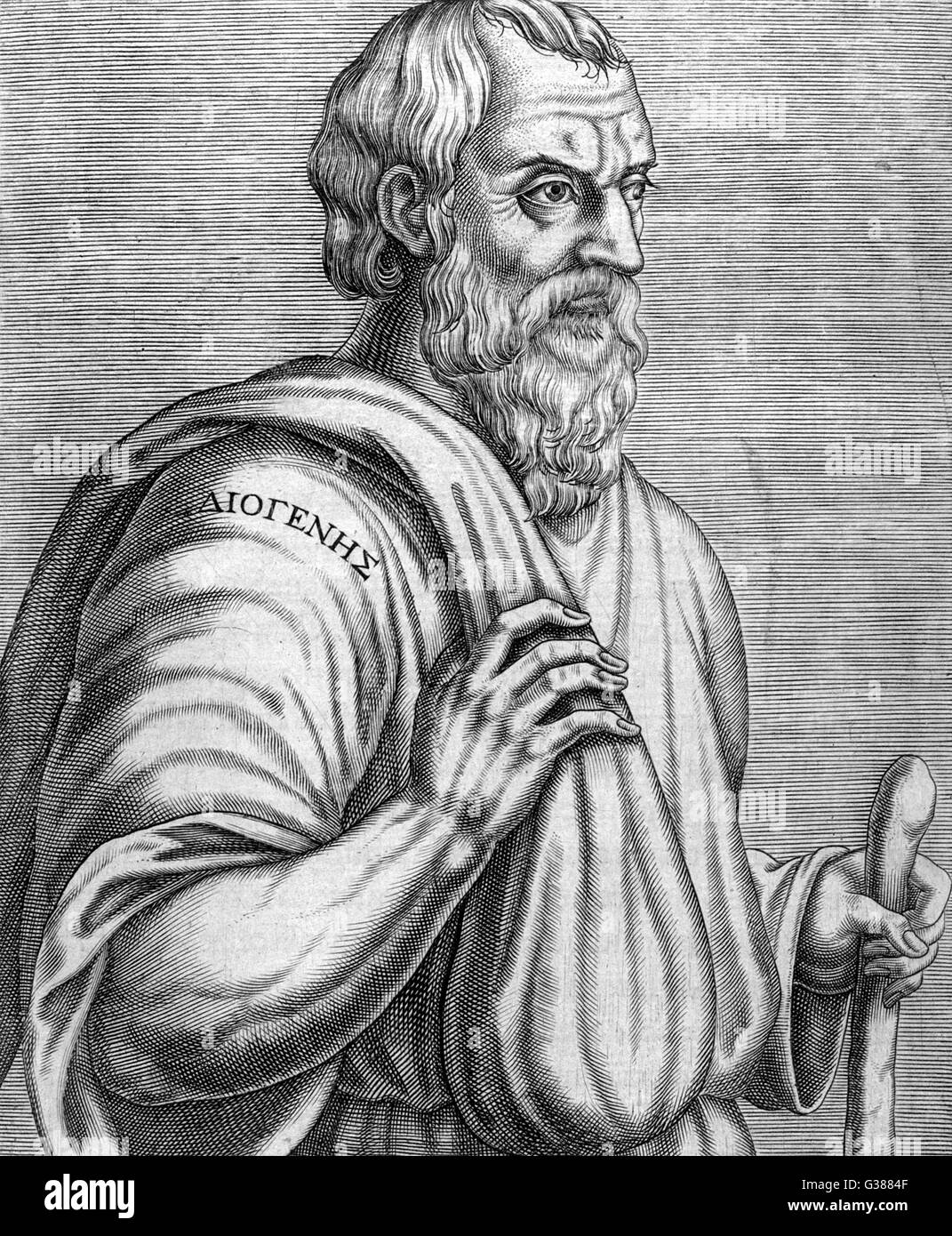 DIOGENES (THEVET) Stock Photohttps://www.alamy.com/image-license-details/?v=1https://www.alamy.com/stock-photo-diogenes-thevet-105288191.html
DIOGENES (THEVET) Stock Photohttps://www.alamy.com/image-license-details/?v=1https://www.alamy.com/stock-photo-diogenes-thevet-105288191.htmlRMG3884F–DIOGENES (THEVET)
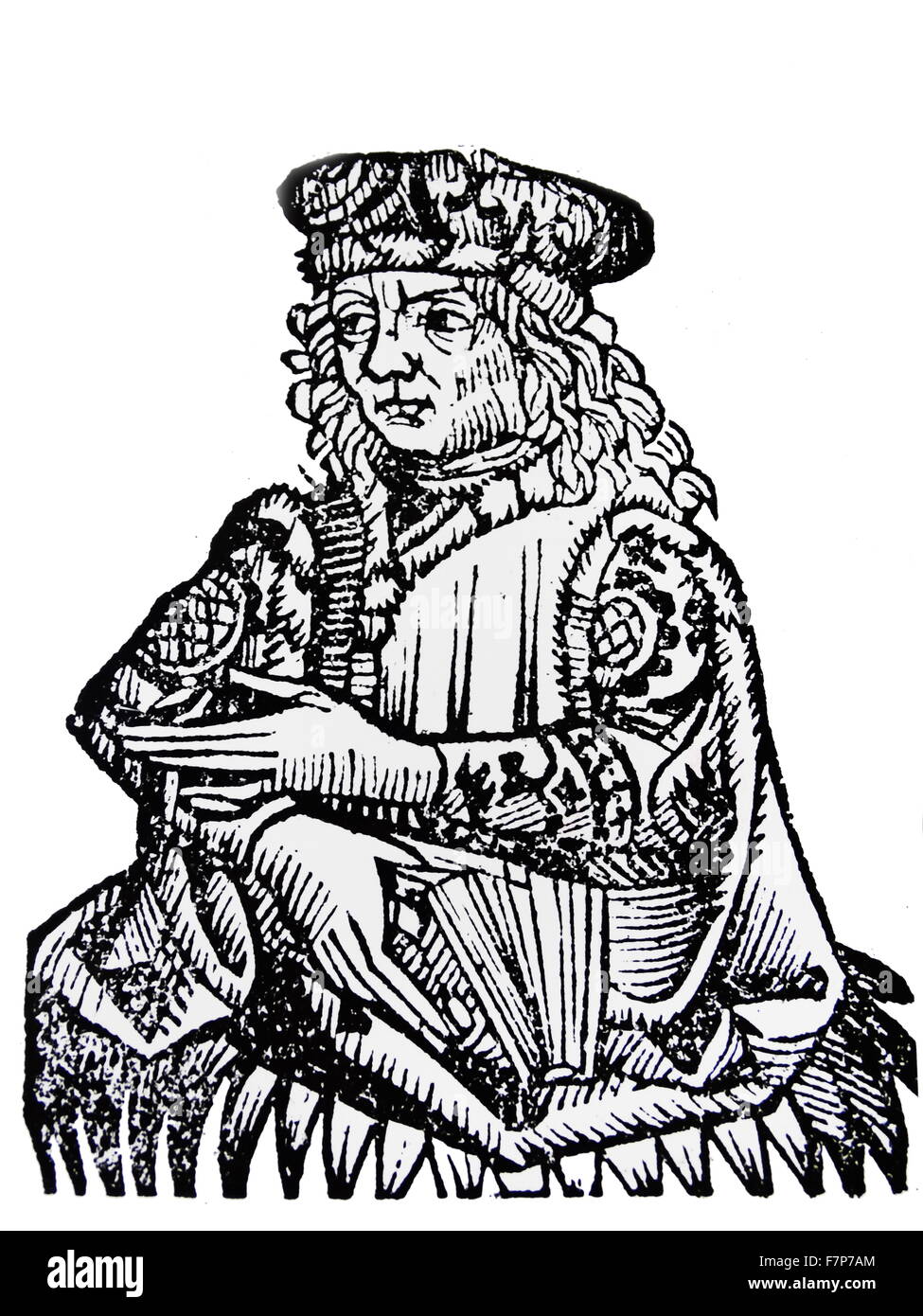 Diogenes of Sinope the greek philosopher Stock Photohttps://www.alamy.com/image-license-details/?v=1https://www.alamy.com/stock-photo-diogenes-of-sinope-the-greek-philosopher-90843164.html
Diogenes of Sinope the greek philosopher Stock Photohttps://www.alamy.com/image-license-details/?v=1https://www.alamy.com/stock-photo-diogenes-of-sinope-the-greek-philosopher-90843164.htmlRMF7P7AM–Diogenes of Sinope the greek philosopher
 Diogenes and Alexander Stock Photohttps://www.alamy.com/image-license-details/?v=1https://www.alamy.com/diogenes-and-alexander-image66107115.html
Diogenes and Alexander Stock Photohttps://www.alamy.com/image-license-details/?v=1https://www.alamy.com/diogenes-and-alexander-image66107115.htmlRMDRFC8B–Diogenes and Alexander
 'Diogenes', after 1527. Artist: Ugo da Carpi Stock Photohttps://www.alamy.com/image-license-details/?v=1https://www.alamy.com/diogenes-after-1527-artist-ugo-da-carpi-image60294585.html
'Diogenes', after 1527. Artist: Ugo da Carpi Stock Photohttps://www.alamy.com/image-license-details/?v=1https://www.alamy.com/diogenes-after-1527-artist-ugo-da-carpi-image60294585.htmlRMDE2JA1–'Diogenes', after 1527. Artist: Ugo da Carpi
 ALEXANDER MEETS DIOGENES Stock Photohttps://www.alamy.com/image-license-details/?v=1https://www.alamy.com/stock-photo-alexander-meets-diogenes-83114385.html
ALEXANDER MEETS DIOGENES Stock Photohttps://www.alamy.com/image-license-details/?v=1https://www.alamy.com/stock-photo-alexander-meets-diogenes-83114385.htmlRMER656W–ALEXANDER MEETS DIOGENES
 Diogenes of Sinope (ca. 412 BC - 323 BC). Greek philosopher belonging to the Cynic School. Engraving by A. Roca. 'Historia Universal', by Cesar Cantu. Volume I, 1854. Stock Photohttps://www.alamy.com/image-license-details/?v=1https://www.alamy.com/diogenes-of-sinope-ca-412-bc-323-bc-greek-philosopher-belonging-to-the-cynic-school-engraving-by-a-roca-historia-universal-by-cesar-cantu-volume-i-1854-image608948867.html
Diogenes of Sinope (ca. 412 BC - 323 BC). Greek philosopher belonging to the Cynic School. Engraving by A. Roca. 'Historia Universal', by Cesar Cantu. Volume I, 1854. Stock Photohttps://www.alamy.com/image-license-details/?v=1https://www.alamy.com/diogenes-of-sinope-ca-412-bc-323-bc-greek-philosopher-belonging-to-the-cynic-school-engraving-by-a-roca-historia-universal-by-cesar-cantu-volume-i-1854-image608948867.htmlRM2XAM0DR–Diogenes of Sinope (ca. 412 BC - 323 BC). Greek philosopher belonging to the Cynic School. Engraving by A. Roca. 'Historia Universal', by Cesar Cantu. Volume I, 1854.
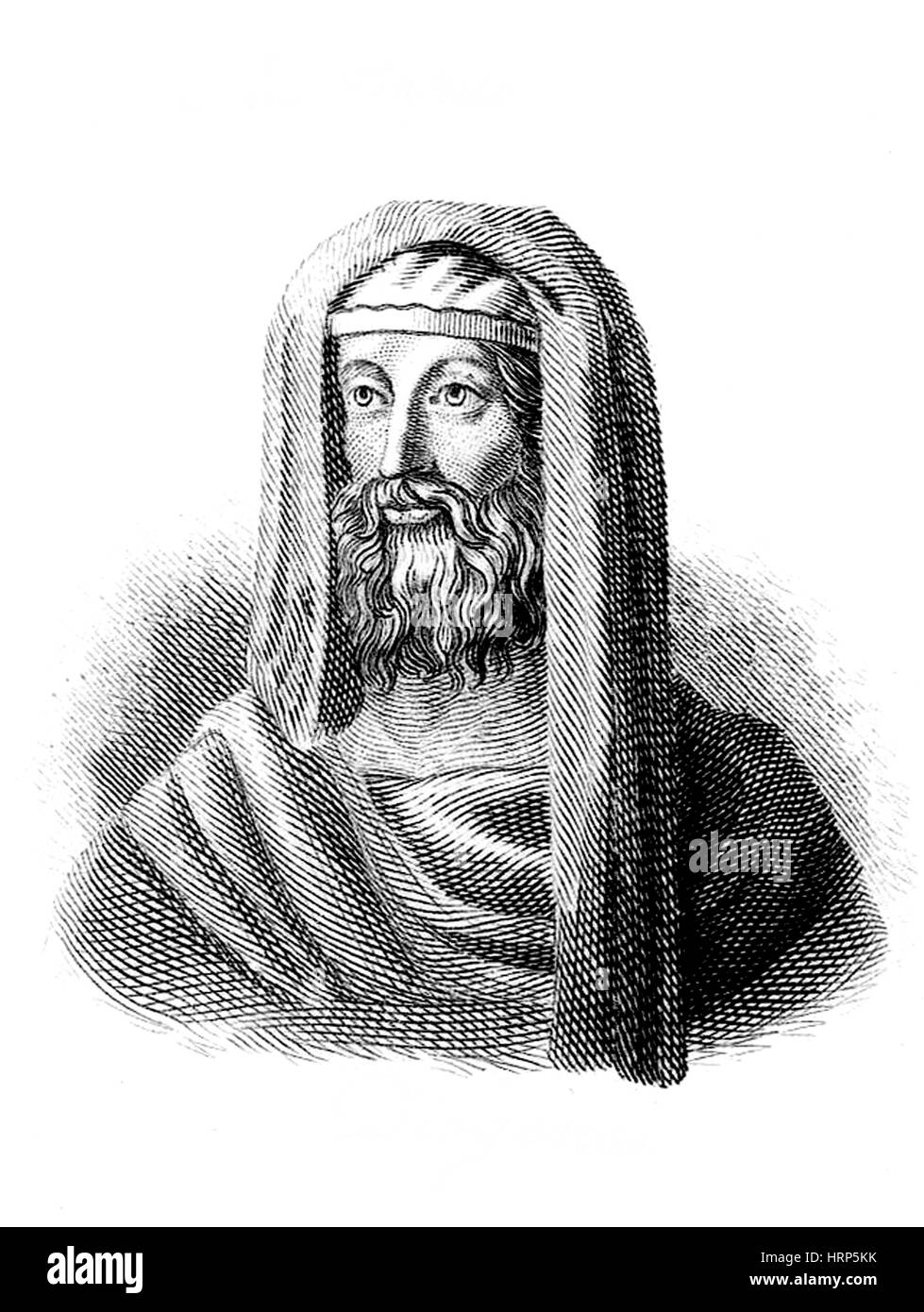 Diogenes of Sinope, Ancient Greek Philosopher Stock Photohttps://www.alamy.com/image-license-details/?v=1https://www.alamy.com/stock-photo-diogenes-of-sinope-ancient-greek-philosopher-135097079.html
Diogenes of Sinope, Ancient Greek Philosopher Stock Photohttps://www.alamy.com/image-license-details/?v=1https://www.alamy.com/stock-photo-diogenes-of-sinope-ancient-greek-philosopher-135097079.htmlRMHRP5KK–Diogenes of Sinope, Ancient Greek Philosopher
 Alexander the Great meets cynic philosopher Diogenes. A public sculpture at the Greek city of Corinth. Stock Photohttps://www.alamy.com/image-license-details/?v=1https://www.alamy.com/stock-photo-alexander-the-great-meets-cynic-philosopher-diogenes-a-public-sculpture-97166002.html
Alexander the Great meets cynic philosopher Diogenes. A public sculpture at the Greek city of Corinth. Stock Photohttps://www.alamy.com/image-license-details/?v=1https://www.alamy.com/stock-photo-alexander-the-great-meets-cynic-philosopher-diogenes-a-public-sculpture-97166002.htmlRMFJ286A–Alexander the Great meets cynic philosopher Diogenes. A public sculpture at the Greek city of Corinth.
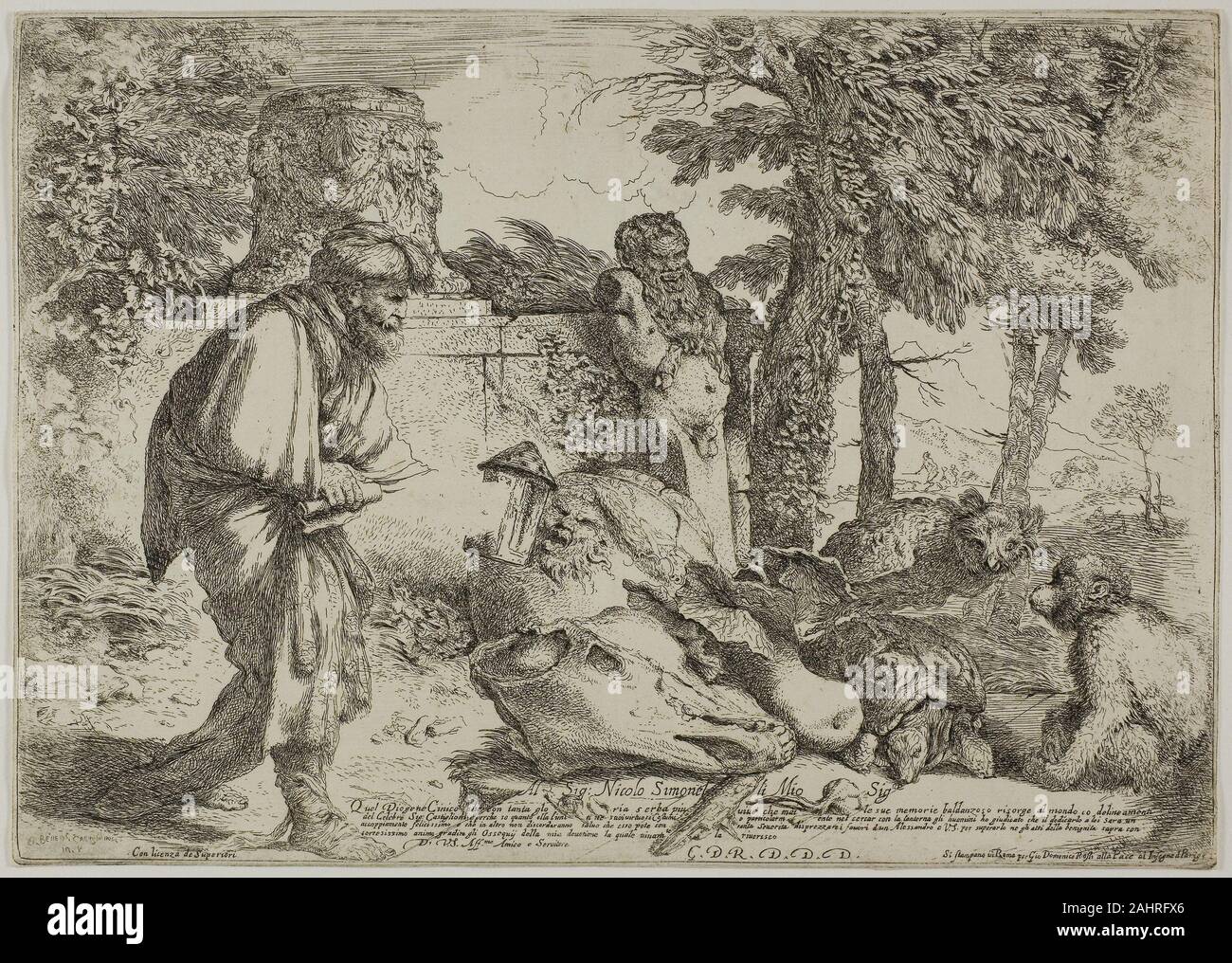 Giovanni Benedetto Castiglione. Diogenes Seeking an Honest Man. 1645–1647. Italy. Etching on cream laid paper Diogenes the Cynic, a contemporary of Plato, is famous for having been an outspoken and contentious critic of convention. Believing that virtue was better revealed through action than theory, he maintained an ascetic lifestyle while deliberately acting out against what he found to be irrational societal customs. In this etching, Giovanni Benedetto Castiglione showed Diogenes searching by lamplight, during the daytime, for a rational man. Instead of finding a man, the shoeless philosoph Stock Photohttps://www.alamy.com/image-license-details/?v=1https://www.alamy.com/giovanni-benedetto-castiglione-diogenes-seeking-an-honest-man-16451647-italy-etching-on-cream-laid-paper-diogenes-the-cynic-a-contemporary-of-plato-is-famous-for-having-been-an-outspoken-and-contentious-critic-of-convention-believing-that-virtue-was-better-revealed-through-action-than-theory-he-maintained-an-ascetic-lifestyle-while-deliberately-acting-out-against-what-he-found-to-be-irrational-societal-customs-in-this-etching-giovanni-benedetto-castiglione-showed-diogenes-searching-by-lamplight-during-the-daytime-for-a-rational-man-instead-of-finding-a-man-the-shoeless-philosoph-image337963534.html
Giovanni Benedetto Castiglione. Diogenes Seeking an Honest Man. 1645–1647. Italy. Etching on cream laid paper Diogenes the Cynic, a contemporary of Plato, is famous for having been an outspoken and contentious critic of convention. Believing that virtue was better revealed through action than theory, he maintained an ascetic lifestyle while deliberately acting out against what he found to be irrational societal customs. In this etching, Giovanni Benedetto Castiglione showed Diogenes searching by lamplight, during the daytime, for a rational man. Instead of finding a man, the shoeless philosoph Stock Photohttps://www.alamy.com/image-license-details/?v=1https://www.alamy.com/giovanni-benedetto-castiglione-diogenes-seeking-an-honest-man-16451647-italy-etching-on-cream-laid-paper-diogenes-the-cynic-a-contemporary-of-plato-is-famous-for-having-been-an-outspoken-and-contentious-critic-of-convention-believing-that-virtue-was-better-revealed-through-action-than-theory-he-maintained-an-ascetic-lifestyle-while-deliberately-acting-out-against-what-he-found-to-be-irrational-societal-customs-in-this-etching-giovanni-benedetto-castiglione-showed-diogenes-searching-by-lamplight-during-the-daytime-for-a-rational-man-instead-of-finding-a-man-the-shoeless-philosoph-image337963534.htmlRM2AHRFX6–Giovanni Benedetto Castiglione. Diogenes Seeking an Honest Man. 1645–1647. Italy. Etching on cream laid paper Diogenes the Cynic, a contemporary of Plato, is famous for having been an outspoken and contentious critic of convention. Believing that virtue was better revealed through action than theory, he maintained an ascetic lifestyle while deliberately acting out against what he found to be irrational societal customs. In this etching, Giovanni Benedetto Castiglione showed Diogenes searching by lamplight, during the daytime, for a rational man. Instead of finding a man, the shoeless philosoph
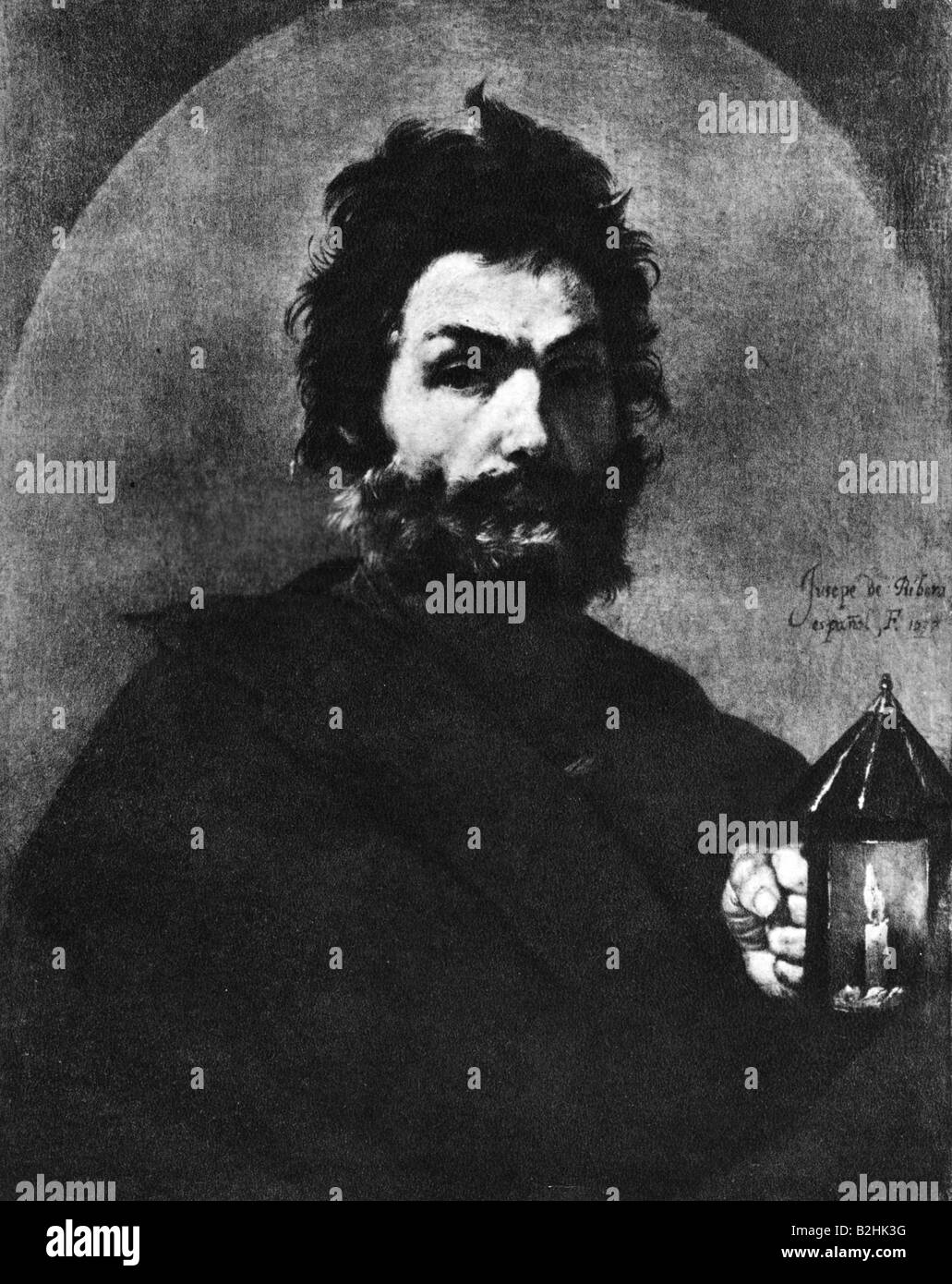 Diogenes, von Sinope, 412 - 323 BC, Greek philosopher, half length, painting 'Diogenes with lantern', by Jusepe de Ribera, Stock Photohttps://www.alamy.com/image-license-details/?v=1https://www.alamy.com/stock-photo-diogenes-von-sinope-412-323-bc-greek-philosopher-half-length-painting-18827860.html
Diogenes, von Sinope, 412 - 323 BC, Greek philosopher, half length, painting 'Diogenes with lantern', by Jusepe de Ribera, Stock Photohttps://www.alamy.com/image-license-details/?v=1https://www.alamy.com/stock-photo-diogenes-von-sinope-412-323-bc-greek-philosopher-half-length-painting-18827860.htmlRMB2HK3G–Diogenes, von Sinope, 412 - 323 BC, Greek philosopher, half length, painting 'Diogenes with lantern', by Jusepe de Ribera,
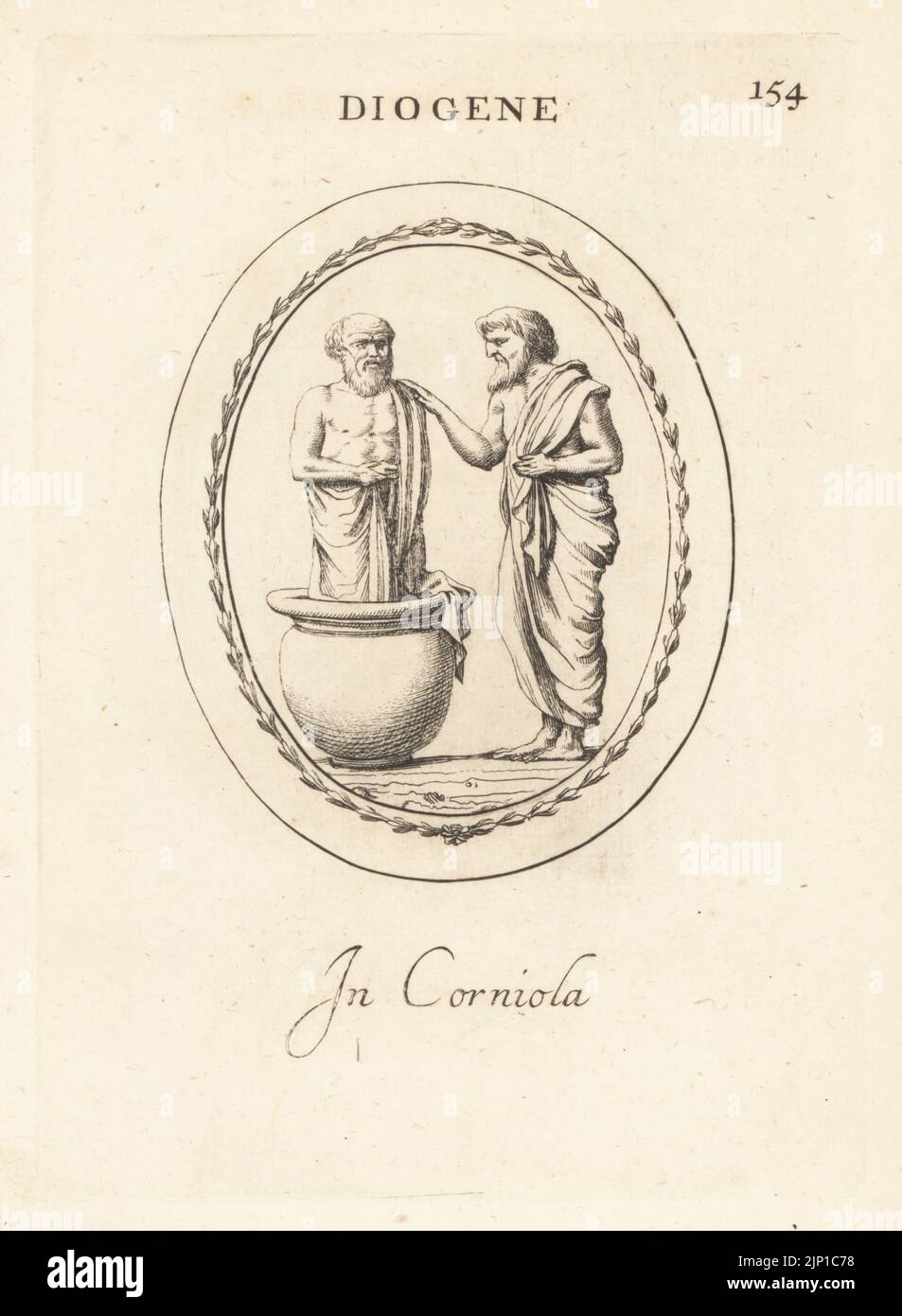 Greek Cynic philosopher Diogenes of Sinope (4th century BC) standing in a jar or pithos. In carnelian. Diogene. In corniola. Copperplate engraving by Giovanni Battista Galestruzzi after Leonardo Agostini from Gemmae et Sculpturae Antiquae Depicti ab Leonardo Augustino Senesi, Abraham Blooteling, Amsterdam, 1685. Stock Photohttps://www.alamy.com/image-license-details/?v=1https://www.alamy.com/greek-cynic-philosopher-diogenes-of-sinope-4th-century-bc-standing-in-a-jar-or-pithos-in-carnelian-diogene-in-corniola-copperplate-engraving-by-giovanni-battista-galestruzzi-after-leonardo-agostini-from-gemmae-et-sculpturae-antiquae-depicti-ab-leonardo-augustino-senesi-abraham-blooteling-amsterdam-1685-image478233932.html
Greek Cynic philosopher Diogenes of Sinope (4th century BC) standing in a jar or pithos. In carnelian. Diogene. In corniola. Copperplate engraving by Giovanni Battista Galestruzzi after Leonardo Agostini from Gemmae et Sculpturae Antiquae Depicti ab Leonardo Augustino Senesi, Abraham Blooteling, Amsterdam, 1685. Stock Photohttps://www.alamy.com/image-license-details/?v=1https://www.alamy.com/greek-cynic-philosopher-diogenes-of-sinope-4th-century-bc-standing-in-a-jar-or-pithos-in-carnelian-diogene-in-corniola-copperplate-engraving-by-giovanni-battista-galestruzzi-after-leonardo-agostini-from-gemmae-et-sculpturae-antiquae-depicti-ab-leonardo-augustino-senesi-abraham-blooteling-amsterdam-1685-image478233932.htmlRM2JP1C78–Greek Cynic philosopher Diogenes of Sinope (4th century BC) standing in a jar or pithos. In carnelian. Diogene. In corniola. Copperplate engraving by Giovanni Battista Galestruzzi after Leonardo Agostini from Gemmae et Sculpturae Antiquae Depicti ab Leonardo Augustino Senesi, Abraham Blooteling, Amsterdam, 1685.
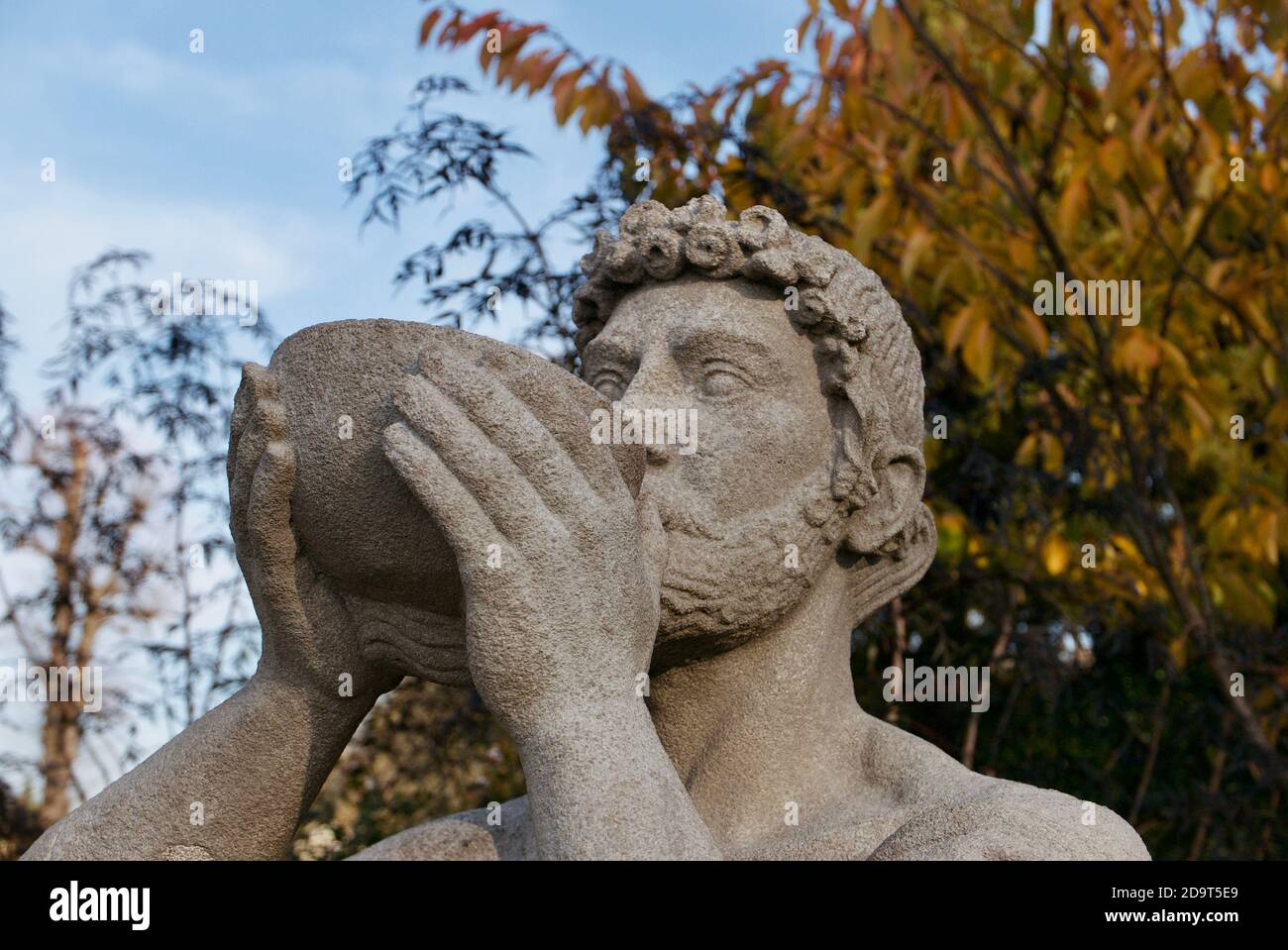 Diogenes drinking from a bowl sculpture from Greek mythology. Statue was created by artist Mark Batten. Located within Hampstead Heath, London. Stock Photohttps://www.alamy.com/image-license-details/?v=1https://www.alamy.com/diogenes-drinking-from-a-bowl-sculpture-from-greek-mythology-statue-was-created-by-artist-mark-batten-located-within-hampstead-heath-london-image384691169.html
Diogenes drinking from a bowl sculpture from Greek mythology. Statue was created by artist Mark Batten. Located within Hampstead Heath, London. Stock Photohttps://www.alamy.com/image-license-details/?v=1https://www.alamy.com/diogenes-drinking-from-a-bowl-sculpture-from-greek-mythology-statue-was-created-by-artist-mark-batten-located-within-hampstead-heath-london-image384691169.htmlRM2D9T5E9–Diogenes drinking from a bowl sculpture from Greek mythology. Statue was created by artist Mark Batten. Located within Hampstead Heath, London.
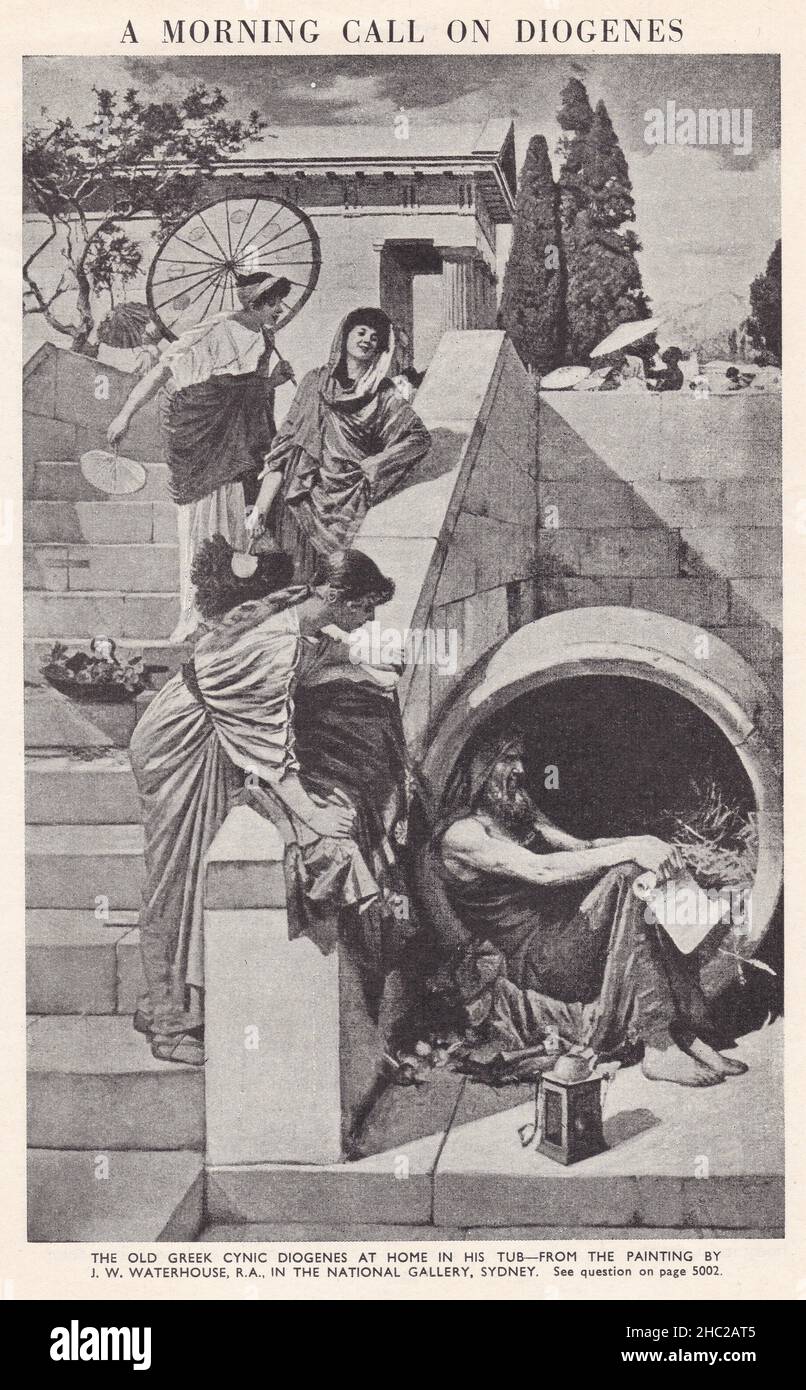 The Old Greek Cynic Diogenes at home in his tub - From the painting by J. W. Waterhouse. Stock Photohttps://www.alamy.com/image-license-details/?v=1https://www.alamy.com/the-old-greek-cynic-diogenes-at-home-in-his-tub-from-the-painting-by-j-w-waterhouse-image454897861.html
The Old Greek Cynic Diogenes at home in his tub - From the painting by J. W. Waterhouse. Stock Photohttps://www.alamy.com/image-license-details/?v=1https://www.alamy.com/the-old-greek-cynic-diogenes-at-home-in-his-tub-from-the-painting-by-j-w-waterhouse-image454897861.htmlRF2HC2AT5–The Old Greek Cynic Diogenes at home in his tub - From the painting by J. W. Waterhouse.
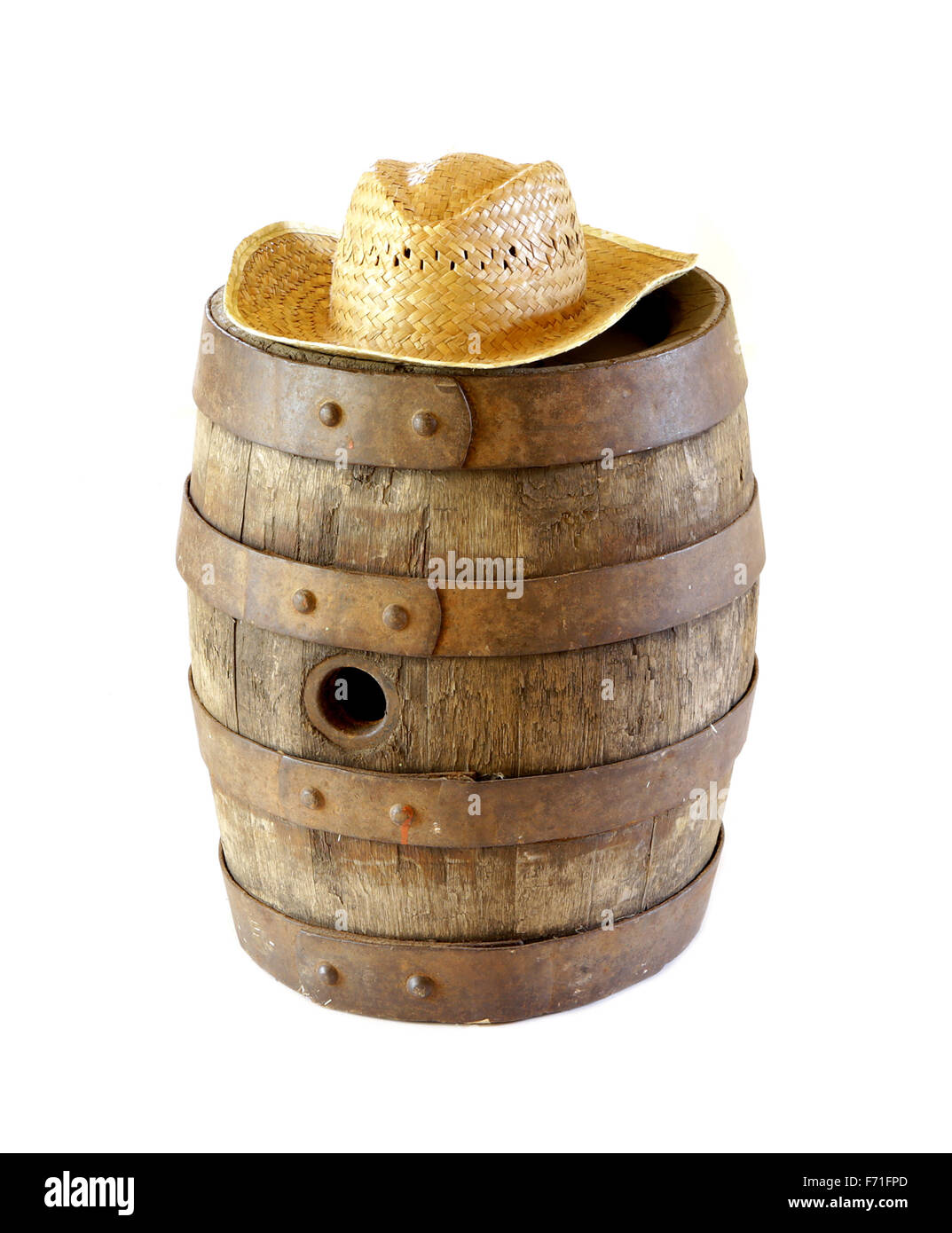 Diogenes of Sinope and barrel metaphor representing very old vintage cask and straw hat Stock Photohttps://www.alamy.com/image-license-details/?v=1https://www.alamy.com/stock-photo-diogenes-of-sinope-and-barrel-metaphor-representing-very-old-vintage-90388773.html
Diogenes of Sinope and barrel metaphor representing very old vintage cask and straw hat Stock Photohttps://www.alamy.com/image-license-details/?v=1https://www.alamy.com/stock-photo-diogenes-of-sinope-and-barrel-metaphor-representing-very-old-vintage-90388773.htmlRFF71FPD–Diogenes of Sinope and barrel metaphor representing very old vintage cask and straw hat
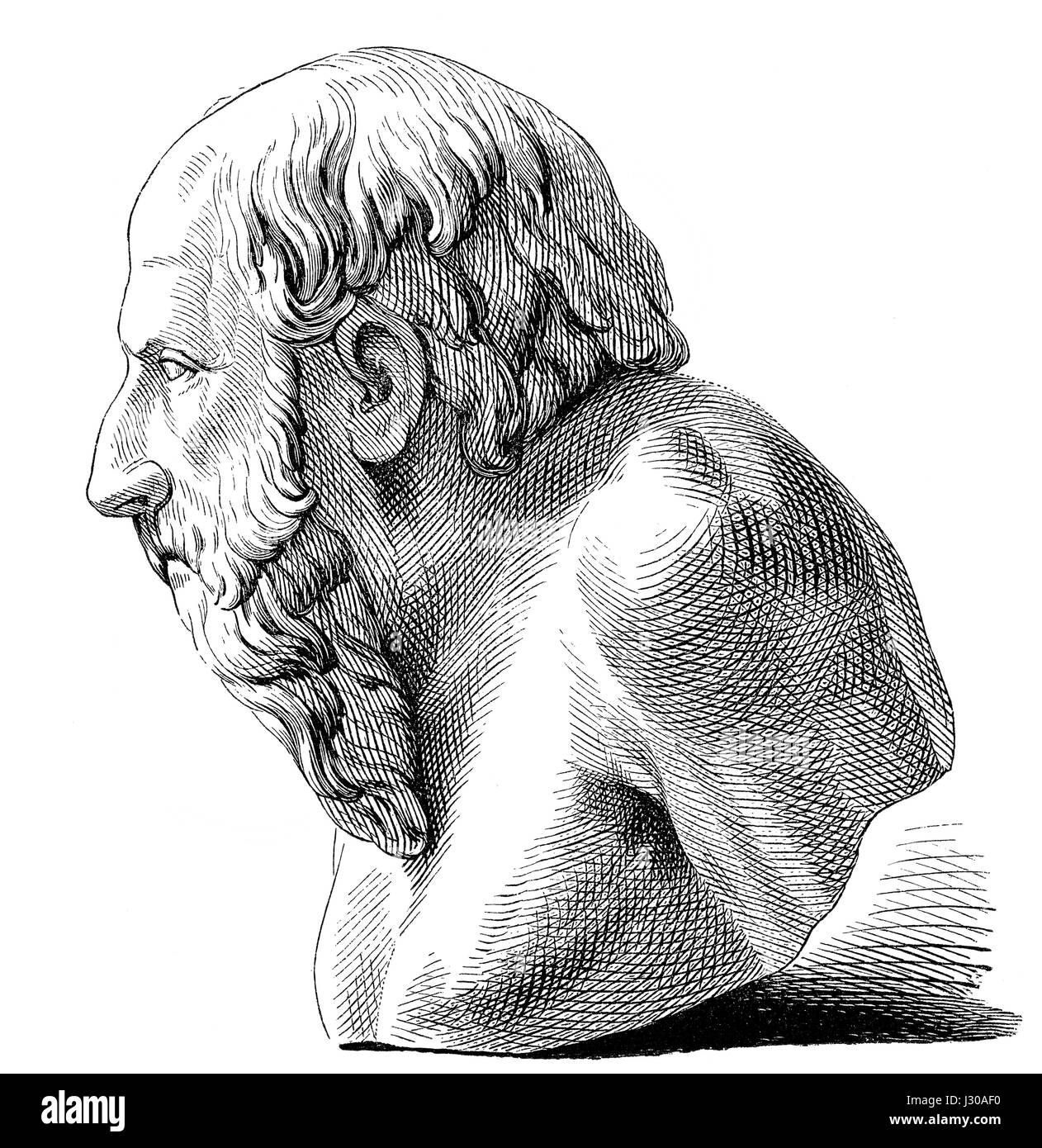 Diogenes, a ancient Greek philosopher Stock Photohttps://www.alamy.com/image-license-details/?v=1https://www.alamy.com/stock-photo-diogenes-a-ancient-greek-philosopher-139535172.html
Diogenes, a ancient Greek philosopher Stock Photohttps://www.alamy.com/image-license-details/?v=1https://www.alamy.com/stock-photo-diogenes-a-ancient-greek-philosopher-139535172.htmlRMJ30AF0–Diogenes, a ancient Greek philosopher
 Diogenes Sitting in His Tub by Jean-Léon Gérôme. (1824-1904), oil on canvas, 1860 Stock Photohttps://www.alamy.com/image-license-details/?v=1https://www.alamy.com/diogenes-sitting-in-his-tub-by-jean-lon-grme-1824-1904-oil-on-canvas-1860-image570812595.html
Diogenes Sitting in His Tub by Jean-Léon Gérôme. (1824-1904), oil on canvas, 1860 Stock Photohttps://www.alamy.com/image-license-details/?v=1https://www.alamy.com/diogenes-sitting-in-his-tub-by-jean-lon-grme-1824-1904-oil-on-canvas-1860-image570812595.htmlRM2T4JN83–Diogenes Sitting in His Tub by Jean-Léon Gérôme. (1824-1904), oil on canvas, 1860
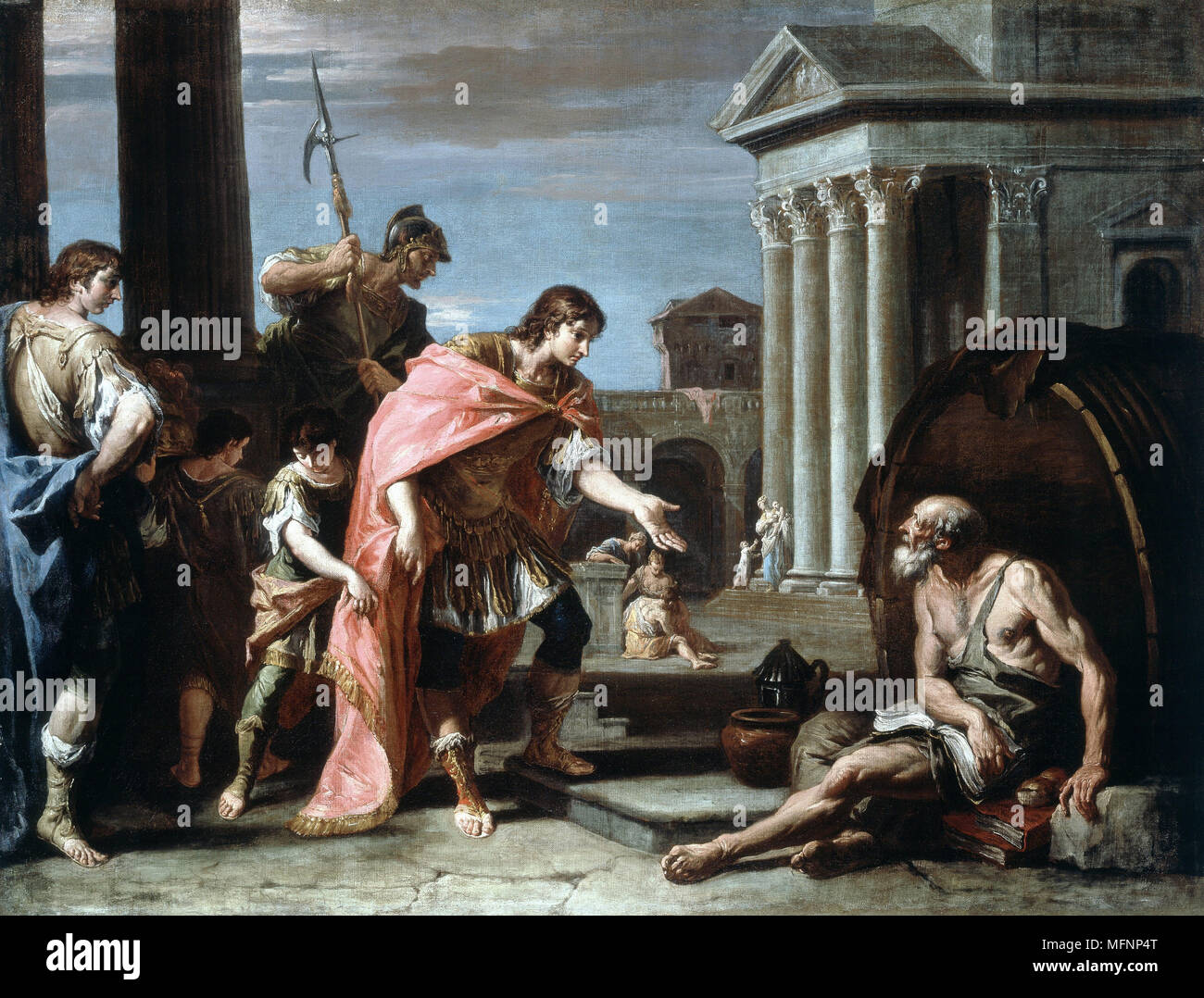 Alexander and Diogenes. Alexander The Great (Alexander III of Macedon 356-323 BC) visiting Diogenes of Sinope (c410 -c320 BC), Greek Cynic philosopher living in his tub in Athens. Sebastiano Ricci (or Rizzi, 1662-1734) Italian painter. Oil on canvas. Stock Photohttps://www.alamy.com/image-license-details/?v=1https://www.alamy.com/alexander-and-diogenes-alexander-the-great-alexander-iii-of-macedon-356-323-bc-visiting-diogenes-of-sinope-c410-c320-bc-greek-cynic-philosopher-living-in-his-tub-in-athens-sebastiano-ricci-or-rizzi-1662-1734-italian-painter-oil-on-canvas-image181801896.html
Alexander and Diogenes. Alexander The Great (Alexander III of Macedon 356-323 BC) visiting Diogenes of Sinope (c410 -c320 BC), Greek Cynic philosopher living in his tub in Athens. Sebastiano Ricci (or Rizzi, 1662-1734) Italian painter. Oil on canvas. Stock Photohttps://www.alamy.com/image-license-details/?v=1https://www.alamy.com/alexander-and-diogenes-alexander-the-great-alexander-iii-of-macedon-356-323-bc-visiting-diogenes-of-sinope-c410-c320-bc-greek-cynic-philosopher-living-in-his-tub-in-athens-sebastiano-ricci-or-rizzi-1662-1734-italian-painter-oil-on-canvas-image181801896.htmlRMMFNP4T–Alexander and Diogenes. Alexander The Great (Alexander III of Macedon 356-323 BC) visiting Diogenes of Sinope (c410 -c320 BC), Greek Cynic philosopher living in his tub in Athens. Sebastiano Ricci (or Rizzi, 1662-1734) Italian painter. Oil on canvas.
 Diogenes from 'True Portraits and Lives of Illustrious Men' by André Thévet (1516-1590). See description for more information. Stock Photohttps://www.alamy.com/image-license-details/?v=1https://www.alamy.com/stock-photo-diogenes-from-true-portraits-and-lives-of-illustrious-men-by-andr-73224872.html
Diogenes from 'True Portraits and Lives of Illustrious Men' by André Thévet (1516-1590). See description for more information. Stock Photohttps://www.alamy.com/image-license-details/?v=1https://www.alamy.com/stock-photo-diogenes-from-true-portraits-and-lives-of-illustrious-men-by-andr-73224872.htmlRME73K20–Diogenes from 'True Portraits and Lives of Illustrious Men' by André Thévet (1516-1590). See description for more information.
 Diogenes, also known as Diogenes the Cynic or Diogenes of Sinope, Greek philosopher, one of the founders of Cynicism, c.412-323 BC. Diogenes. Copperplate engraving by Bartholomaus Kilian after an illustration by Joachim von Sandrart from his LAcademia Todesca, della Architectura, Scultura & Pittura, oder Teutsche Academie, der Edlen Bau- Bild- und Mahlerey-Kunste, German Academy of Architecture, Sculpture and Painting, Jacob von Sandrart, Nuremberg, 1675. Stock Photohttps://www.alamy.com/image-license-details/?v=1https://www.alamy.com/diogenes-also-known-as-diogenes-the-cynic-or-diogenes-of-sinope-greek-philosopher-one-of-the-founders-of-cynicism-c412-323-bc-diogenes-copperplate-engraving-by-bartholomaus-kilian-after-an-illustration-by-joachim-von-sandrart-from-his-lacademia-todesca-della-architectura-scultura-pittura-oder-teutsche-academie-der-edlen-bau-bild-und-mahlerey-kunste-german-academy-of-architecture-sculpture-and-painting-jacob-von-sandrart-nuremberg-1675-image571847377.html
Diogenes, also known as Diogenes the Cynic or Diogenes of Sinope, Greek philosopher, one of the founders of Cynicism, c.412-323 BC. Diogenes. Copperplate engraving by Bartholomaus Kilian after an illustration by Joachim von Sandrart from his LAcademia Todesca, della Architectura, Scultura & Pittura, oder Teutsche Academie, der Edlen Bau- Bild- und Mahlerey-Kunste, German Academy of Architecture, Sculpture and Painting, Jacob von Sandrart, Nuremberg, 1675. Stock Photohttps://www.alamy.com/image-license-details/?v=1https://www.alamy.com/diogenes-also-known-as-diogenes-the-cynic-or-diogenes-of-sinope-greek-philosopher-one-of-the-founders-of-cynicism-c412-323-bc-diogenes-copperplate-engraving-by-bartholomaus-kilian-after-an-illustration-by-joachim-von-sandrart-from-his-lacademia-todesca-della-architectura-scultura-pittura-oder-teutsche-academie-der-edlen-bau-bild-und-mahlerey-kunste-german-academy-of-architecture-sculpture-and-painting-jacob-von-sandrart-nuremberg-1675-image571847377.htmlRM2T69W4H–Diogenes, also known as Diogenes the Cynic or Diogenes of Sinope, Greek philosopher, one of the founders of Cynicism, c.412-323 BC. Diogenes. Copperplate engraving by Bartholomaus Kilian after an illustration by Joachim von Sandrart from his LAcademia Todesca, della Architectura, Scultura & Pittura, oder Teutsche Academie, der Edlen Bau- Bild- und Mahlerey-Kunste, German Academy of Architecture, Sculpture and Painting, Jacob von Sandrart, Nuremberg, 1675.
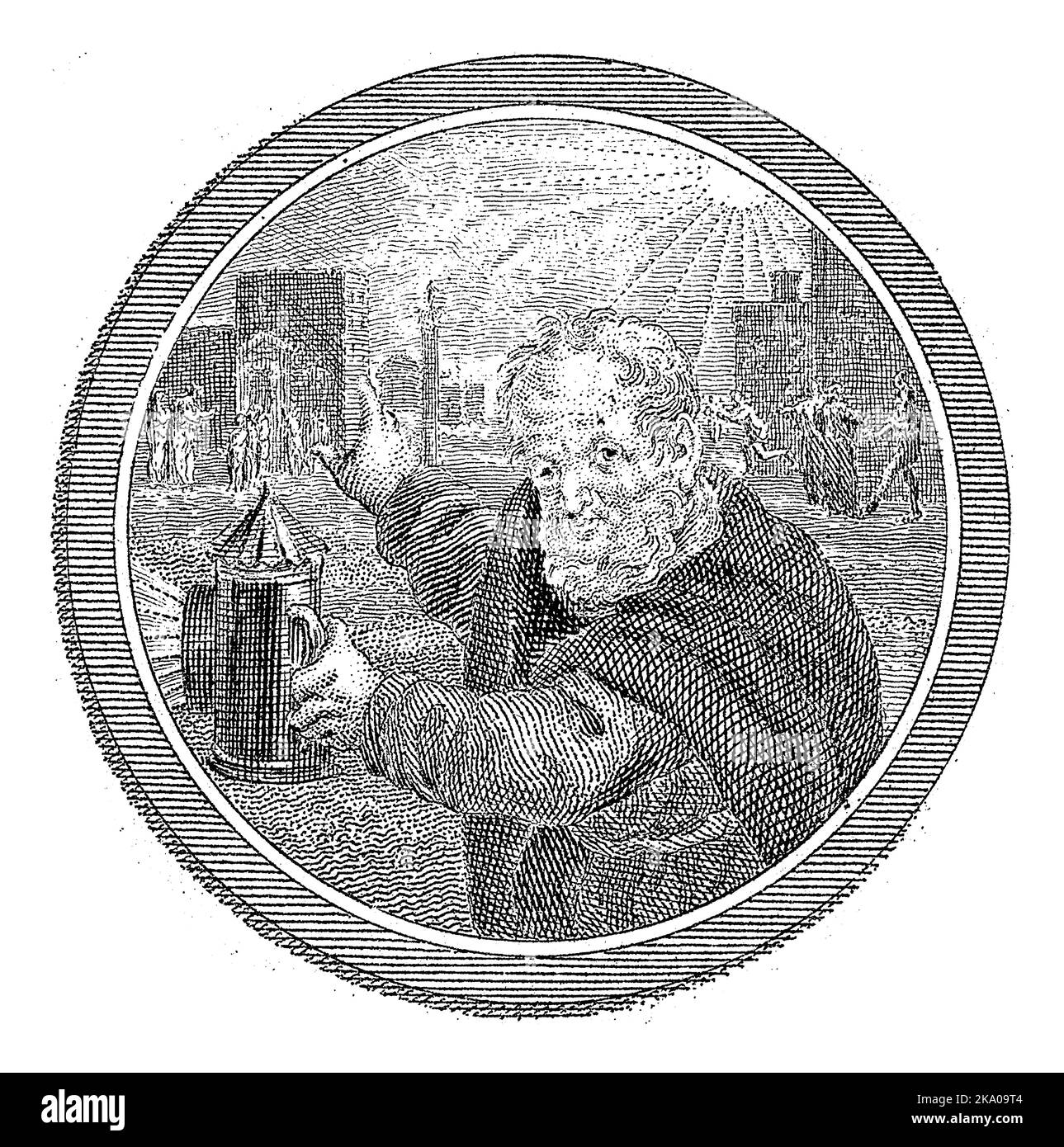 Diogenes with the Lantern, Reinier Vinkeles (I), 1751 - 1816 Stock Photohttps://www.alamy.com/image-license-details/?v=1https://www.alamy.com/diogenes-with-the-lantern-reinier-vinkeles-i-1751-1816-image488044596.html
Diogenes with the Lantern, Reinier Vinkeles (I), 1751 - 1816 Stock Photohttps://www.alamy.com/image-license-details/?v=1https://www.alamy.com/diogenes-with-the-lantern-reinier-vinkeles-i-1751-1816-image488044596.htmlRF2KA09T4–Diogenes with the Lantern, Reinier Vinkeles (I), 1751 - 1816
 Conceptual ancient times messaging technology 3D composition. Diogenes era. Stock Photohttps://www.alamy.com/image-license-details/?v=1https://www.alamy.com/conceptual-ancient-times-messaging-technology-3d-composition-diogenes-image156243002.html
Conceptual ancient times messaging technology 3D composition. Diogenes era. Stock Photohttps://www.alamy.com/image-license-details/?v=1https://www.alamy.com/conceptual-ancient-times-messaging-technology-3d-composition-diogenes-image156243002.htmlRFK25DF6–Conceptual ancient times messaging technology 3D composition. Diogenes era.
 Alexander visiting Diogenes late 18th–early 19th century Italian Alexander, visiting the celebrated Cynic philosopher, who lived in a tub, inquired whether there was some favor he might grant. Diogenes responded: 'Get out of my sunlight.' The working of the honey-colored stone in layers abets the sunlight effect nicely.. Alexander visiting Diogenes 198587 Stock Photohttps://www.alamy.com/image-license-details/?v=1https://www.alamy.com/alexander-visiting-diogenes-late-18thearly-19th-century-italian-alexander-visiting-the-celebrated-cynic-philosopher-who-lived-in-a-tub-inquired-whether-there-was-some-favor-he-might-grant-diogenes-responded-get-out-of-my-sunlight-the-working-of-the-honey-colored-stone-in-layers-abets-the-sunlight-effect-nicely-alexander-visiting-diogenes-198587-image458126905.html
Alexander visiting Diogenes late 18th–early 19th century Italian Alexander, visiting the celebrated Cynic philosopher, who lived in a tub, inquired whether there was some favor he might grant. Diogenes responded: 'Get out of my sunlight.' The working of the honey-colored stone in layers abets the sunlight effect nicely.. Alexander visiting Diogenes 198587 Stock Photohttps://www.alamy.com/image-license-details/?v=1https://www.alamy.com/alexander-visiting-diogenes-late-18thearly-19th-century-italian-alexander-visiting-the-celebrated-cynic-philosopher-who-lived-in-a-tub-inquired-whether-there-was-some-favor-he-might-grant-diogenes-responded-get-out-of-my-sunlight-the-working-of-the-honey-colored-stone-in-layers-abets-the-sunlight-effect-nicely-alexander-visiting-diogenes-198587-image458126905.htmlRM2HH9DF5–Alexander visiting Diogenes late 18th–early 19th century Italian Alexander, visiting the celebrated Cynic philosopher, who lived in a tub, inquired whether there was some favor he might grant. Diogenes responded: 'Get out of my sunlight.' The working of the honey-colored stone in layers abets the sunlight effect nicely.. Alexander visiting Diogenes 198587
 Diogenes searching for a honest man, ca. 1645-47. Carried a lamp during the day, claiming to be looking for an honest man. Stock Photohttps://www.alamy.com/image-license-details/?v=1https://www.alamy.com/diogenes-searching-for-a-honest-man-ca-1645-47-carried-a-lamp-during-the-day-claiming-to-be-looking-for-an-honest-man-image349003516.html
Diogenes searching for a honest man, ca. 1645-47. Carried a lamp during the day, claiming to be looking for an honest man. Stock Photohttps://www.alamy.com/image-license-details/?v=1https://www.alamy.com/diogenes-searching-for-a-honest-man-ca-1645-47-carried-a-lamp-during-the-day-claiming-to-be-looking-for-an-honest-man-image349003516.htmlRM2B7PDF8–Diogenes searching for a honest man, ca. 1645-47. Carried a lamp during the day, claiming to be looking for an honest man.
 Antisthenes portrait, ancient greek philosopher. Stock Vectorhttps://www.alamy.com/image-license-details/?v=1https://www.alamy.com/antisthenes-portrait-ancient-greek-philosopher-image449578781.html
Antisthenes portrait, ancient greek philosopher. Stock Vectorhttps://www.alamy.com/image-license-details/?v=1https://www.alamy.com/antisthenes-portrait-ancient-greek-philosopher-image449578781.htmlRF2H3C291–Antisthenes portrait, ancient greek philosopher.
 statues of Alexander the Great and the greek filosopher Diogenes at Corinth Greece Stock Photohttps://www.alamy.com/image-license-details/?v=1https://www.alamy.com/stock-photo-statues-of-alexander-the-great-and-the-greek-filosopher-diogenes-at-140028261.html
statues of Alexander the Great and the greek filosopher Diogenes at Corinth Greece Stock Photohttps://www.alamy.com/image-license-details/?v=1https://www.alamy.com/stock-photo-statues-of-alexander-the-great-and-the-greek-filosopher-diogenes-at-140028261.htmlRFJ3PRD9–statues of Alexander the Great and the greek filosopher Diogenes at Corinth Greece
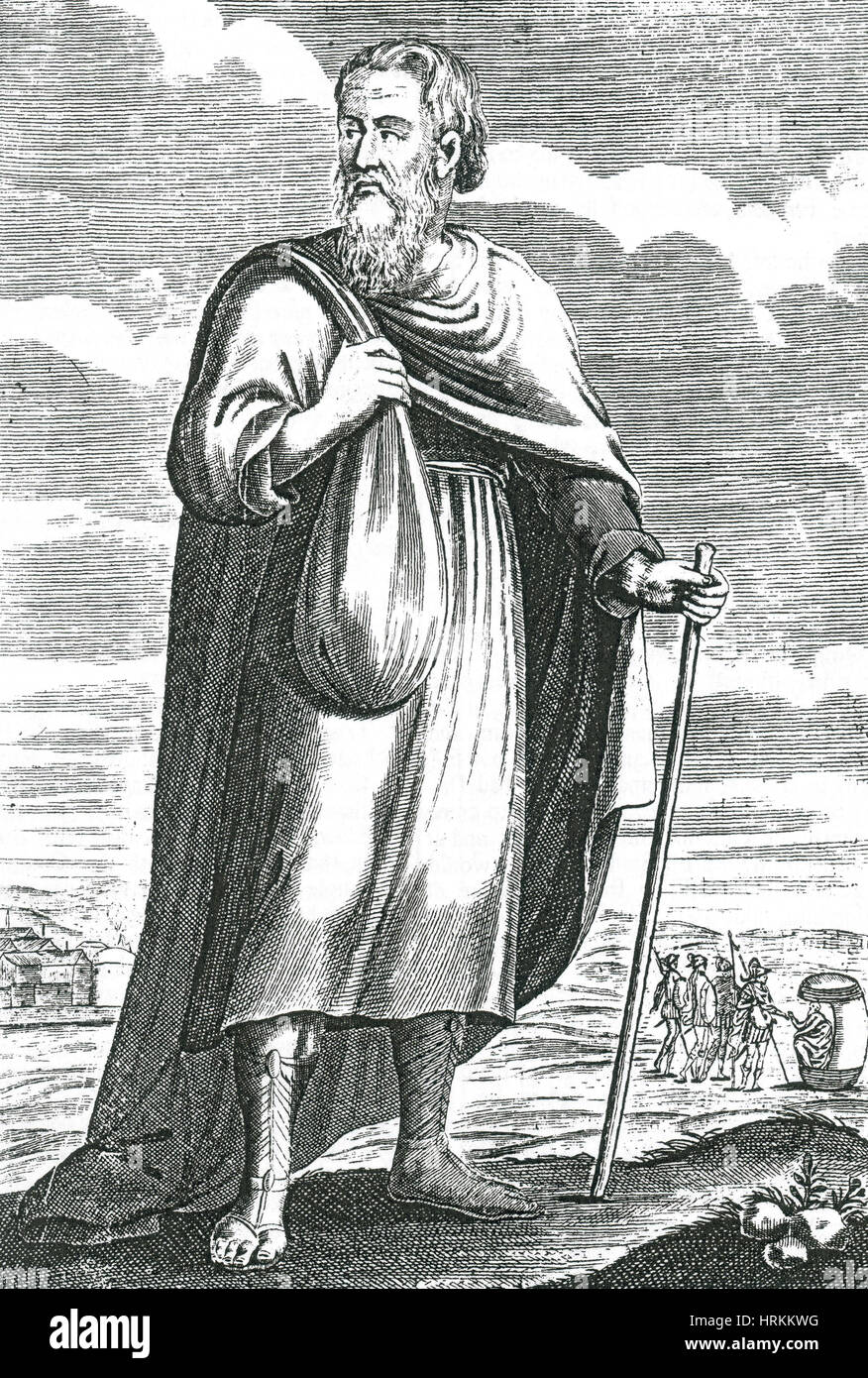 Diogenes of Sinope, Ancient Greek Philosopher Stock Photohttps://www.alamy.com/image-license-details/?v=1https://www.alamy.com/stock-photo-diogenes-of-sinope-ancient-greek-philosopher-135042364.html
Diogenes of Sinope, Ancient Greek Philosopher Stock Photohttps://www.alamy.com/image-license-details/?v=1https://www.alamy.com/stock-photo-diogenes-of-sinope-ancient-greek-philosopher-135042364.htmlRMHRKKWG–Diogenes of Sinope, Ancient Greek Philosopher
 Statue of Alexander the Great & Diogenes in Corinth, Greece. Stock Photohttps://www.alamy.com/image-license-details/?v=1https://www.alamy.com/statue-of-alexander-the-great-diogenes-in-corinth-greece-image544480464.html
Statue of Alexander the Great & Diogenes in Corinth, Greece. Stock Photohttps://www.alamy.com/image-license-details/?v=1https://www.alamy.com/statue-of-alexander-the-great-diogenes-in-corinth-greece-image544480464.htmlRF2PHR6AT–Statue of Alexander the Great & Diogenes in Corinth, Greece.
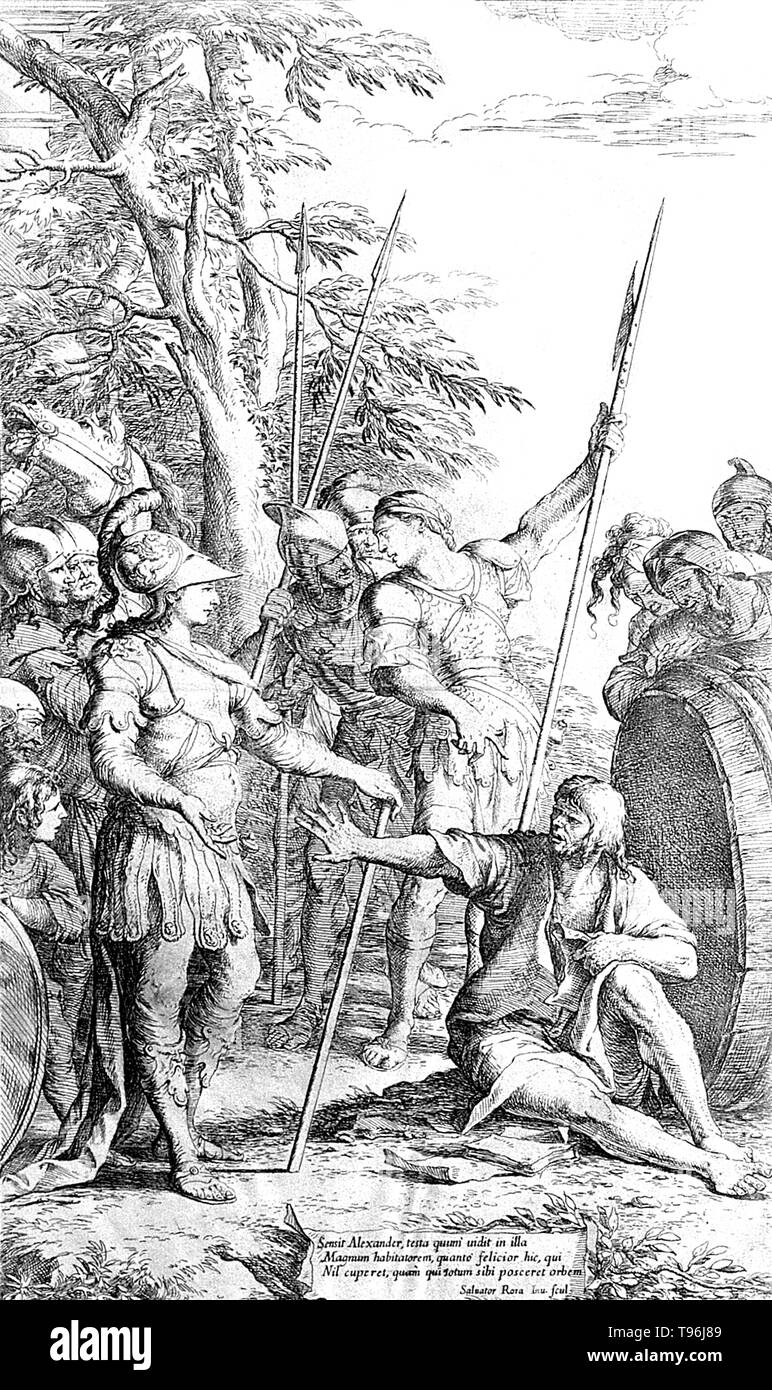 Diogenes, sitting in front of his barrel and being offered whatever he wants by Alexander the Great, asks Alexander to step aside so that he can see the sun. The meeting of Diogenes of Sinope and Alexander the Great is one of the most well-discussed anecdotes from philosophical history. Diogenes of Sinope (412 BC - 323 BC) was a Greek philosopher and one of the founders of Cynic philosophy. He embarrassed Plato, disputed his interpretation of Socrates and sabotaged his lectures. Stock Photohttps://www.alamy.com/image-license-details/?v=1https://www.alamy.com/diogenes-sitting-in-front-of-his-barrel-and-being-offered-whatever-he-wants-by-alexander-the-great-asks-alexander-to-step-aside-so-that-he-can-see-the-sun-the-meeting-of-diogenes-of-sinope-and-alexander-the-great-is-one-of-the-most-well-discussed-anecdotes-from-philosophical-history-diogenes-of-sinope-412-bc-323-bc-was-a-greek-philosopher-and-one-of-the-founders-of-cynic-philosophy-he-embarrassed-plato-disputed-his-interpretation-of-socrates-and-sabotaged-his-lectures-image246623113.html
Diogenes, sitting in front of his barrel and being offered whatever he wants by Alexander the Great, asks Alexander to step aside so that he can see the sun. The meeting of Diogenes of Sinope and Alexander the Great is one of the most well-discussed anecdotes from philosophical history. Diogenes of Sinope (412 BC - 323 BC) was a Greek philosopher and one of the founders of Cynic philosophy. He embarrassed Plato, disputed his interpretation of Socrates and sabotaged his lectures. Stock Photohttps://www.alamy.com/image-license-details/?v=1https://www.alamy.com/diogenes-sitting-in-front-of-his-barrel-and-being-offered-whatever-he-wants-by-alexander-the-great-asks-alexander-to-step-aside-so-that-he-can-see-the-sun-the-meeting-of-diogenes-of-sinope-and-alexander-the-great-is-one-of-the-most-well-discussed-anecdotes-from-philosophical-history-diogenes-of-sinope-412-bc-323-bc-was-a-greek-philosopher-and-one-of-the-founders-of-cynic-philosophy-he-embarrassed-plato-disputed-his-interpretation-of-socrates-and-sabotaged-his-lectures-image246623113.htmlRMT96J89–Diogenes, sitting in front of his barrel and being offered whatever he wants by Alexander the Great, asks Alexander to step aside so that he can see the sun. The meeting of Diogenes of Sinope and Alexander the Great is one of the most well-discussed anecdotes from philosophical history. Diogenes of Sinope (412 BC - 323 BC) was a Greek philosopher and one of the founders of Cynic philosophy. He embarrassed Plato, disputed his interpretation of Socrates and sabotaged his lectures.
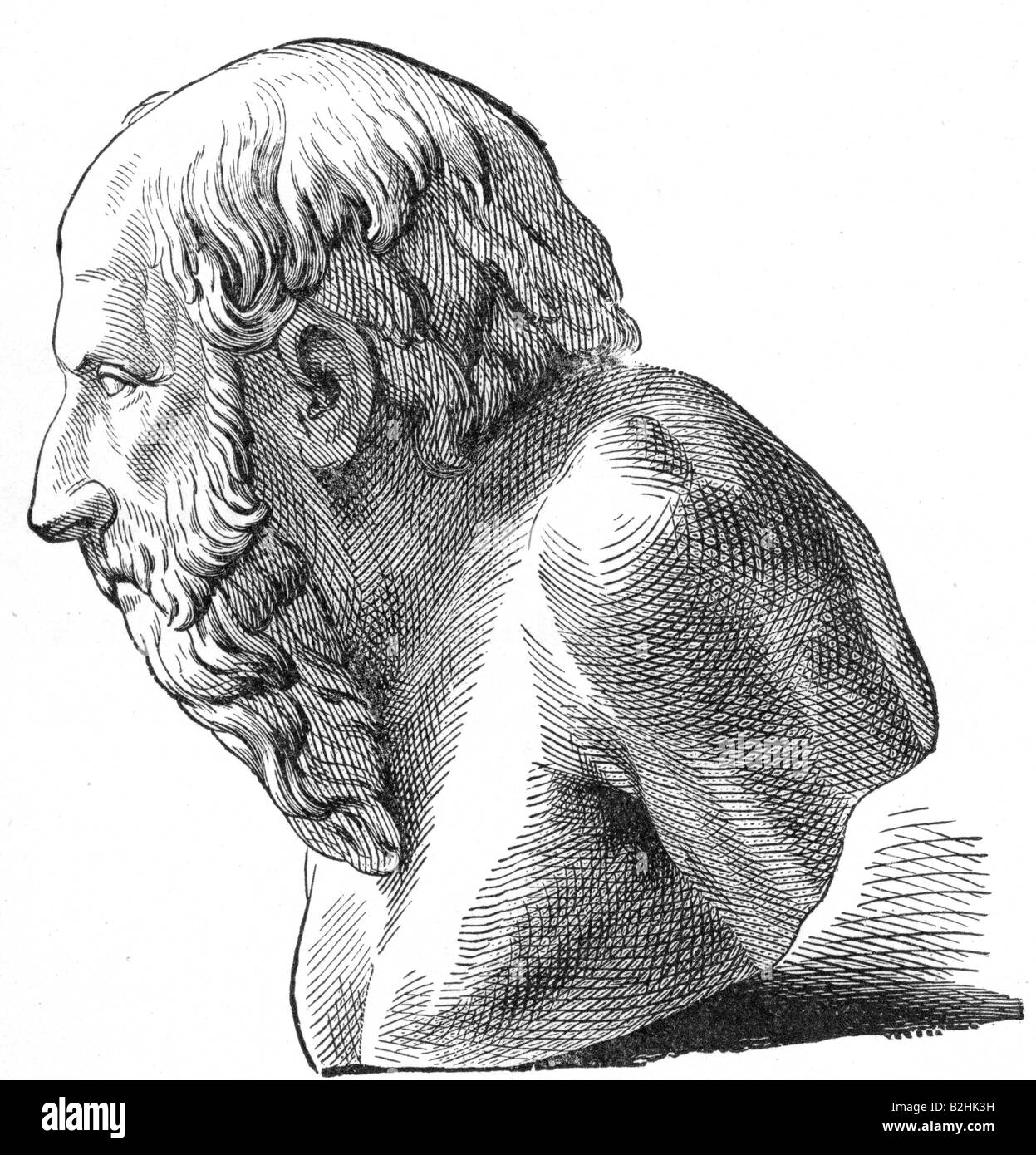 Diogenes of Sinope, 412 - 323 BC, Greek philosopher, portrait, wood engraving after bust, Villa Albani, Rome, Italy, Stock Photohttps://www.alamy.com/image-license-details/?v=1https://www.alamy.com/stock-photo-diogenes-of-sinope-412-323-bc-greek-philosopher-portrait-wood-engraving-18827861.html
Diogenes of Sinope, 412 - 323 BC, Greek philosopher, portrait, wood engraving after bust, Villa Albani, Rome, Italy, Stock Photohttps://www.alamy.com/image-license-details/?v=1https://www.alamy.com/stock-photo-diogenes-of-sinope-412-323-bc-greek-philosopher-portrait-wood-engraving-18827861.htmlRMB2HK3H–Diogenes of Sinope, 412 - 323 BC, Greek philosopher, portrait, wood engraving after bust, Villa Albani, Rome, Italy,
 The meeting of the Ancient Greek cynic philosopher Diogenes of Sinope and Alexander the Great, engraving by Quirin Mark after Peter Paul Rubens, 1784. Stock Photohttps://www.alamy.com/image-license-details/?v=1https://www.alamy.com/the-meeting-of-the-ancient-greek-cynic-philosopher-diogenes-of-sinope-and-alexander-the-great-engraving-by-quirin-mark-after-peter-paul-rubens-1784-image560416761.html
The meeting of the Ancient Greek cynic philosopher Diogenes of Sinope and Alexander the Great, engraving by Quirin Mark after Peter Paul Rubens, 1784. Stock Photohttps://www.alamy.com/image-license-details/?v=1https://www.alamy.com/the-meeting-of-the-ancient-greek-cynic-philosopher-diogenes-of-sinope-and-alexander-the-great-engraving-by-quirin-mark-after-peter-paul-rubens-1784-image560416761.htmlRM2RFN589–The meeting of the Ancient Greek cynic philosopher Diogenes of Sinope and Alexander the Great, engraving by Quirin Mark after Peter Paul Rubens, 1784.
 Collier's new encyclopedia : a loose-leaf and self-revising reference work ..with 515 illustrations and ninety-six maps . e length of two feetsix inches. dividual (female) and the spermatozoidby another (male). It is opposed tomonoecious. DIOGENES (di-oje-nez), a celebratedGreek cynic; was a native of Sinope, inPontus, where he was born 413 B. CHe was banished from his country forcoining false money, and repaired toAthens, where he studied philosophyunder Antisthenes. He walked aboutthe streets with a tub on his head, inwhich it is said he lodged at night. Beingon a voyage, he was taken by pir Stock Photohttps://www.alamy.com/image-license-details/?v=1https://www.alamy.com/colliers-new-encyclopedia-a-loose-leaf-and-self-revising-reference-work-with-515-illustrations-and-ninety-six-maps-e-length-of-two-feetsix-inches-dividual-female-and-the-spermatozoidby-another-male-it-is-opposed-tomonoecious-diogenes-di-oje-nez-a-celebratedgreek-cynic-was-a-native-of-sinope-inpontus-where-he-was-born-413-b-che-was-banished-from-his-country-forcoining-false-money-and-repaired-toathens-where-he-studied-philosophyunder-antisthenes-he-walked-aboutthe-streets-with-a-tub-on-his-head-inwhich-it-is-said-he-lodged-at-night-beingon-a-voyage-he-was-taken-by-pir-image343036945.html
Collier's new encyclopedia : a loose-leaf and self-revising reference work ..with 515 illustrations and ninety-six maps . e length of two feetsix inches. dividual (female) and the spermatozoidby another (male). It is opposed tomonoecious. DIOGENES (di-oje-nez), a celebratedGreek cynic; was a native of Sinope, inPontus, where he was born 413 B. CHe was banished from his country forcoining false money, and repaired toAthens, where he studied philosophyunder Antisthenes. He walked aboutthe streets with a tub on his head, inwhich it is said he lodged at night. Beingon a voyage, he was taken by pir Stock Photohttps://www.alamy.com/image-license-details/?v=1https://www.alamy.com/colliers-new-encyclopedia-a-loose-leaf-and-self-revising-reference-work-with-515-illustrations-and-ninety-six-maps-e-length-of-two-feetsix-inches-dividual-female-and-the-spermatozoidby-another-male-it-is-opposed-tomonoecious-diogenes-di-oje-nez-a-celebratedgreek-cynic-was-a-native-of-sinope-inpontus-where-he-was-born-413-b-che-was-banished-from-his-country-forcoining-false-money-and-repaired-toathens-where-he-studied-philosophyunder-antisthenes-he-walked-aboutthe-streets-with-a-tub-on-his-head-inwhich-it-is-said-he-lodged-at-night-beingon-a-voyage-he-was-taken-by-pir-image343036945.htmlRM2AX2K3D–Collier's new encyclopedia : a loose-leaf and self-revising reference work ..with 515 illustrations and ninety-six maps . e length of two feetsix inches. dividual (female) and the spermatozoidby another (male). It is opposed tomonoecious. DIOGENES (di-oje-nez), a celebratedGreek cynic; was a native of Sinope, inPontus, where he was born 413 B. CHe was banished from his country forcoining false money, and repaired toAthens, where he studied philosophyunder Antisthenes. He walked aboutthe streets with a tub on his head, inwhich it is said he lodged at night. Beingon a voyage, he was taken by pir
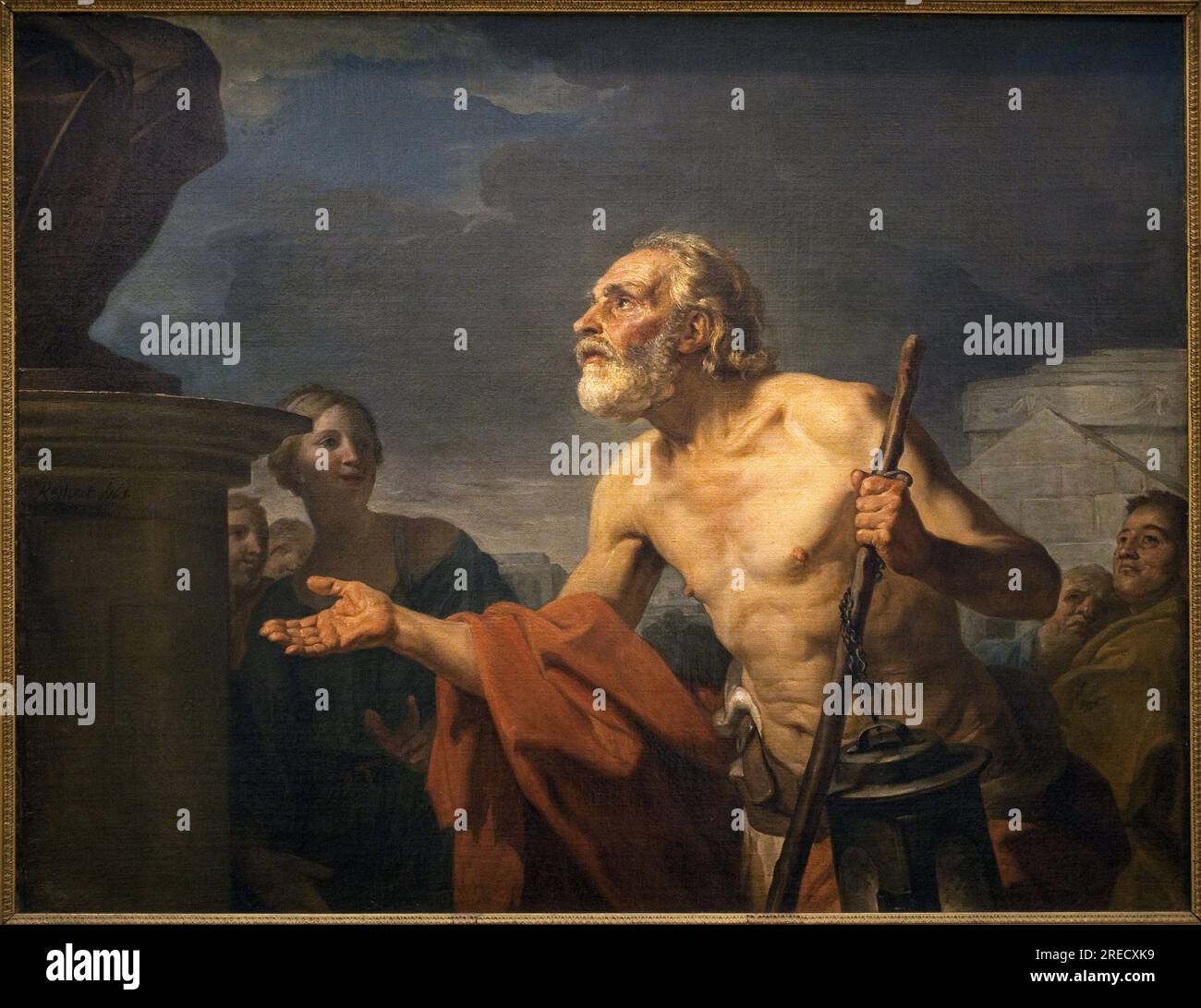 Diogene demandant l'aumone aux statues. (Diogene de Sinope dit le cynique, vers 413-vers 327 avant JC). Peinture de Jean Bernard Restout (1732-1797), huile sur toile, 1765. Musee des Beaux Arts de Toulouse. Stock Photohttps://www.alamy.com/image-license-details/?v=1https://www.alamy.com/diogene-demandant-laumone-aux-statues-diogene-de-sinope-dit-le-cynique-vers-413-vers-327-avant-jc-peinture-de-jean-bernard-restout-1732-1797-huile-sur-toile-1765-musee-des-beaux-arts-de-toulouse-image559621309.html
Diogene demandant l'aumone aux statues. (Diogene de Sinope dit le cynique, vers 413-vers 327 avant JC). Peinture de Jean Bernard Restout (1732-1797), huile sur toile, 1765. Musee des Beaux Arts de Toulouse. Stock Photohttps://www.alamy.com/image-license-details/?v=1https://www.alamy.com/diogene-demandant-laumone-aux-statues-diogene-de-sinope-dit-le-cynique-vers-413-vers-327-avant-jc-peinture-de-jean-bernard-restout-1732-1797-huile-sur-toile-1765-musee-des-beaux-arts-de-toulouse-image559621309.htmlRM2RECXK9–Diogene demandant l'aumone aux statues. (Diogene de Sinope dit le cynique, vers 413-vers 327 avant JC). Peinture de Jean Bernard Restout (1732-1797), huile sur toile, 1765. Musee des Beaux Arts de Toulouse.
 Diogenes of Sinope and barrel metaphor representing very old vintage cask and straw hat Stock Photohttps://www.alamy.com/image-license-details/?v=1https://www.alamy.com/stock-photo-diogenes-of-sinope-and-barrel-metaphor-representing-very-old-vintage-90388775.html
Diogenes of Sinope and barrel metaphor representing very old vintage cask and straw hat Stock Photohttps://www.alamy.com/image-license-details/?v=1https://www.alamy.com/stock-photo-diogenes-of-sinope-and-barrel-metaphor-representing-very-old-vintage-90388775.htmlRFF71FPF–Diogenes of Sinope and barrel metaphor representing very old vintage cask and straw hat
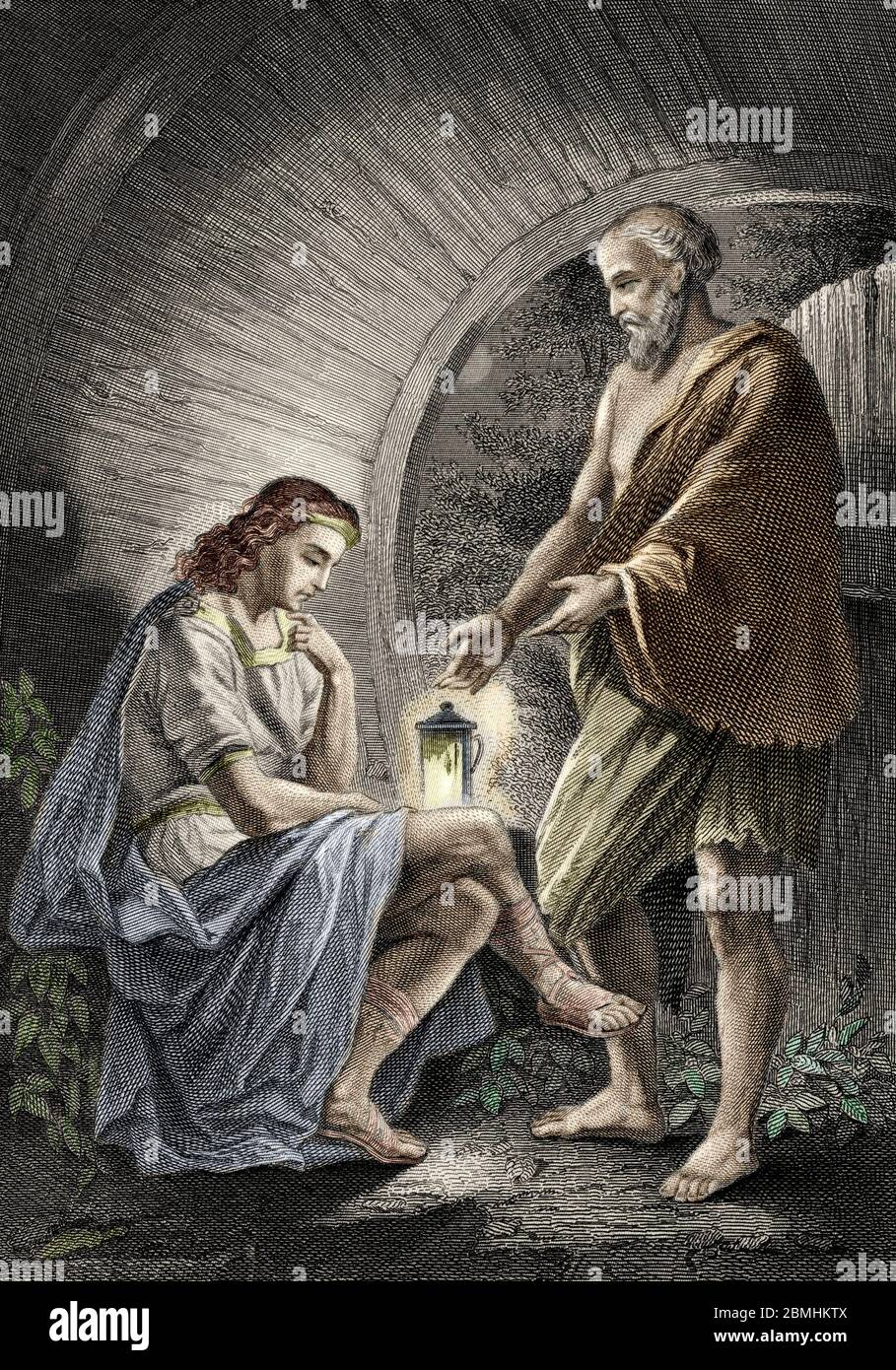 'Le philosophe grec Diogene de Sinope dit le cynique, (vers 413-vers 327 avant JC), face a Alexandre le Grand assis pres de sa lanterne allumee' (Gree Stock Photohttps://www.alamy.com/image-license-details/?v=1https://www.alamy.com/le-philosophe-grec-diogene-de-sinope-dit-le-cynique-vers-413-vers-327-avant-jc-face-a-alexandre-le-grand-assis-pres-de-sa-lanterne-allumee-gree-image356889258.html
'Le philosophe grec Diogene de Sinope dit le cynique, (vers 413-vers 327 avant JC), face a Alexandre le Grand assis pres de sa lanterne allumee' (Gree Stock Photohttps://www.alamy.com/image-license-details/?v=1https://www.alamy.com/le-philosophe-grec-diogene-de-sinope-dit-le-cynique-vers-413-vers-327-avant-jc-face-a-alexandre-le-grand-assis-pres-de-sa-lanterne-allumee-gree-image356889258.htmlRM2BMHKTX–'Le philosophe grec Diogene de Sinope dit le cynique, (vers 413-vers 327 avant JC), face a Alexandre le Grand assis pres de sa lanterne allumee' (Gree
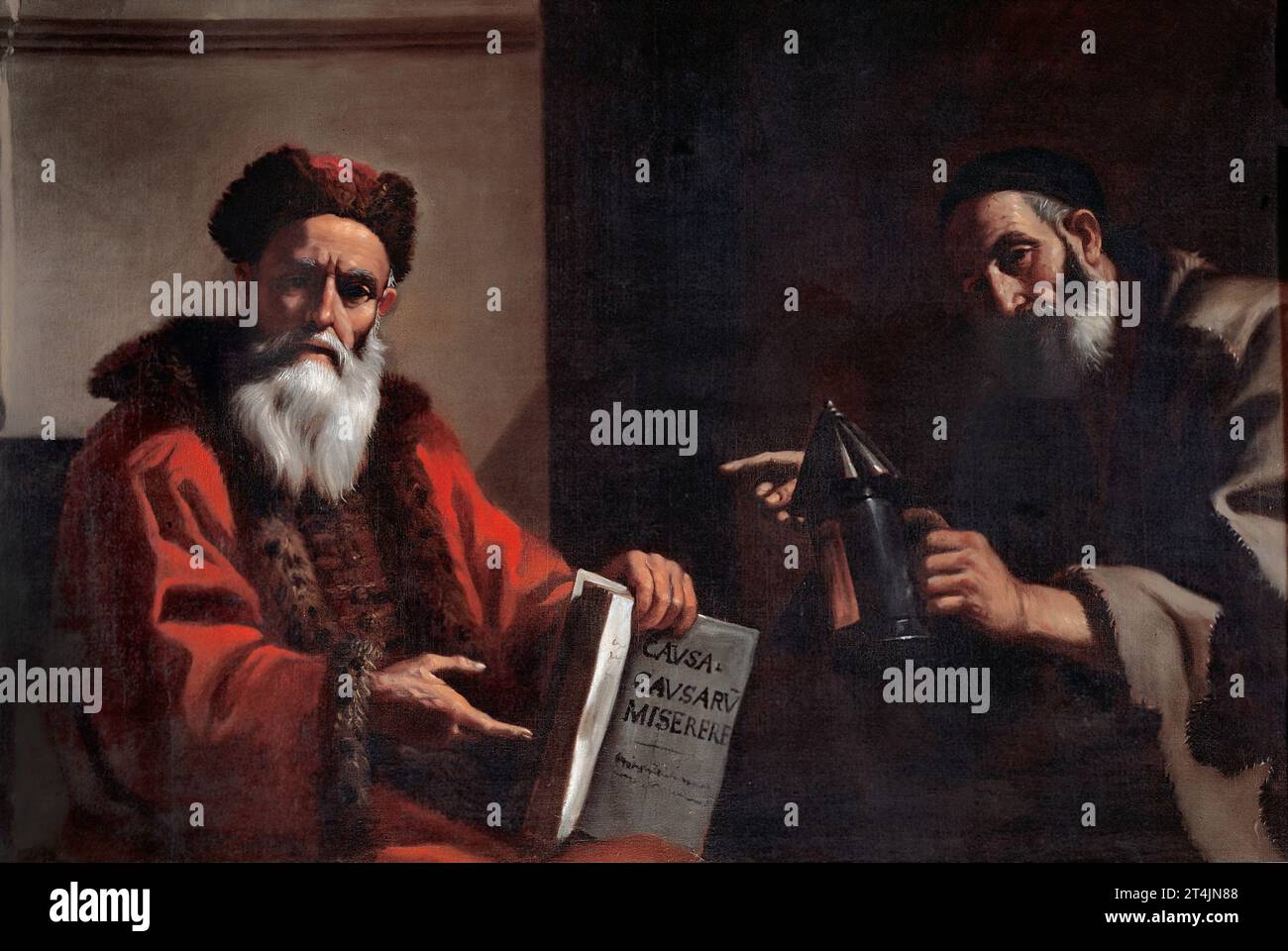 Diogenes and Plato by Mattia Preti (1613–1699), oil on canvas, 1649 Stock Photohttps://www.alamy.com/image-license-details/?v=1https://www.alamy.com/diogenes-and-plato-by-mattia-preti-16131699-oil-on-canvas-1649-image570812600.html
Diogenes and Plato by Mattia Preti (1613–1699), oil on canvas, 1649 Stock Photohttps://www.alamy.com/image-license-details/?v=1https://www.alamy.com/diogenes-and-plato-by-mattia-preti-16131699-oil-on-canvas-1649-image570812600.htmlRM2T4JN88–Diogenes and Plato by Mattia Preti (1613–1699), oil on canvas, 1649
 School of Athens, 1510-11 (fresco) by Artist Raphael (Raffaello Sanzio of Urbino) (1483-1520) / Italian. Stock Vectorhttps://www.alamy.com/image-license-details/?v=1https://www.alamy.com/school-of-athens-1510-11-fresco-by-artist-raphael-raffaello-sanzio-of-urbino-1483-1520-italian-image574245690.html
School of Athens, 1510-11 (fresco) by Artist Raphael (Raffaello Sanzio of Urbino) (1483-1520) / Italian. Stock Vectorhttps://www.alamy.com/image-license-details/?v=1https://www.alamy.com/school-of-athens-1510-11-fresco-by-artist-raphael-raffaello-sanzio-of-urbino-1483-1520-italian-image574245690.htmlRF2TA746J–School of Athens, 1510-11 (fresco) by Artist Raphael (Raffaello Sanzio of Urbino) (1483-1520) / Italian.
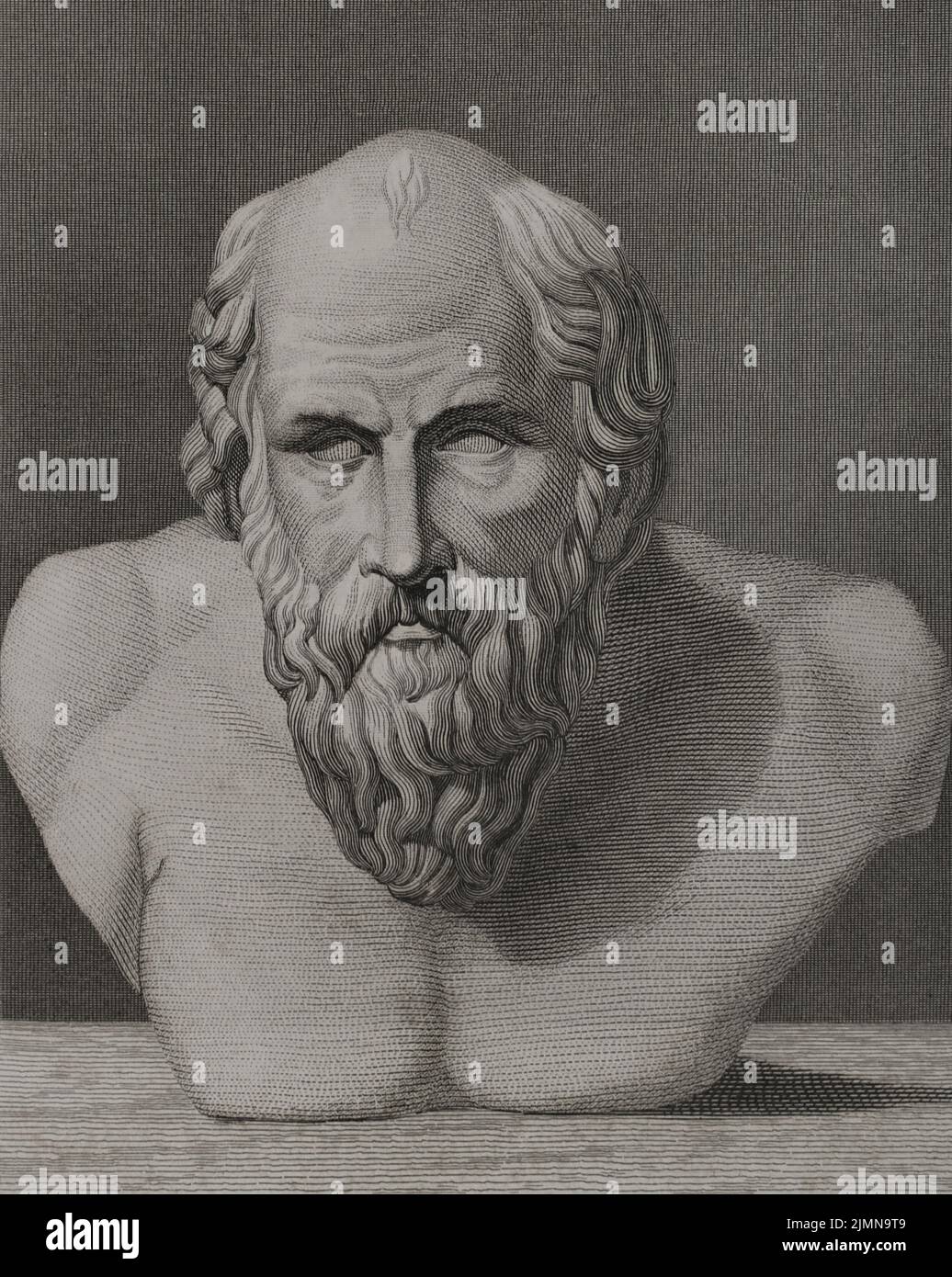 Diogenes of Sinope (ca. 412 BC - 323 BC). Greek philosopher belonging to the Cynic School. Engraving by A. Roca. 'Historia Universal', by César Cantú. Volume I, 1854. Author: Antonio Roca Sallent (1813-1864). Spanish engraver. Stock Photohttps://www.alamy.com/image-license-details/?v=1https://www.alamy.com/diogenes-of-sinope-ca-412-bc-323-bc-greek-philosopher-belonging-to-the-cynic-school-engraving-by-a-roca-historia-universal-by-csar-cant-volume-i-1854-author-antonio-roca-sallent-1813-1864-spanish-engraver-image477441785.html
Diogenes of Sinope (ca. 412 BC - 323 BC). Greek philosopher belonging to the Cynic School. Engraving by A. Roca. 'Historia Universal', by César Cantú. Volume I, 1854. Author: Antonio Roca Sallent (1813-1864). Spanish engraver. Stock Photohttps://www.alamy.com/image-license-details/?v=1https://www.alamy.com/diogenes-of-sinope-ca-412-bc-323-bc-greek-philosopher-belonging-to-the-cynic-school-engraving-by-a-roca-historia-universal-by-csar-cant-volume-i-1854-author-antonio-roca-sallent-1813-1864-spanish-engraver-image477441785.htmlRM2JMN9T9–Diogenes of Sinope (ca. 412 BC - 323 BC). Greek philosopher belonging to the Cynic School. Engraving by A. Roca. 'Historia Universal', by César Cantú. Volume I, 1854. Author: Antonio Roca Sallent (1813-1864). Spanish engraver.
 Diogenes Searching for an Honest Man, n.d. Stock Photohttps://www.alamy.com/image-license-details/?v=1https://www.alamy.com/diogenes-searching-for-an-honest-man-nd-image469801224.html
Diogenes Searching for an Honest Man, n.d. Stock Photohttps://www.alamy.com/image-license-details/?v=1https://www.alamy.com/diogenes-searching-for-an-honest-man-nd-image469801224.htmlRM2J89874–Diogenes Searching for an Honest Man, n.d.
 Antisthenes portrait, Ancient Greek philosopher. Stock Vectorhttps://www.alamy.com/image-license-details/?v=1https://www.alamy.com/antisthenes-portrait-ancient-greek-philosopher-image466141769.html
Antisthenes portrait, Ancient Greek philosopher. Stock Vectorhttps://www.alamy.com/image-license-details/?v=1https://www.alamy.com/antisthenes-portrait-ancient-greek-philosopher-image466141769.htmlRF2J2AGG9–Antisthenes portrait, Ancient Greek philosopher.
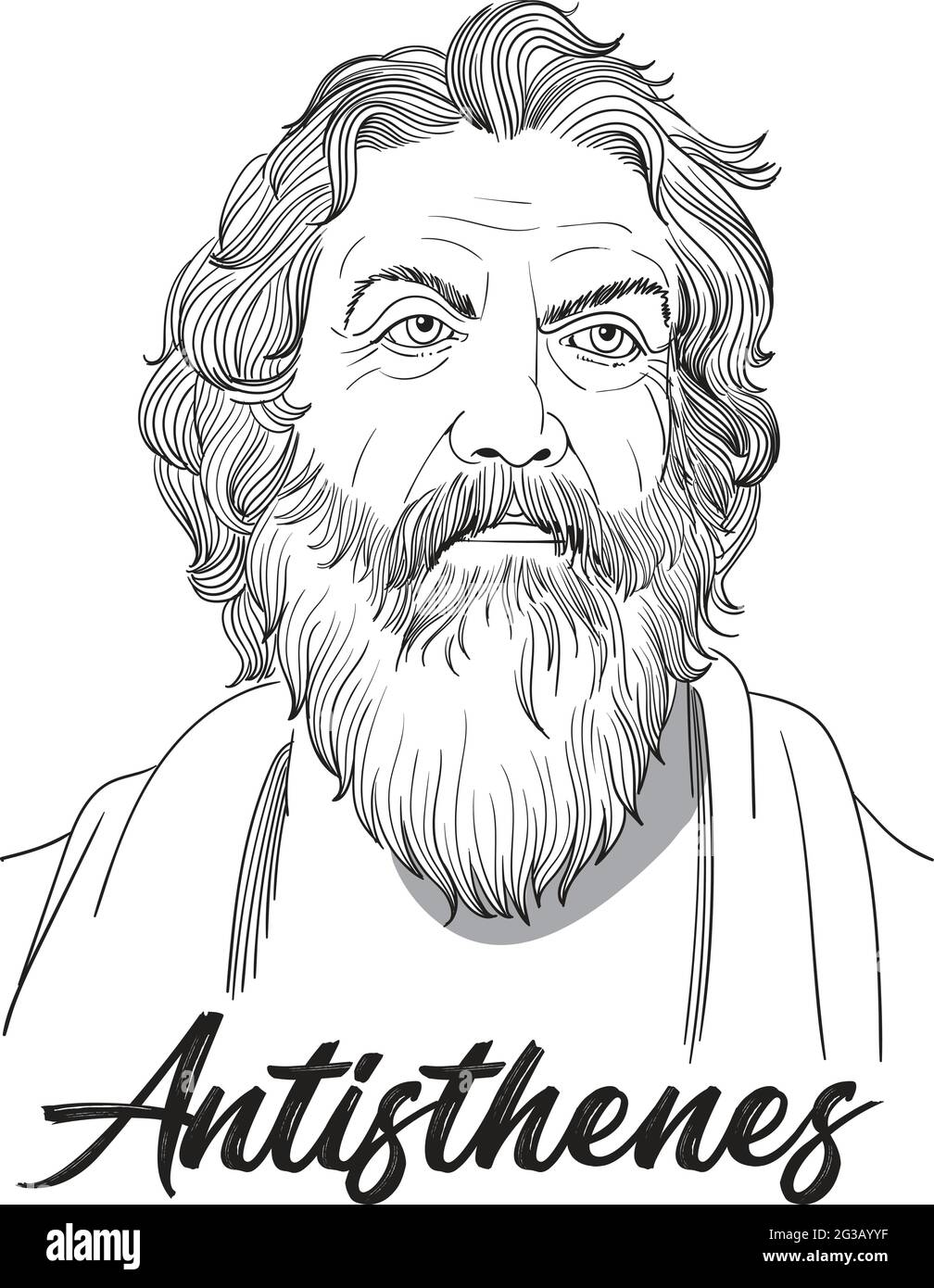 Antisthenes c. 446 – c. 366 BC) was a Greek philosopher and a pupil of Socrates Stock Vectorhttps://www.alamy.com/image-license-details/?v=1https://www.alamy.com/antisthenes-c-446-c-366-bc-was-a-greek-philosopher-and-a-pupil-of-socrates-image432344627.html
Antisthenes c. 446 – c. 366 BC) was a Greek philosopher and a pupil of Socrates Stock Vectorhttps://www.alamy.com/image-license-details/?v=1https://www.alamy.com/antisthenes-c-446-c-366-bc-was-a-greek-philosopher-and-a-pupil-of-socrates-image432344627.htmlRF2G3AYYF–Antisthenes c. 446 – c. 366 BC) was a Greek philosopher and a pupil of Socrates
 Statue of Alexander the Great & Diogenes in Corinth, Greece. Stock Photohttps://www.alamy.com/image-license-details/?v=1https://www.alamy.com/statue-of-alexander-the-great-diogenes-in-corinth-greece-image544480459.html
Statue of Alexander the Great & Diogenes in Corinth, Greece. Stock Photohttps://www.alamy.com/image-license-details/?v=1https://www.alamy.com/statue-of-alexander-the-great-diogenes-in-corinth-greece-image544480459.htmlRF2PHR6AK–Statue of Alexander the Great & Diogenes in Corinth, Greece.
 The Greek philosopher Diogenes (404-323 BC) seated in his earthenware tub in Athens. His companion dogs serve as emblems of his Cynic (Greek for dog-like) philosophy, which prioritized a life of austerity. Painting by Jean-Leon Gerome (1824–1904). Stock Photohttps://www.alamy.com/image-license-details/?v=1https://www.alamy.com/the-greek-philosopher-diogenes-404-323-bc-seated-in-his-earthenware-tub-in-athens-his-companion-dogs-serve-as-emblems-of-his-cynic-greek-for-dog-like-philosophy-which-prioritized-a-life-of-austerity-painting-by-jean-leon-gerome-18241904-image560416618.html
The Greek philosopher Diogenes (404-323 BC) seated in his earthenware tub in Athens. His companion dogs serve as emblems of his Cynic (Greek for dog-like) philosophy, which prioritized a life of austerity. Painting by Jean-Leon Gerome (1824–1904). Stock Photohttps://www.alamy.com/image-license-details/?v=1https://www.alamy.com/the-greek-philosopher-diogenes-404-323-bc-seated-in-his-earthenware-tub-in-athens-his-companion-dogs-serve-as-emblems-of-his-cynic-greek-for-dog-like-philosophy-which-prioritized-a-life-of-austerity-painting-by-jean-leon-gerome-18241904-image560416618.htmlRF2RFN536–The Greek philosopher Diogenes (404-323 BC) seated in his earthenware tub in Athens. His companion dogs serve as emblems of his Cynic (Greek for dog-like) philosophy, which prioritized a life of austerity. Painting by Jean-Leon Gerome (1824–1904).
 . Oeuvres de maitre François Rabelais : avec des remarques historiques et critiques de Mr. Le Duchat . Yy 3 VVLO t^^m^m^jmfy^m^^m^^m^mm^^^m^^m^m^^^^^ PROLOGUE DE LA UT HEUR. [Euveurs tres-Illuflres , & vous Goutteux tres-precieux, vifles-vousoncques Diogenes le Philofophe Cynic ? Si lavez veu, vous naviezperdu la veuëy ou je fuis vrayement fort iffu dintelligence &? de fenslogicah Ceji belle chofe veoir la clarté du ( vin & efcus) Soleil. Jendemande à ï Aveugle-né tant ronommé par les tres-facrées Bibles 2: le-quel ayant option de requérir tout ce quil vouldroit, par le commande-ment de celuy Stock Photohttps://www.alamy.com/image-license-details/?v=1https://www.alamy.com/oeuvres-de-maitre-franois-rabelais-avec-des-remarques-historiques-et-critiques-de-mr-le-duchat-yy-3-vvlo-tmmjmfymmmmmmmm-prologue-de-la-ut-heur-euveurs-tres-illuflres-vous-goutteux-tres-precieux-vifles-vousoncques-diogenes-le-philofophe-cynic-si-lavez-veu-vous-naviezperdu-la-veuy-ou-je-fuis-vrayement-fort-iffu-dintelligence-de-fenslogicah-ceji-belle-chofe-veoir-la-clart-du-vin-efcus-soleil-jendemande-aveugle-n-tant-ronomm-par-les-tres-facres-bibles-2-le-quel-ayant-option-de-requrir-tout-ce-quil-vouldroit-par-le-commande-ment-de-celuy-image370006602.html
. Oeuvres de maitre François Rabelais : avec des remarques historiques et critiques de Mr. Le Duchat . Yy 3 VVLO t^^m^m^jmfy^m^^m^^m^mm^^^m^^m^m^^^^^ PROLOGUE DE LA UT HEUR. [Euveurs tres-Illuflres , & vous Goutteux tres-precieux, vifles-vousoncques Diogenes le Philofophe Cynic ? Si lavez veu, vous naviezperdu la veuëy ou je fuis vrayement fort iffu dintelligence &? de fenslogicah Ceji belle chofe veoir la clarté du ( vin & efcus) Soleil. Jendemande à ï Aveugle-né tant ronommé par les tres-facrées Bibles 2: le-quel ayant option de requérir tout ce quil vouldroit, par le commande-ment de celuy Stock Photohttps://www.alamy.com/image-license-details/?v=1https://www.alamy.com/oeuvres-de-maitre-franois-rabelais-avec-des-remarques-historiques-et-critiques-de-mr-le-duchat-yy-3-vvlo-tmmjmfymmmmmmmm-prologue-de-la-ut-heur-euveurs-tres-illuflres-vous-goutteux-tres-precieux-vifles-vousoncques-diogenes-le-philofophe-cynic-si-lavez-veu-vous-naviezperdu-la-veuy-ou-je-fuis-vrayement-fort-iffu-dintelligence-de-fenslogicah-ceji-belle-chofe-veoir-la-clart-du-vin-efcus-soleil-jendemande-aveugle-n-tant-ronomm-par-les-tres-facres-bibles-2-le-quel-ayant-option-de-requrir-tout-ce-quil-vouldroit-par-le-commande-ment-de-celuy-image370006602.htmlRM2CDY75E–. Oeuvres de maitre François Rabelais : avec des remarques historiques et critiques de Mr. Le Duchat . Yy 3 VVLO t^^m^m^jmfy^m^^m^^m^mm^^^m^^m^m^^^^^ PROLOGUE DE LA UT HEUR. [Euveurs tres-Illuflres , & vous Goutteux tres-precieux, vifles-vousoncques Diogenes le Philofophe Cynic ? Si lavez veu, vous naviezperdu la veuëy ou je fuis vrayement fort iffu dintelligence &? de fenslogicah Ceji belle chofe veoir la clarté du ( vin & efcus) Soleil. Jendemande à ï Aveugle-né tant ronommé par les tres-facrées Bibles 2: le-quel ayant option de requérir tout ce quil vouldroit, par le commande-ment de celuy
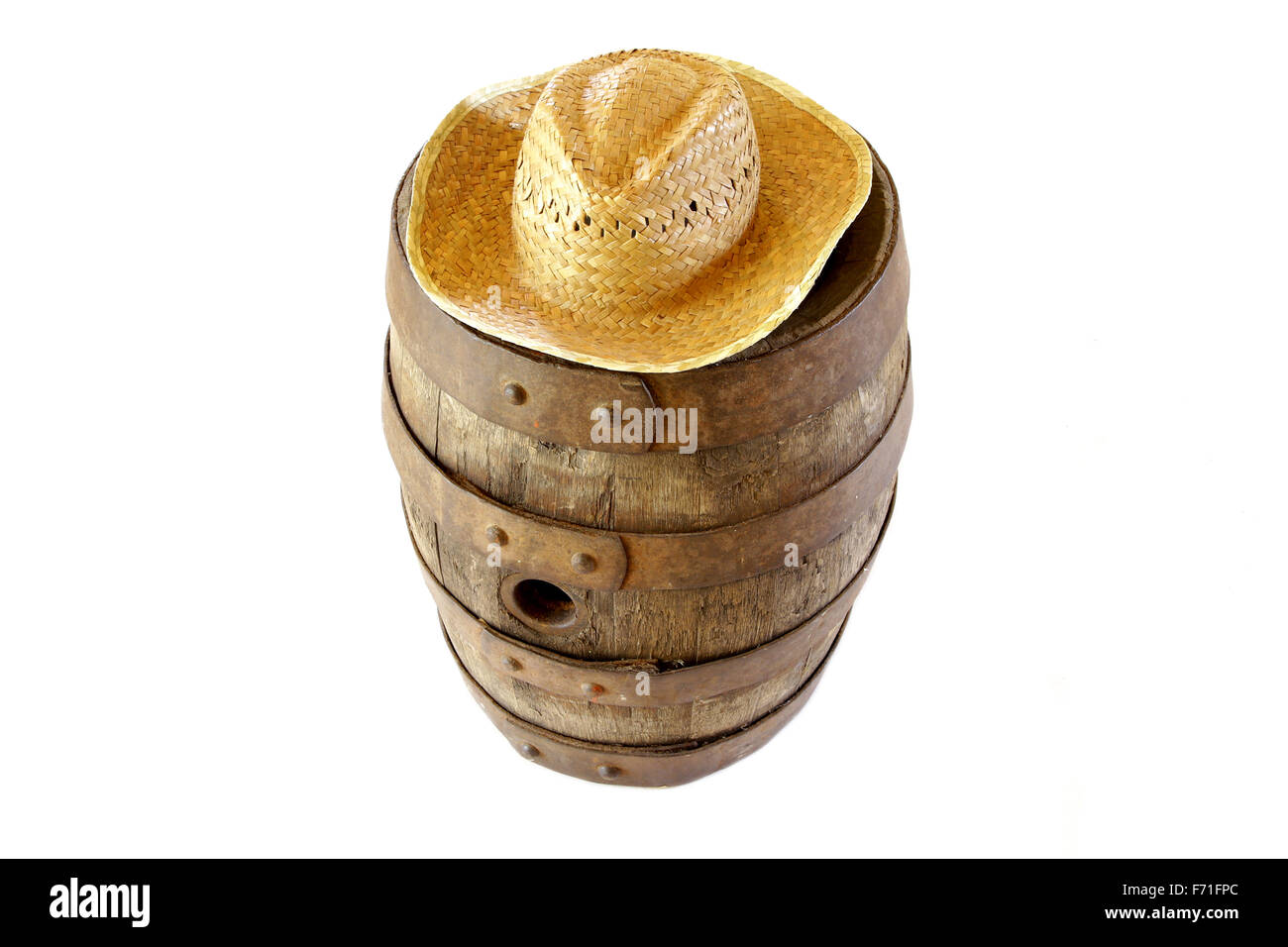 Diogenes of Sinope and barrel metaphor representing very old vintage cask and straw hat Stock Photohttps://www.alamy.com/image-license-details/?v=1https://www.alamy.com/stock-photo-diogenes-of-sinope-and-barrel-metaphor-representing-very-old-vintage-90388772.html
Diogenes of Sinope and barrel metaphor representing very old vintage cask and straw hat Stock Photohttps://www.alamy.com/image-license-details/?v=1https://www.alamy.com/stock-photo-diogenes-of-sinope-and-barrel-metaphor-representing-very-old-vintage-90388772.htmlRFF71FPC–Diogenes of Sinope and barrel metaphor representing very old vintage cask and straw hat
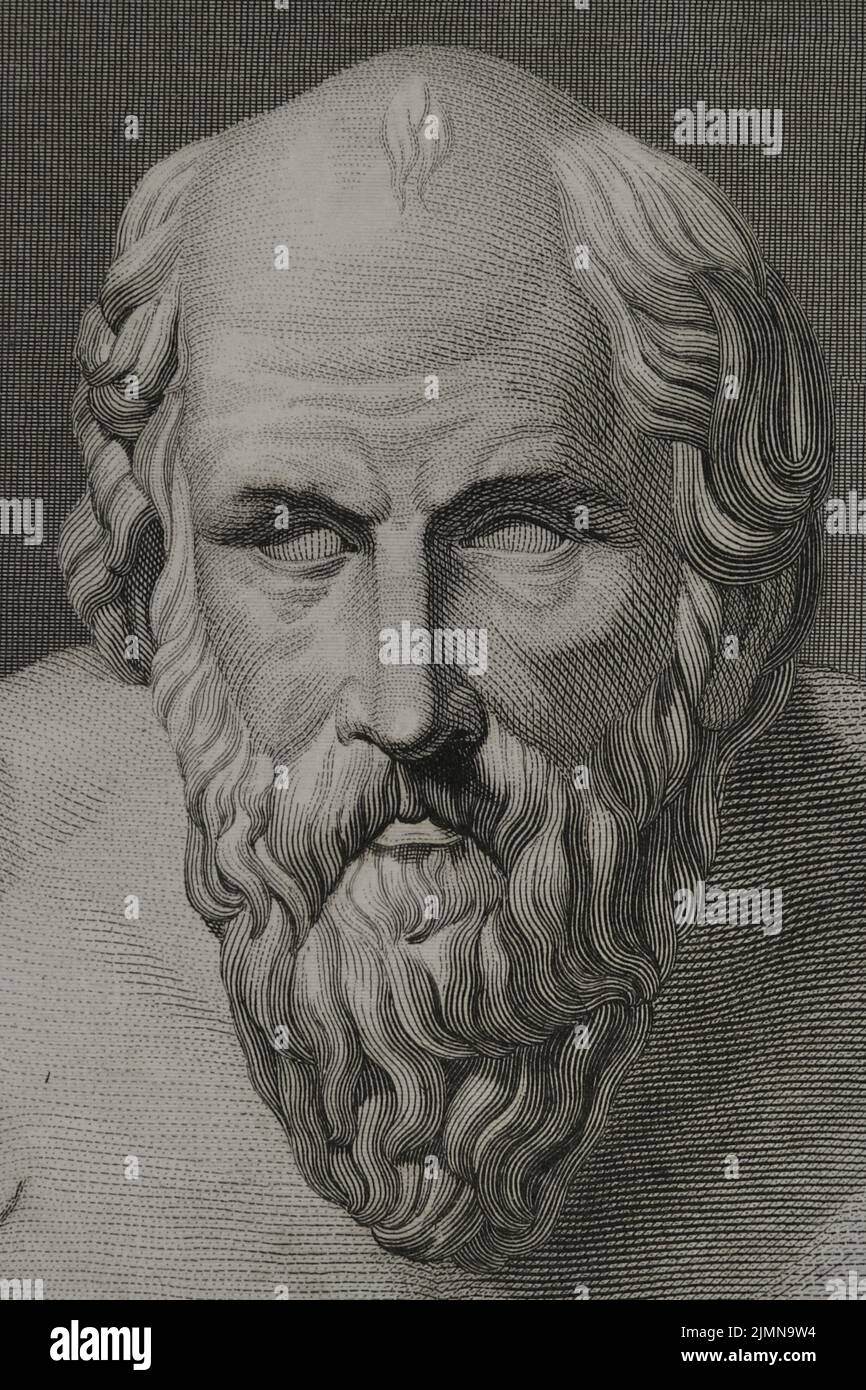 Diogenes of Sinope (ca. 412 BC - 323 BC). Greek philosopher belonging to the Cynic School. Engraving by A. Roca. Detail. 'Historia Universal', by César Cantú. Volume I, 1854. Author: Antonio Roca Sallent (1813-1864). Spanish engraver. Stock Photohttps://www.alamy.com/image-license-details/?v=1https://www.alamy.com/diogenes-of-sinope-ca-412-bc-323-bc-greek-philosopher-belonging-to-the-cynic-school-engraving-by-a-roca-detail-historia-universal-by-csar-cant-volume-i-1854-author-antonio-roca-sallent-1813-1864-spanish-engraver-image477441808.html
Diogenes of Sinope (ca. 412 BC - 323 BC). Greek philosopher belonging to the Cynic School. Engraving by A. Roca. Detail. 'Historia Universal', by César Cantú. Volume I, 1854. Author: Antonio Roca Sallent (1813-1864). Spanish engraver. Stock Photohttps://www.alamy.com/image-license-details/?v=1https://www.alamy.com/diogenes-of-sinope-ca-412-bc-323-bc-greek-philosopher-belonging-to-the-cynic-school-engraving-by-a-roca-detail-historia-universal-by-csar-cant-volume-i-1854-author-antonio-roca-sallent-1813-1864-spanish-engraver-image477441808.htmlRM2JMN9W4–Diogenes of Sinope (ca. 412 BC - 323 BC). Greek philosopher belonging to the Cynic School. Engraving by A. Roca. Detail. 'Historia Universal', by César Cantú. Volume I, 1854. Author: Antonio Roca Sallent (1813-1864). Spanish engraver.
 Diogenes in His Tub with Alexander and His Generals, 1810. Stock Photohttps://www.alamy.com/image-license-details/?v=1https://www.alamy.com/diogenes-in-his-tub-with-alexander-and-his-generals-1810-image462403737.html
Diogenes in His Tub with Alexander and His Generals, 1810. Stock Photohttps://www.alamy.com/image-license-details/?v=1https://www.alamy.com/diogenes-in-his-tub-with-alexander-and-his-generals-1810-image462403737.htmlRM2HT88K5–Diogenes in His Tub with Alexander and His Generals, 1810.
 Greek Cynic philosopher Diogenes of Sinope (4th century BC) standing in a jar or pithos. In carnelian. Diogene. In corniola. Copperplate engraving by Giovanni Battista Galestruzzi after Leonardo Agostini from Gemmae et Sculpturae Antiquae Depicti ab Leonardo Augustino Senesi, Abraham Blooteling, Amsterdam, 1685. Stock Photohttps://www.alamy.com/image-license-details/?v=1https://www.alamy.com/greek-cynic-philosopher-diogenes-of-sinope-4th-century-bc-standing-in-a-jar-or-pithos-in-carnelian-diogene-in-corniola-copperplate-engraving-by-giovanni-battista-galestruzzi-after-leonardo-agostini-from-gemmae-et-sculpturae-antiquae-depicti-ab-leonardo-augustino-senesi-abraham-blooteling-amsterdam-1685-image571812562.html
Greek Cynic philosopher Diogenes of Sinope (4th century BC) standing in a jar or pithos. In carnelian. Diogene. In corniola. Copperplate engraving by Giovanni Battista Galestruzzi after Leonardo Agostini from Gemmae et Sculpturae Antiquae Depicti ab Leonardo Augustino Senesi, Abraham Blooteling, Amsterdam, 1685. Stock Photohttps://www.alamy.com/image-license-details/?v=1https://www.alamy.com/greek-cynic-philosopher-diogenes-of-sinope-4th-century-bc-standing-in-a-jar-or-pithos-in-carnelian-diogene-in-corniola-copperplate-engraving-by-giovanni-battista-galestruzzi-after-leonardo-agostini-from-gemmae-et-sculpturae-antiquae-depicti-ab-leonardo-augustino-senesi-abraham-blooteling-amsterdam-1685-image571812562.htmlRM2T688N6–Greek Cynic philosopher Diogenes of Sinope (4th century BC) standing in a jar or pithos. In carnelian. Diogene. In corniola. Copperplate engraving by Giovanni Battista Galestruzzi after Leonardo Agostini from Gemmae et Sculpturae Antiquae Depicti ab Leonardo Augustino Senesi, Abraham Blooteling, Amsterdam, 1685.
 Portrait Head of Diogenes, late 2nd century A.D. Stock Photohttps://www.alamy.com/image-license-details/?v=1https://www.alamy.com/portrait-head-of-diogenes-late-2nd-century-ad-image626620512.html
Portrait Head of Diogenes, late 2nd century A.D. Stock Photohttps://www.alamy.com/image-license-details/?v=1https://www.alamy.com/portrait-head-of-diogenes-late-2nd-century-ad-image626620512.htmlRM2YBD0T0–Portrait Head of Diogenes, late 2nd century A.D.
 Relief depicting a dog and a wild boar facing each other. It illustrates the citation of the Cynics, disciples of Diogenes. 'As a small dog hinders a boar, the weaker can dominate the stronger.' Stone. 2nd century. Found in Albertus street, Cologne, Germany. Roman-Germanic Museum. Cologne. Germany. Stock Photohttps://www.alamy.com/image-license-details/?v=1https://www.alamy.com/relief-depicting-a-dog-and-a-wild-boar-facing-each-other-it-illustrates-the-citation-of-the-cynics-disciples-of-diogenes-as-a-small-dog-hinders-a-boar-the-weaker-can-dominate-the-stronger-stone-2nd-century-found-in-albertus-street-cologne-germany-roman-germanic-museum-cologne-germany-image220337715.html
Relief depicting a dog and a wild boar facing each other. It illustrates the citation of the Cynics, disciples of Diogenes. 'As a small dog hinders a boar, the weaker can dominate the stronger.' Stone. 2nd century. Found in Albertus street, Cologne, Germany. Roman-Germanic Museum. Cologne. Germany. Stock Photohttps://www.alamy.com/image-license-details/?v=1https://www.alamy.com/relief-depicting-a-dog-and-a-wild-boar-facing-each-other-it-illustrates-the-citation-of-the-cynics-disciples-of-diogenes-as-a-small-dog-hinders-a-boar-the-weaker-can-dominate-the-stronger-stone-2nd-century-found-in-albertus-street-cologne-germany-roman-germanic-museum-cologne-germany-image220337715.htmlRMPPD703–Relief depicting a dog and a wild boar facing each other. It illustrates the citation of the Cynics, disciples of Diogenes. 'As a small dog hinders a boar, the weaker can dominate the stronger.' Stone. 2nd century. Found in Albertus street, Cologne, Germany. Roman-Germanic Museum. Cologne. Germany.
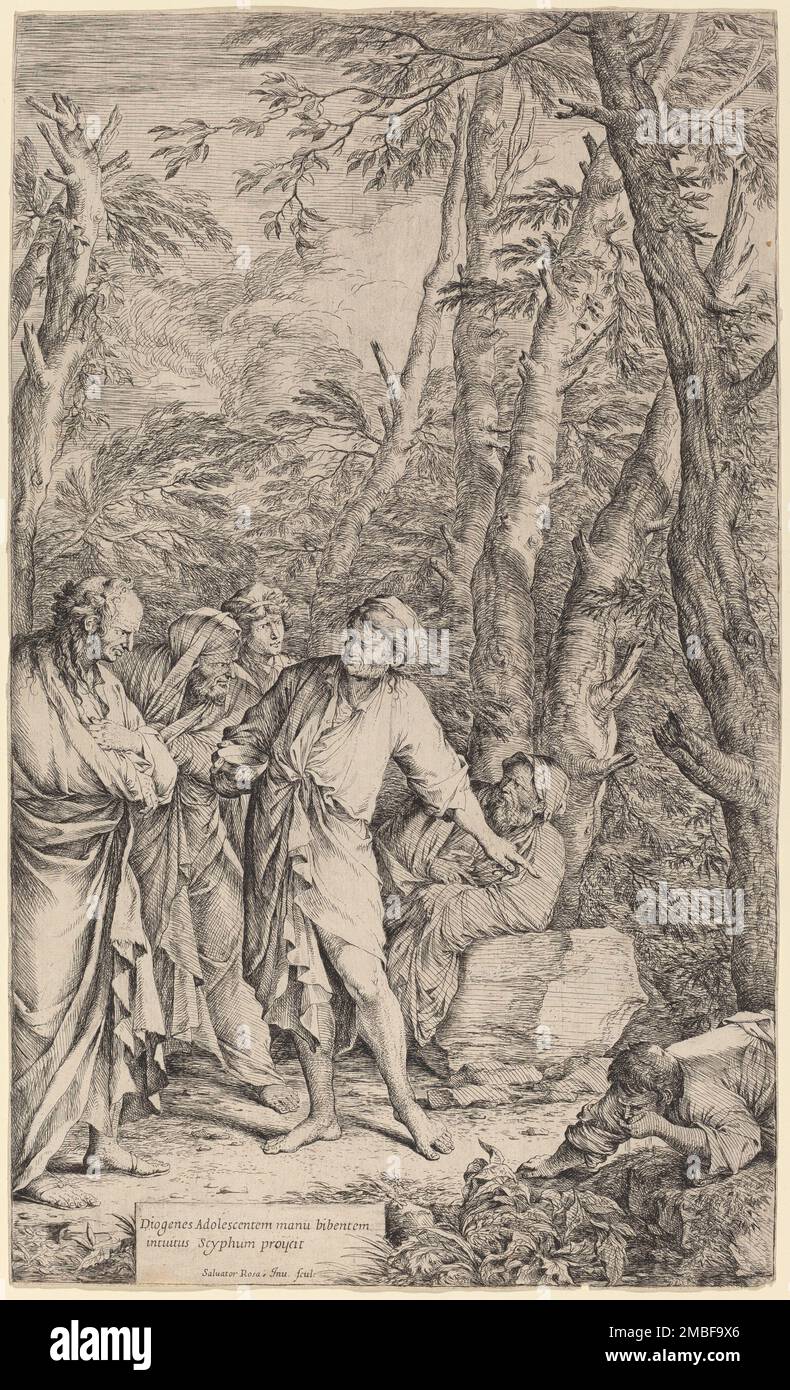 Diogenes Casting away his Bowl, 1662. Stock Photohttps://www.alamy.com/image-license-details/?v=1https://www.alamy.com/diogenes-casting-away-his-bowl-1662-image506198958.html
Diogenes Casting away his Bowl, 1662. Stock Photohttps://www.alamy.com/image-license-details/?v=1https://www.alamy.com/diogenes-casting-away-his-bowl-1662-image506198958.htmlRM2MBF9X6–Diogenes Casting away his Bowl, 1662.
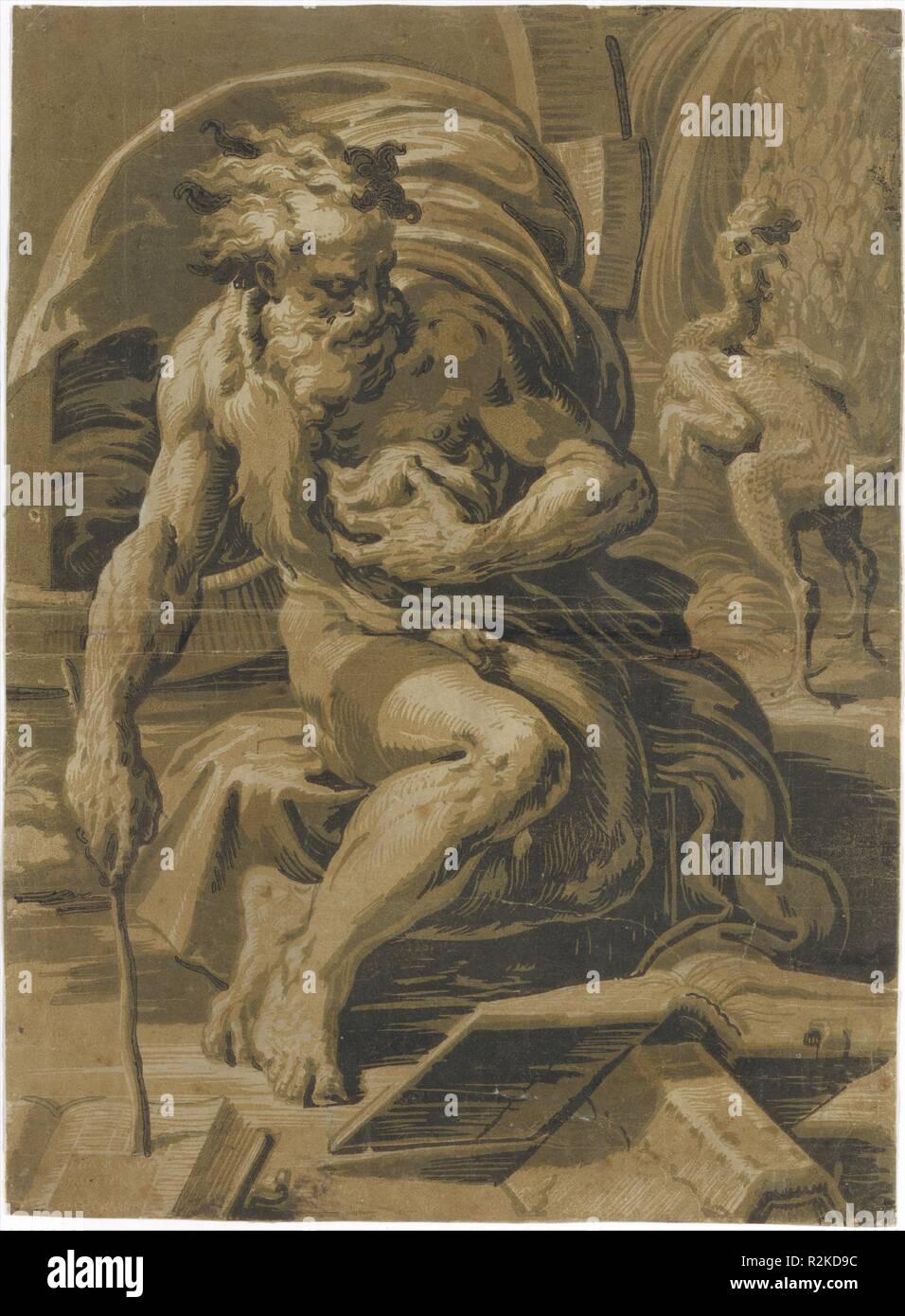 Diogenes, seated before his barrel, reading from a book, a plucked hen standing behind him at right. Artist: After Parmigianino (Girolamo Francesco Maria Mazzola) (Italian, Parma 1503-1540 Casalmaggiore); Ugo da Carpi (Italian, Carpi ca. 1480-1532 Bologna). Dimensions: Image: 18 11/16 x 13 5/8 in. (47.5 x 34.6 cm) Mount: 28 x 22 in. (71.1 x 55.9 cm). Date: 1520-30. Ugo da Carpi was the first Italian artist to experiment with a multiblock woodcut technique known as chiaroscuro. The method requires a different block for each shade; the blocks are inked and printed one over the other to create Stock Photohttps://www.alamy.com/image-license-details/?v=1https://www.alamy.com/diogenes-seated-before-his-barrel-reading-from-a-book-a-plucked-hen-standing-behind-him-at-right-artist-after-parmigianino-girolamo-francesco-maria-mazzola-italian-parma-1503-1540-casalmaggiore-ugo-da-carpi-italian-carpi-ca-1480-1532-bologna-dimensions-image-18-1116-x-13-58-in-475-x-346-cm-mount-28-x-22-in-711-x-559-cm-date-1520-30-ugo-da-carpi-was-the-first-italian-artist-to-experiment-with-a-multiblock-woodcut-technique-known-as-chiaroscuro-the-method-requires-a-different-block-for-each-shade-the-blocks-are-inked-and-printed-one-over-the-other-to-create-image225391640.html
Diogenes, seated before his barrel, reading from a book, a plucked hen standing behind him at right. Artist: After Parmigianino (Girolamo Francesco Maria Mazzola) (Italian, Parma 1503-1540 Casalmaggiore); Ugo da Carpi (Italian, Carpi ca. 1480-1532 Bologna). Dimensions: Image: 18 11/16 x 13 5/8 in. (47.5 x 34.6 cm) Mount: 28 x 22 in. (71.1 x 55.9 cm). Date: 1520-30. Ugo da Carpi was the first Italian artist to experiment with a multiblock woodcut technique known as chiaroscuro. The method requires a different block for each shade; the blocks are inked and printed one over the other to create Stock Photohttps://www.alamy.com/image-license-details/?v=1https://www.alamy.com/diogenes-seated-before-his-barrel-reading-from-a-book-a-plucked-hen-standing-behind-him-at-right-artist-after-parmigianino-girolamo-francesco-maria-mazzola-italian-parma-1503-1540-casalmaggiore-ugo-da-carpi-italian-carpi-ca-1480-1532-bologna-dimensions-image-18-1116-x-13-58-in-475-x-346-cm-mount-28-x-22-in-711-x-559-cm-date-1520-30-ugo-da-carpi-was-the-first-italian-artist-to-experiment-with-a-multiblock-woodcut-technique-known-as-chiaroscuro-the-method-requires-a-different-block-for-each-shade-the-blocks-are-inked-and-printed-one-over-the-other-to-create-image225391640.htmlRMR2KD9C–Diogenes, seated before his barrel, reading from a book, a plucked hen standing behind him at right. Artist: After Parmigianino (Girolamo Francesco Maria Mazzola) (Italian, Parma 1503-1540 Casalmaggiore); Ugo da Carpi (Italian, Carpi ca. 1480-1532 Bologna). Dimensions: Image: 18 11/16 x 13 5/8 in. (47.5 x 34.6 cm) Mount: 28 x 22 in. (71.1 x 55.9 cm). Date: 1520-30. Ugo da Carpi was the first Italian artist to experiment with a multiblock woodcut technique known as chiaroscuro. The method requires a different block for each shade; the blocks are inked and printed one over the other to create
 Diogenes Casting Away His Bowl, 1615-1673. Stock Photohttps://www.alamy.com/image-license-details/?v=1https://www.alamy.com/diogenes-casting-away-his-bowl-1615-1673-image506198974.html
Diogenes Casting Away His Bowl, 1615-1673. Stock Photohttps://www.alamy.com/image-license-details/?v=1https://www.alamy.com/diogenes-casting-away-his-bowl-1615-1673-image506198974.htmlRM2MBF9XP–Diogenes Casting Away His Bowl, 1615-1673.
 Nicolas Poussin / 'Landscape with Buildings', 1648-1650, French School, Oil on canvas, 120 cm x 187 cm, P02310. Museum: MUSEO DEL PRADO, MADRID, SPAIN. Stock Photohttps://www.alamy.com/image-license-details/?v=1https://www.alamy.com/nicolas-poussin-landscape-with-buildings-1648-1650-french-school-oil-on-canvas-120-cm-x-187-cm-p02310-museum-museo-del-prado-madrid-spain-image630885433.html
Nicolas Poussin / 'Landscape with Buildings', 1648-1650, French School, Oil on canvas, 120 cm x 187 cm, P02310. Museum: MUSEO DEL PRADO, MADRID, SPAIN. Stock Photohttps://www.alamy.com/image-license-details/?v=1https://www.alamy.com/nicolas-poussin-landscape-with-buildings-1648-1650-french-school-oil-on-canvas-120-cm-x-187-cm-p02310-museum-museo-del-prado-madrid-spain-image630885433.htmlRM2YJB8PH–Nicolas Poussin / 'Landscape with Buildings', 1648-1650, French School, Oil on canvas, 120 cm x 187 cm, P02310. Museum: MUSEO DEL PRADO, MADRID, SPAIN.
